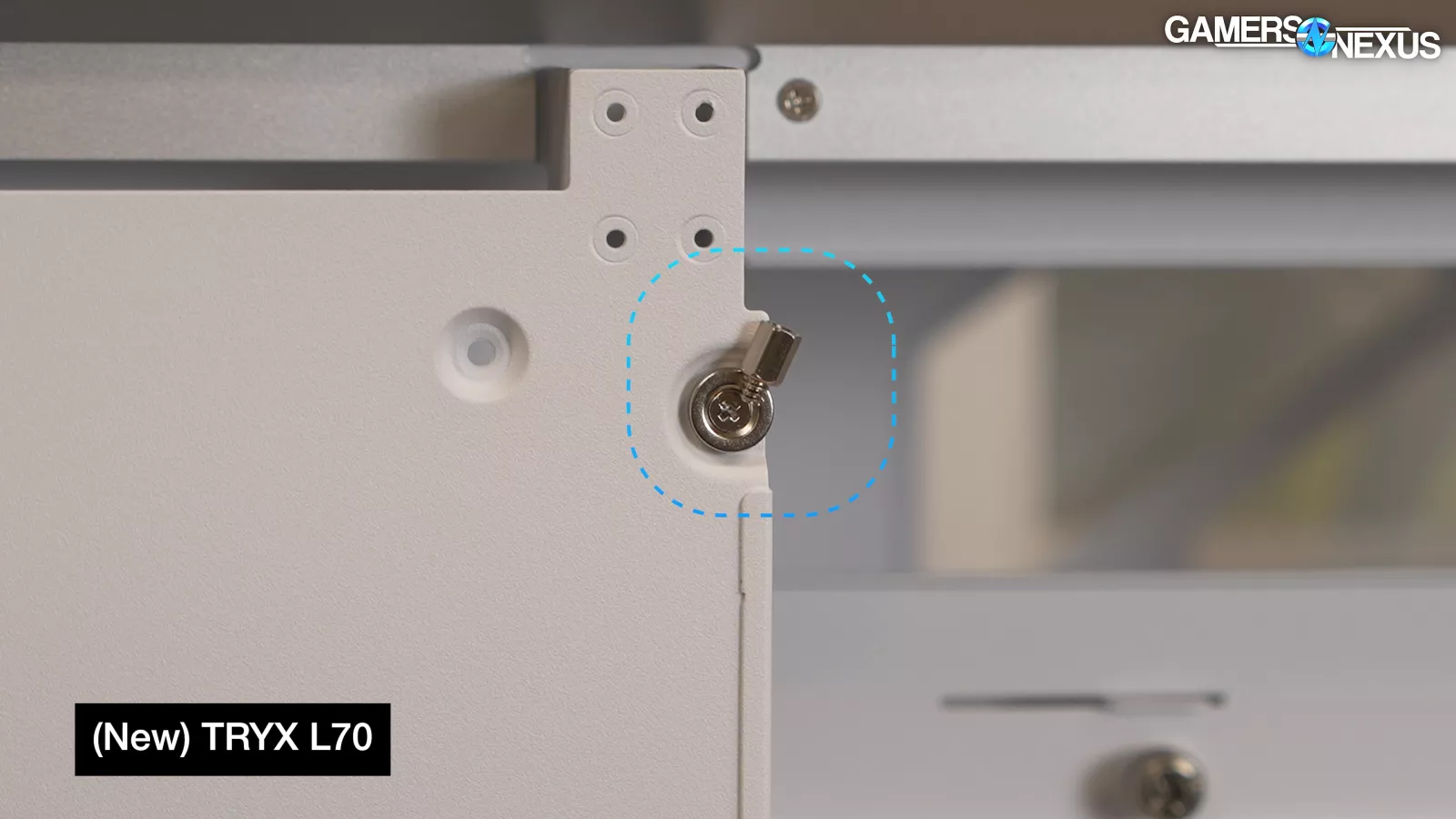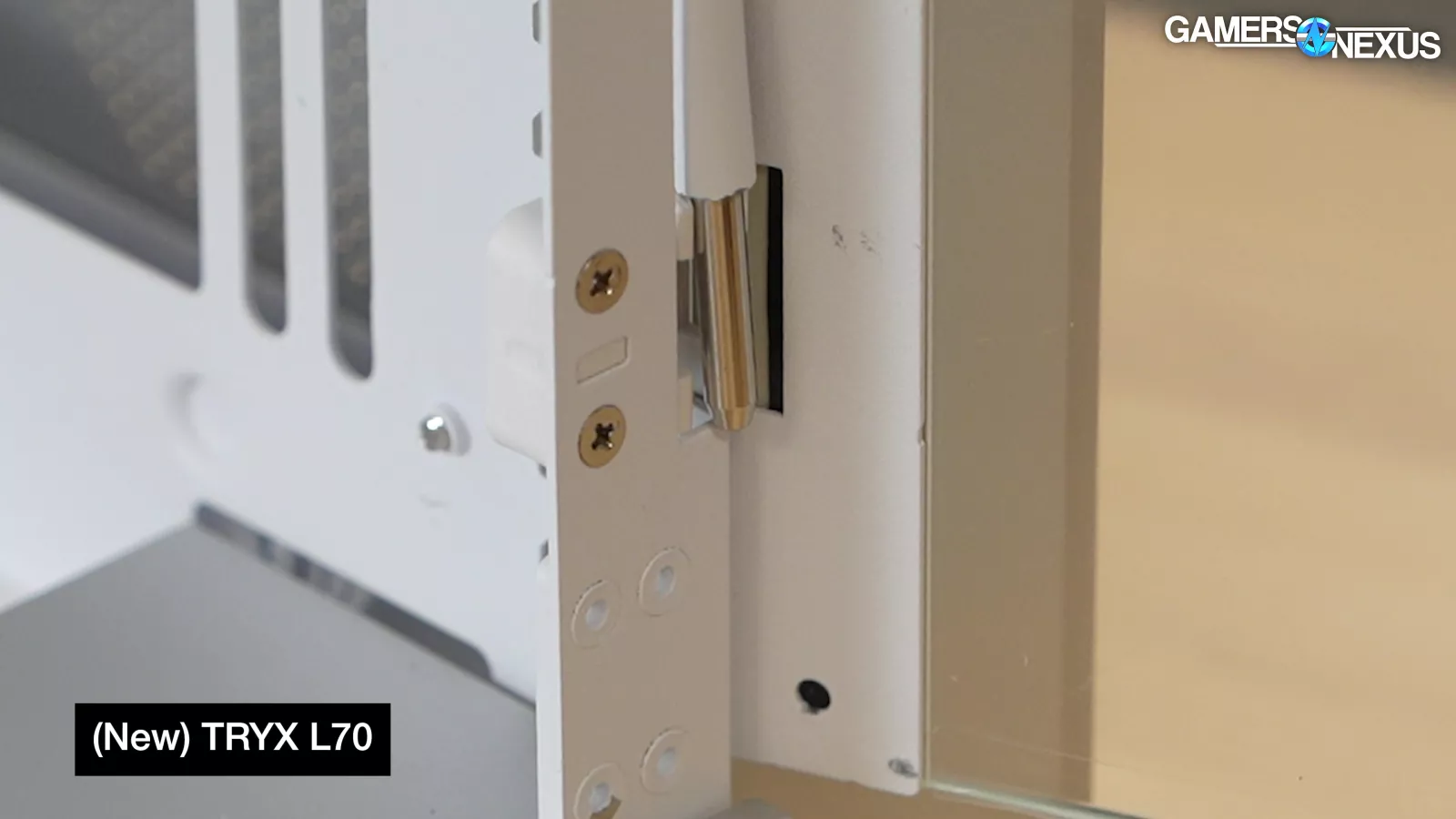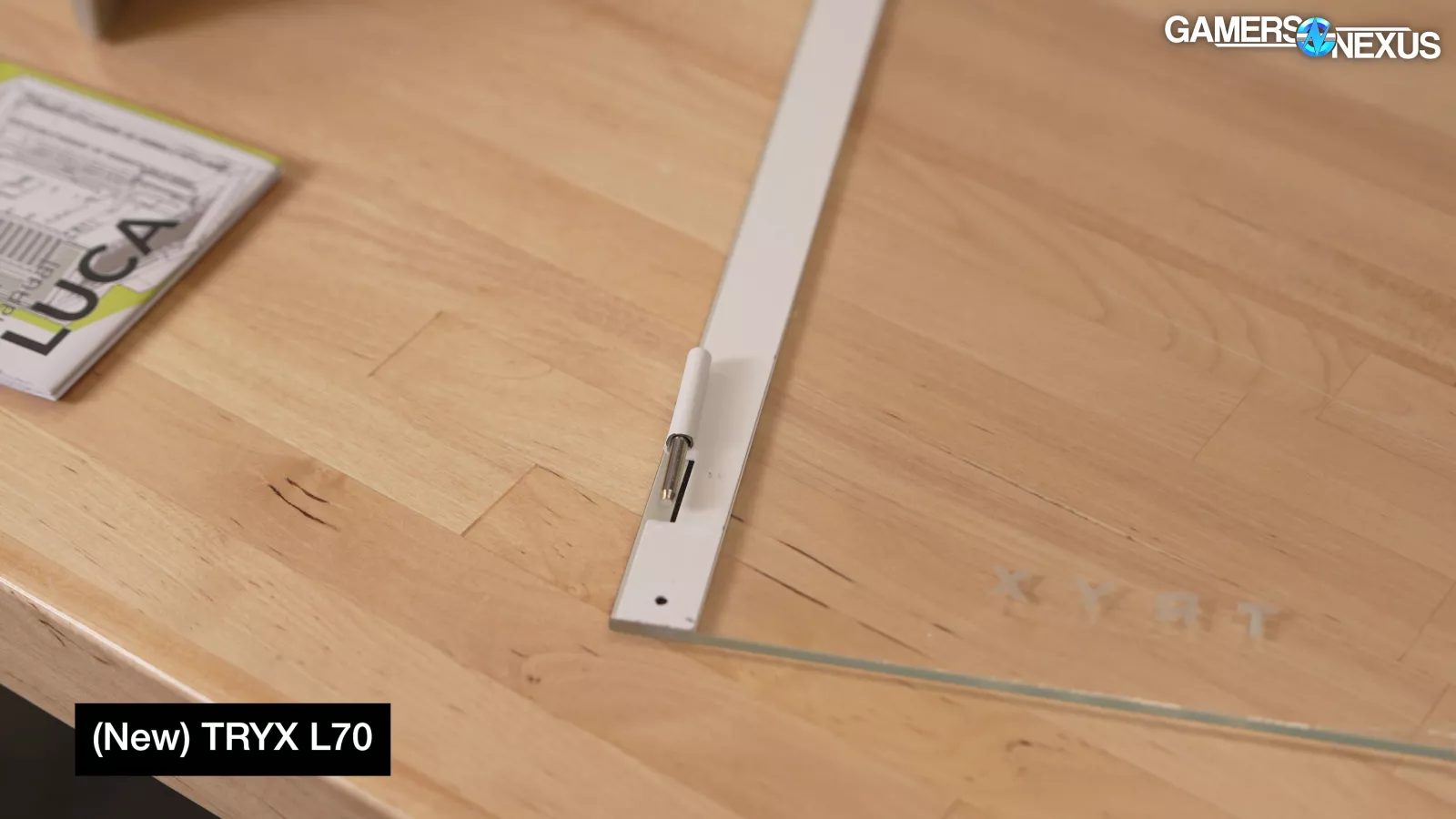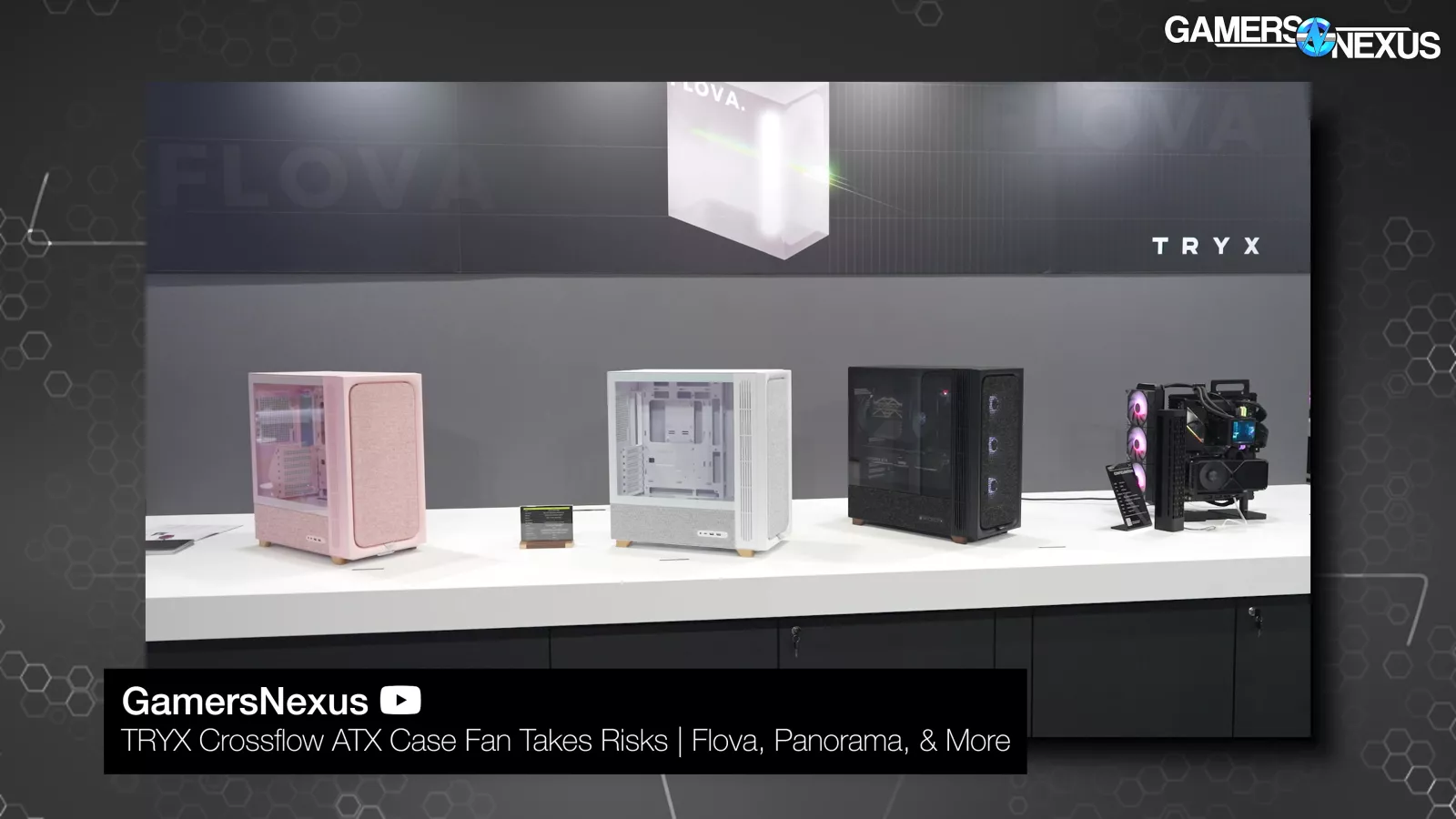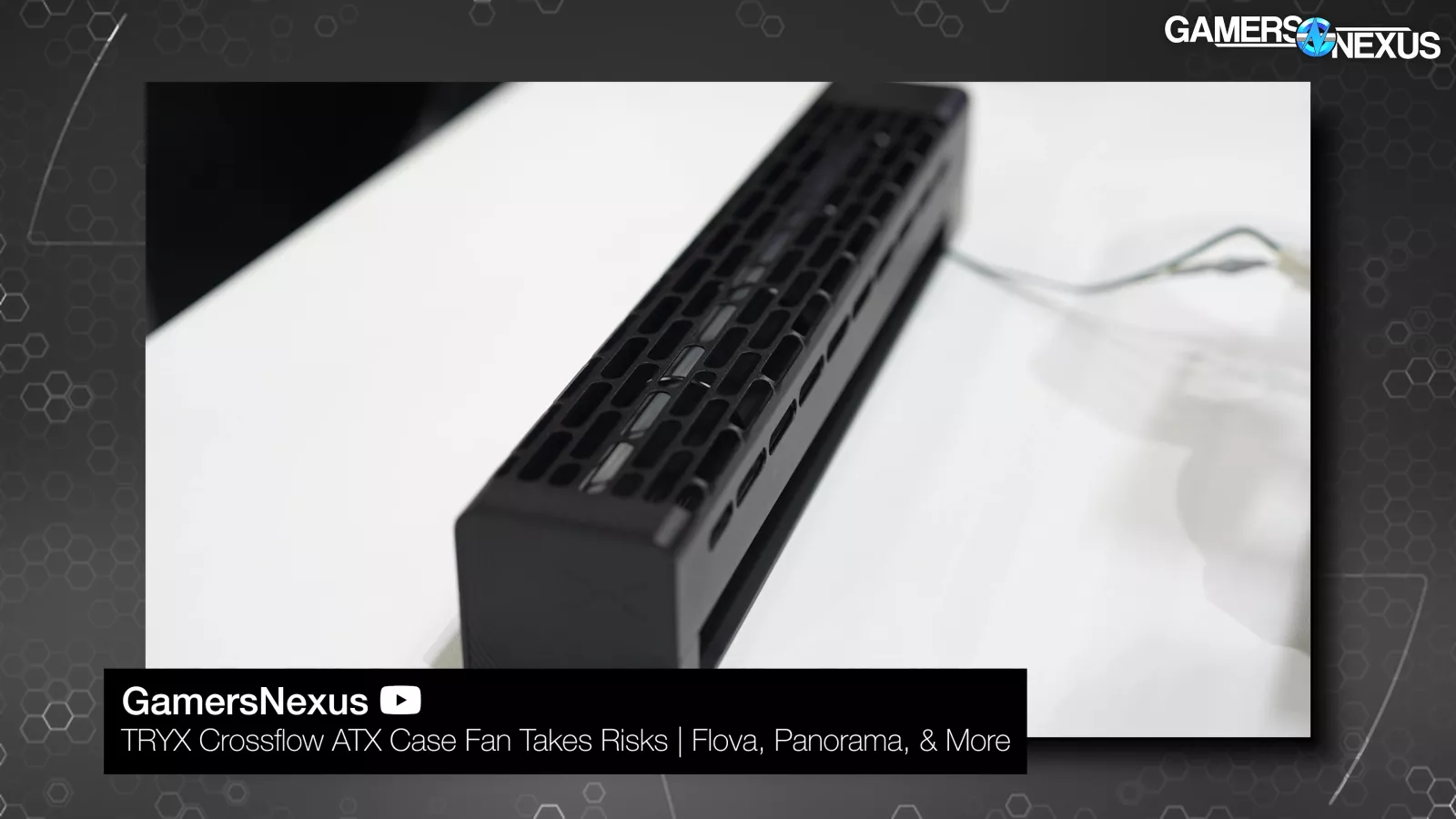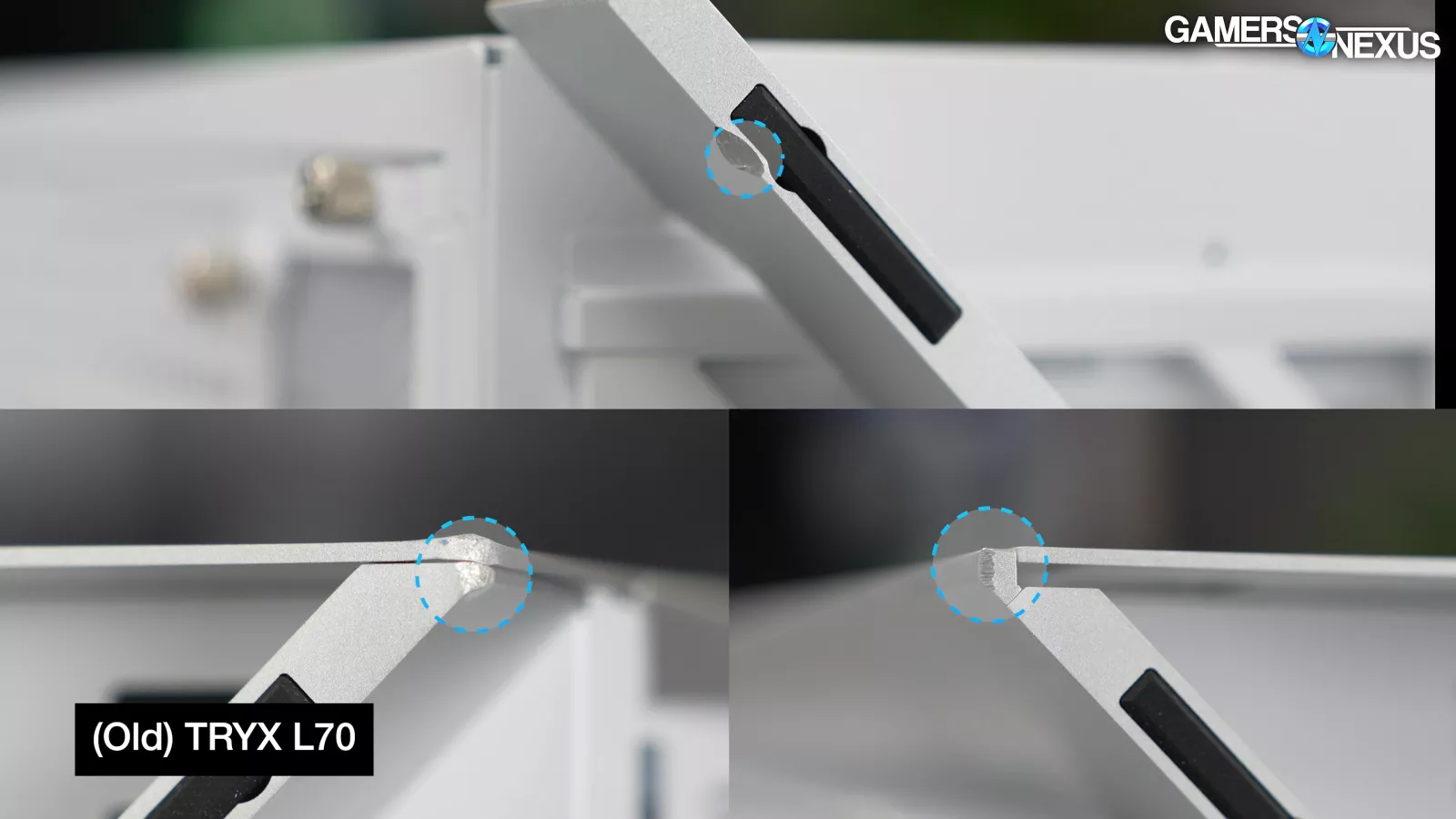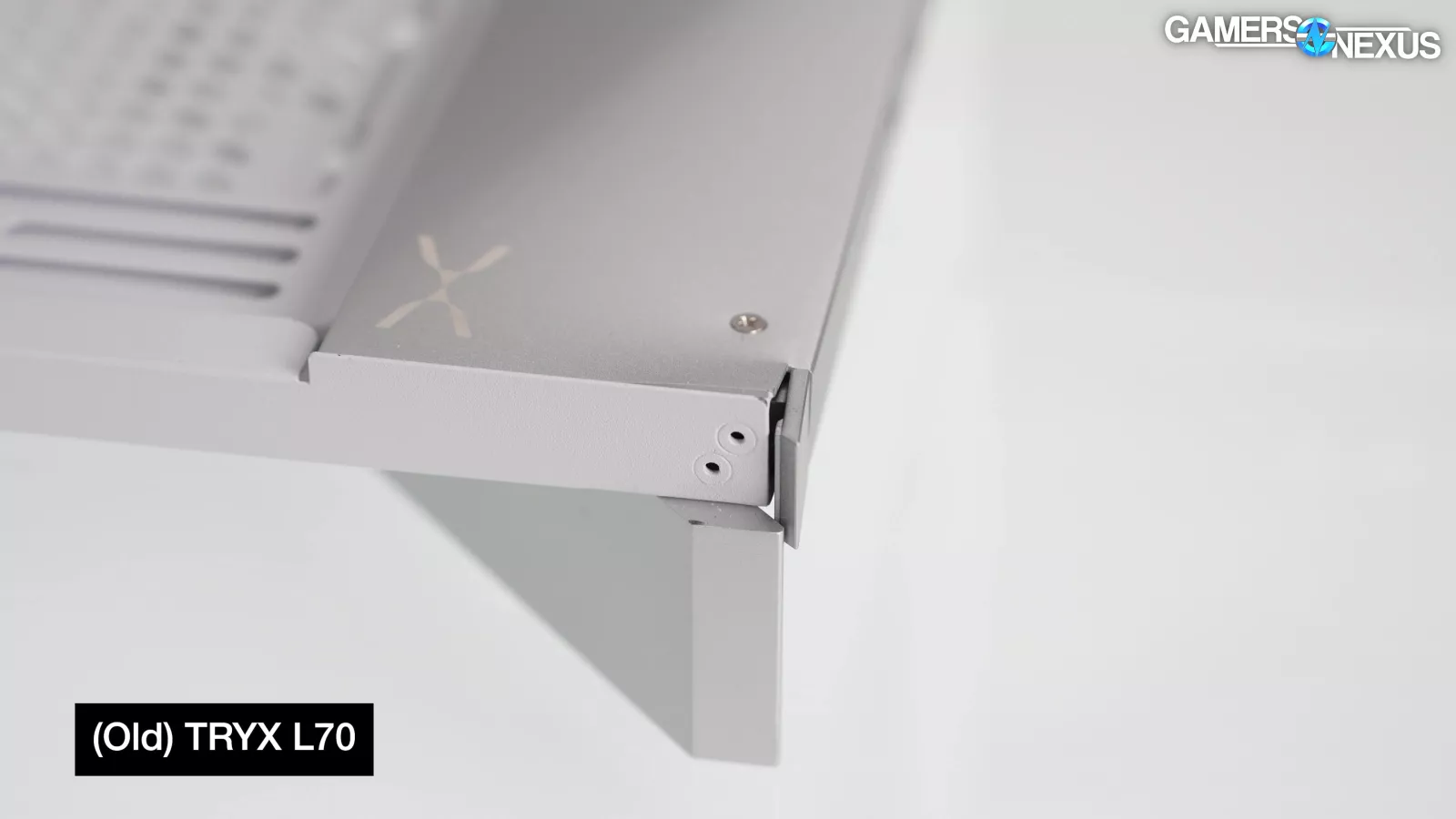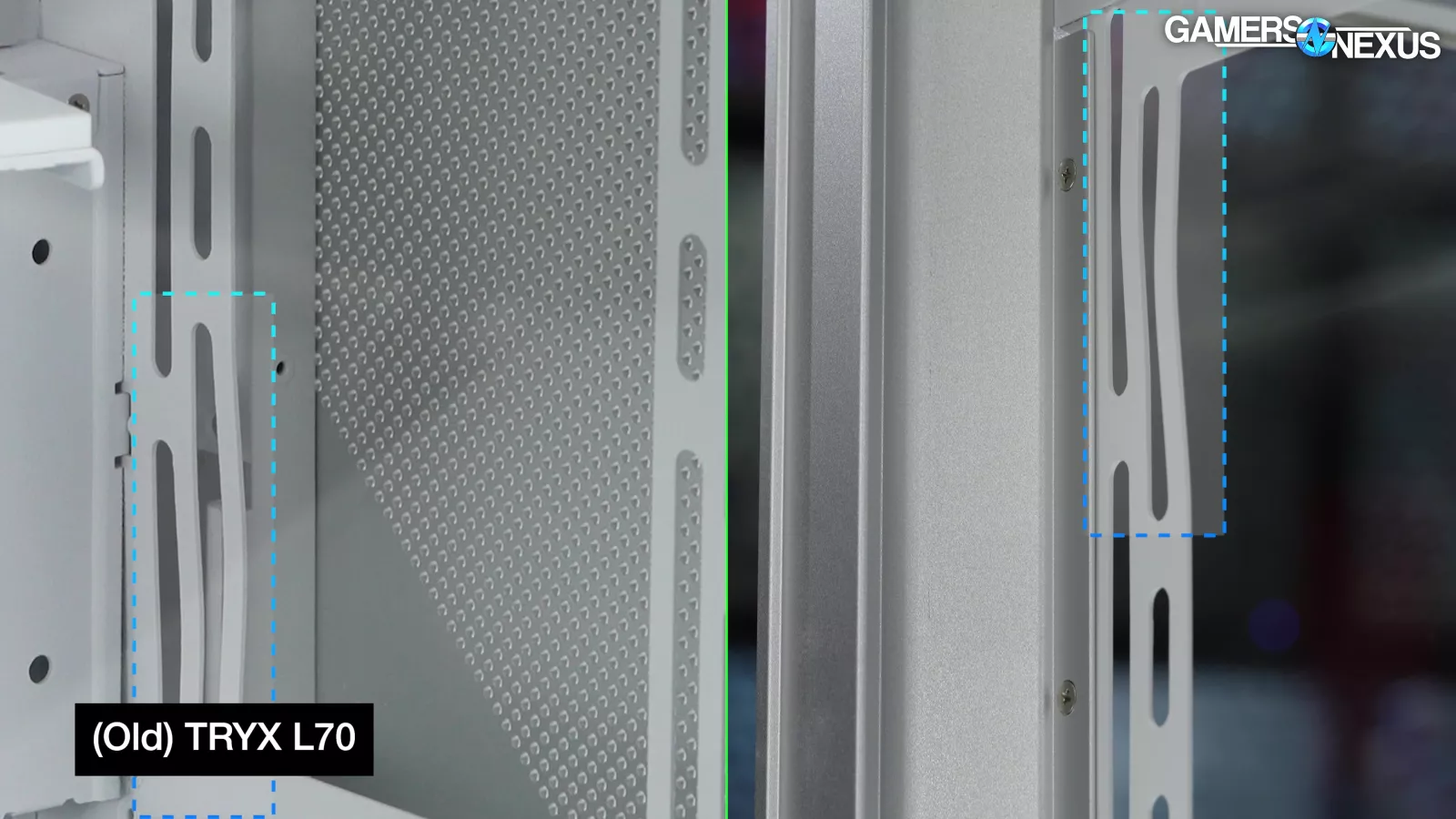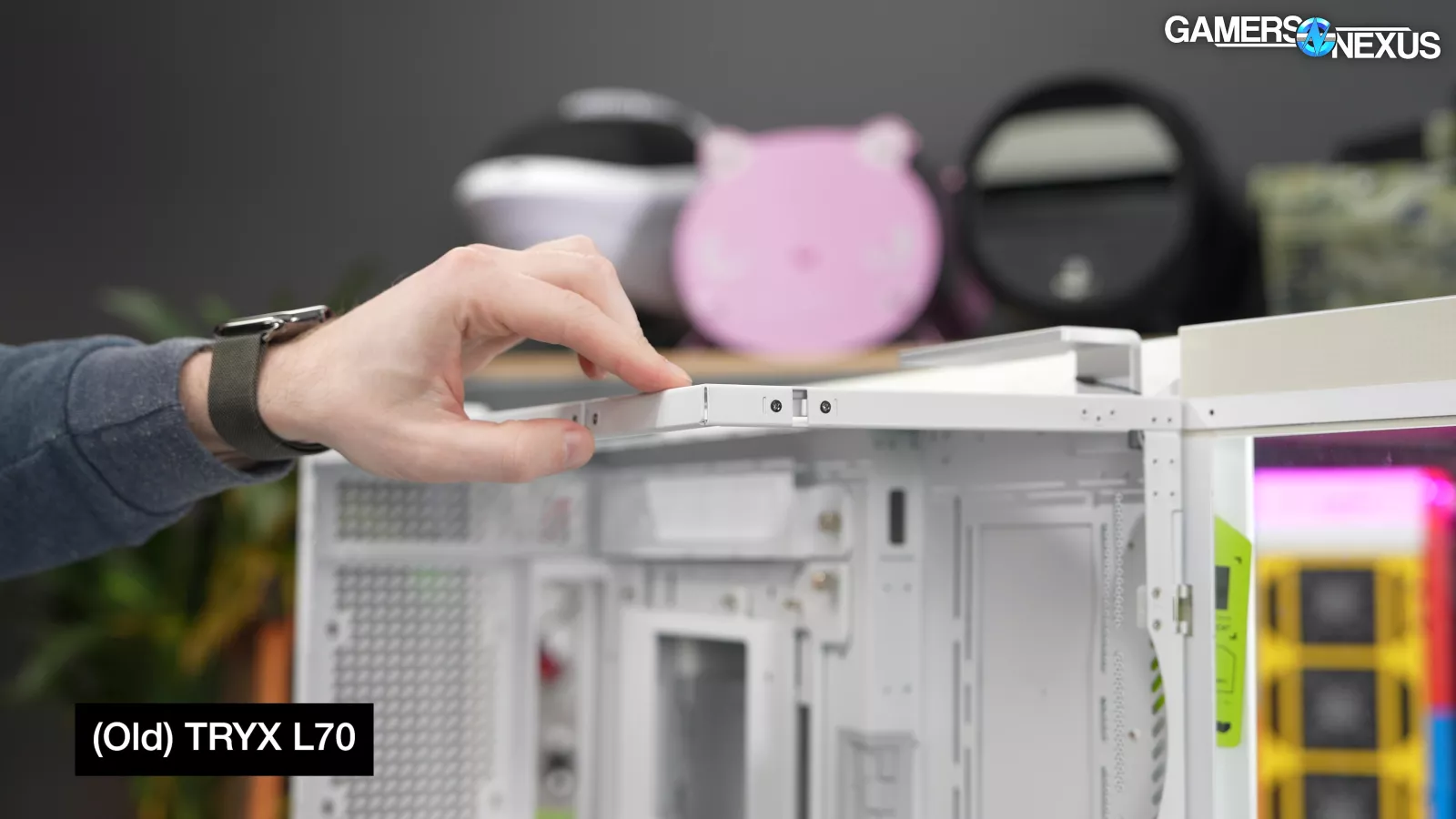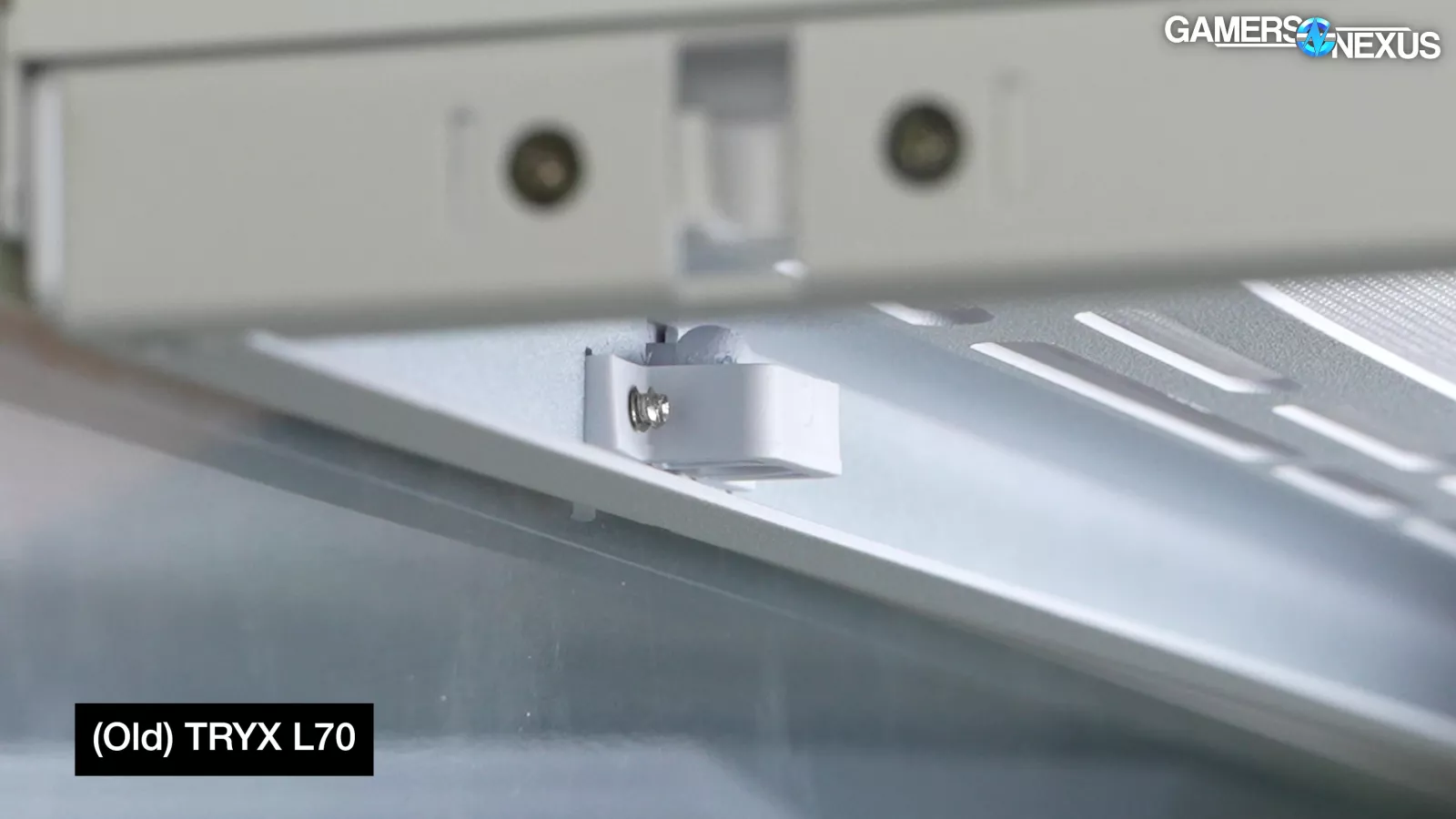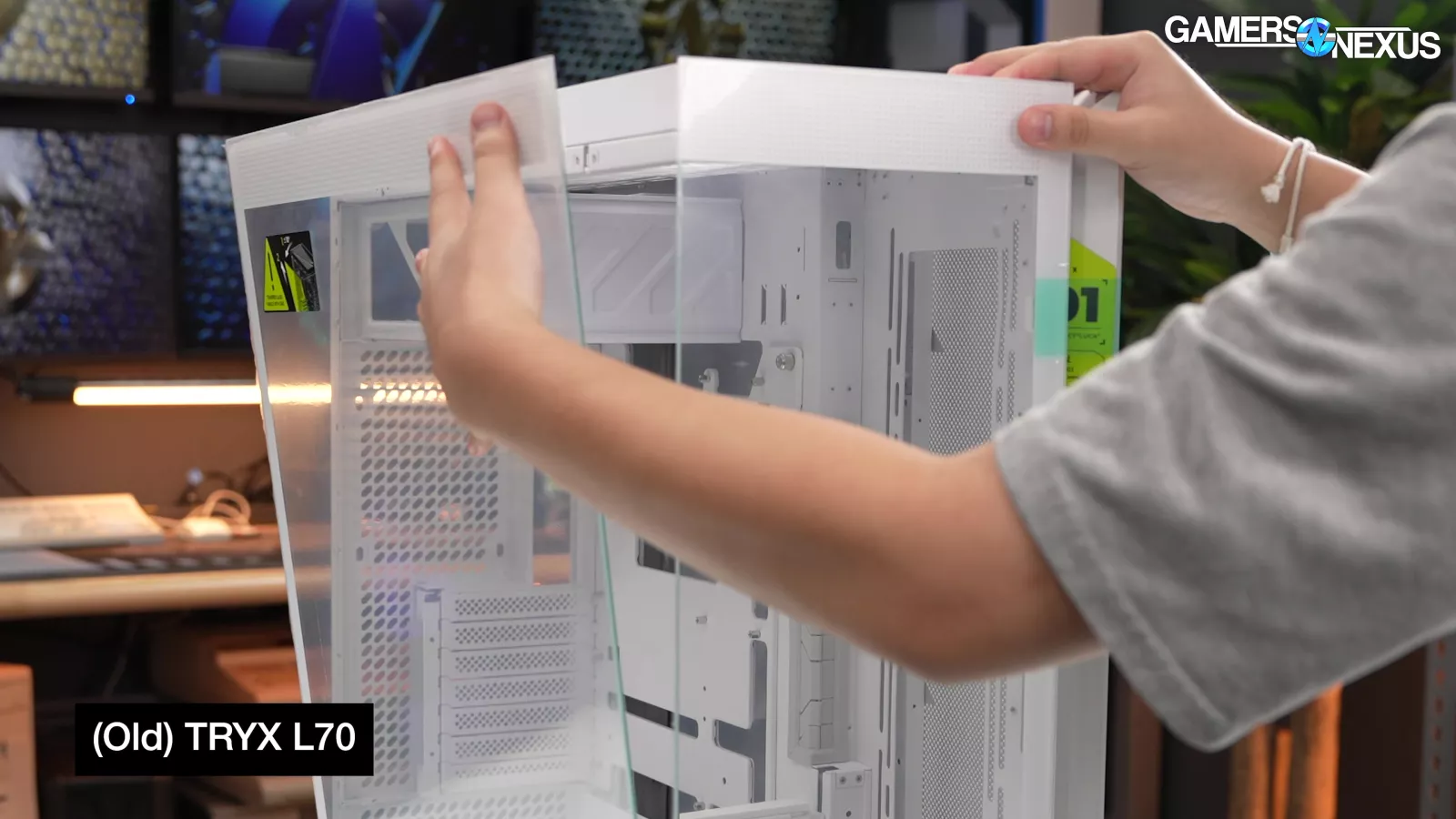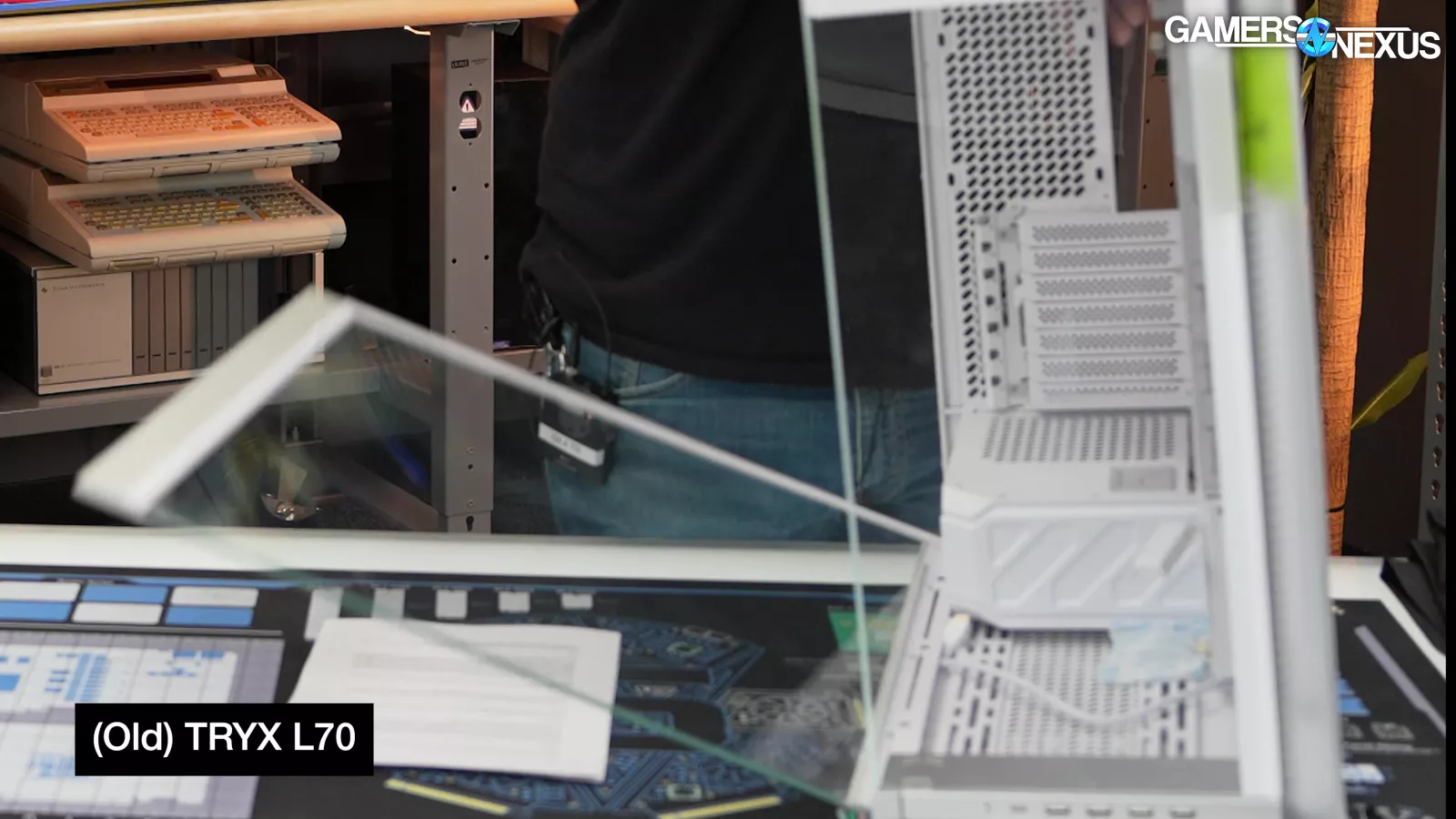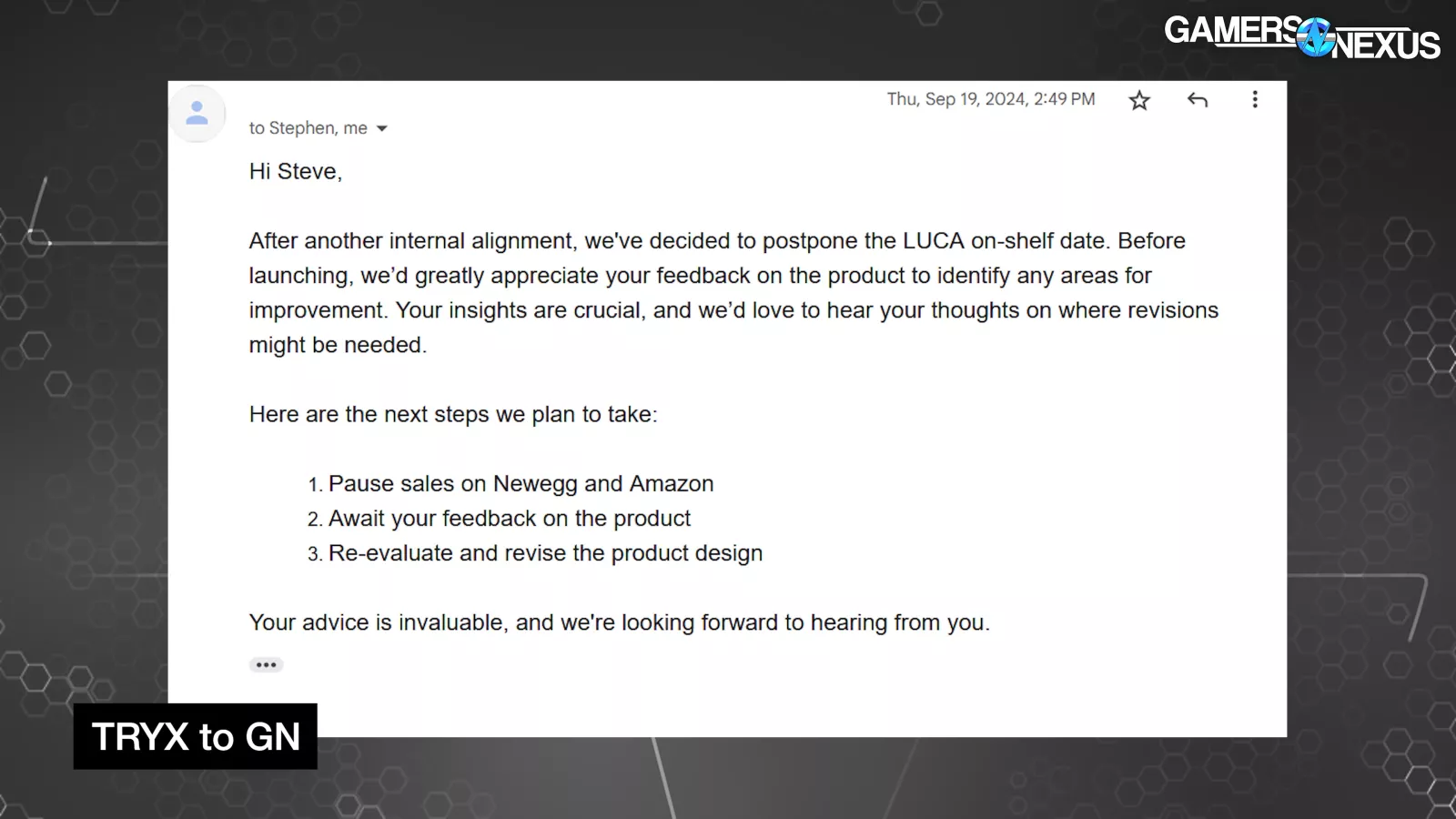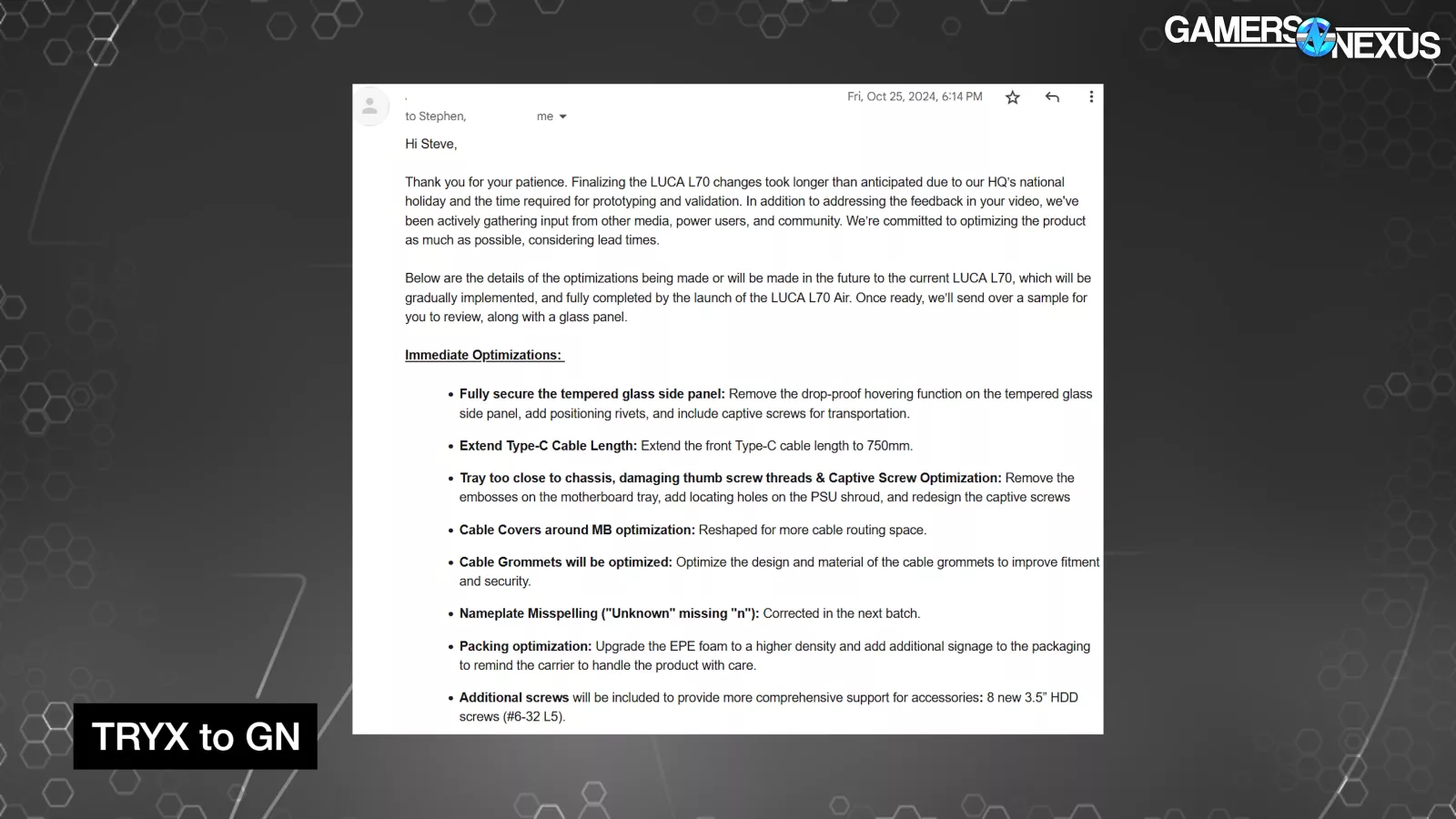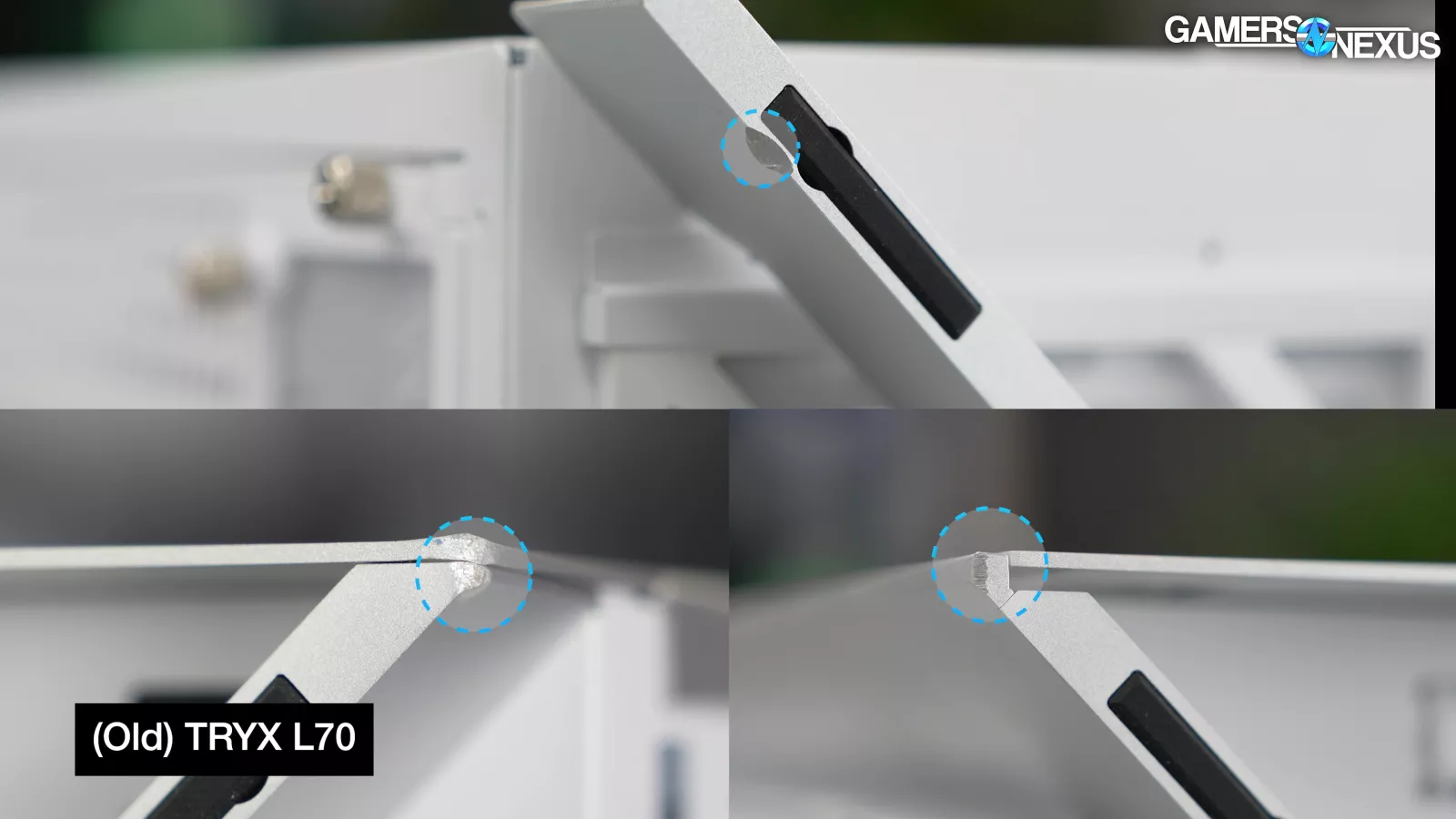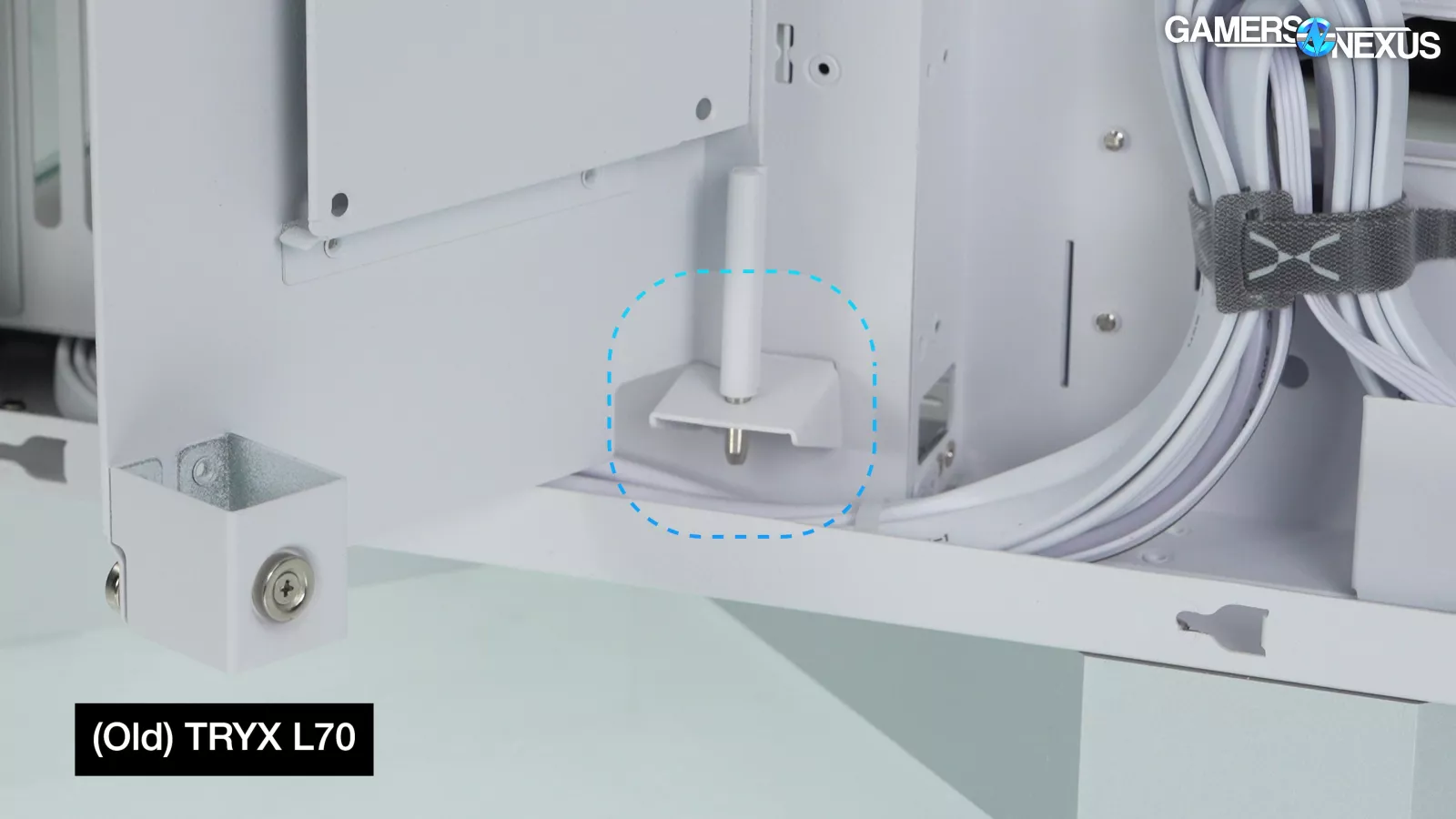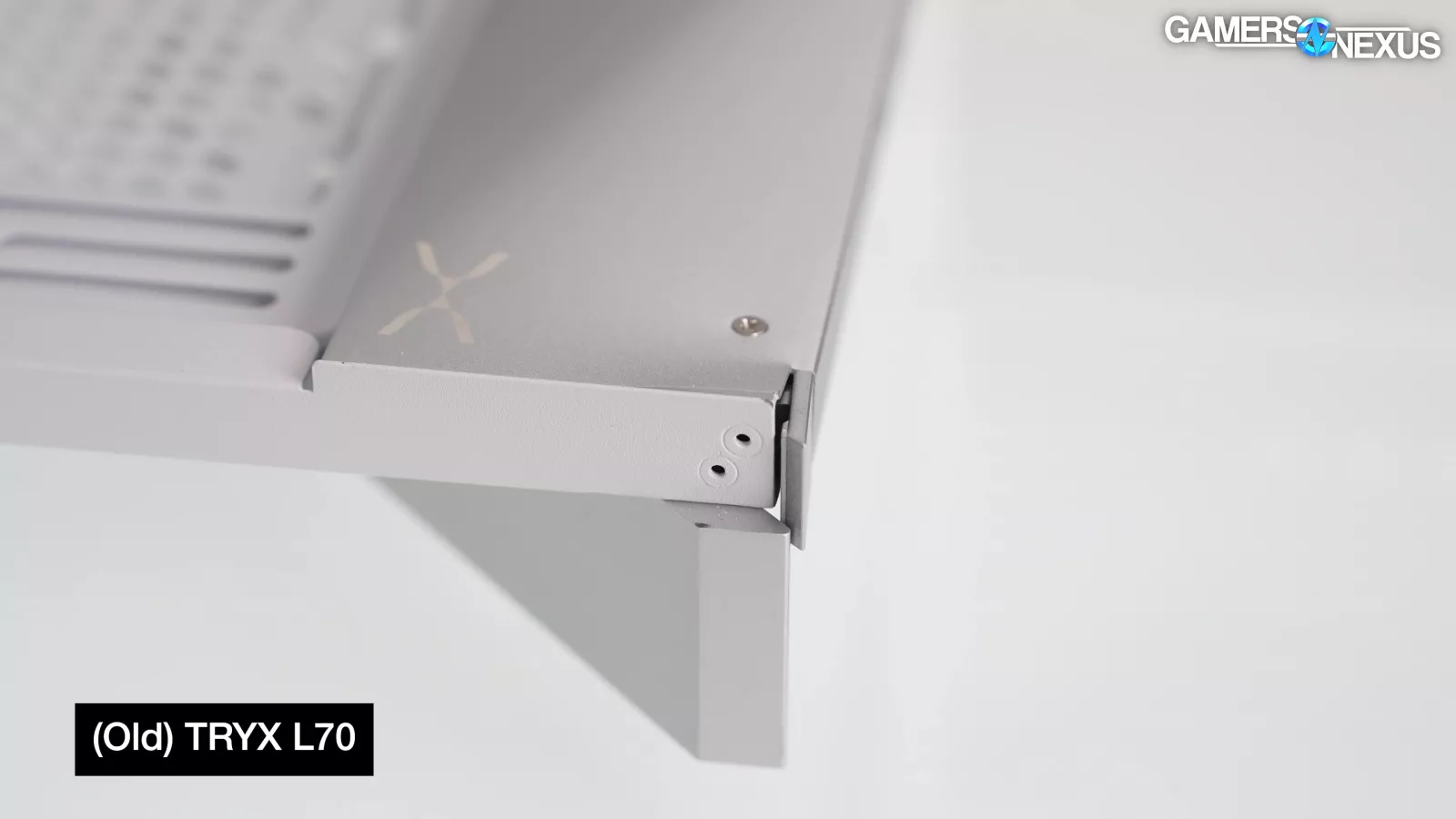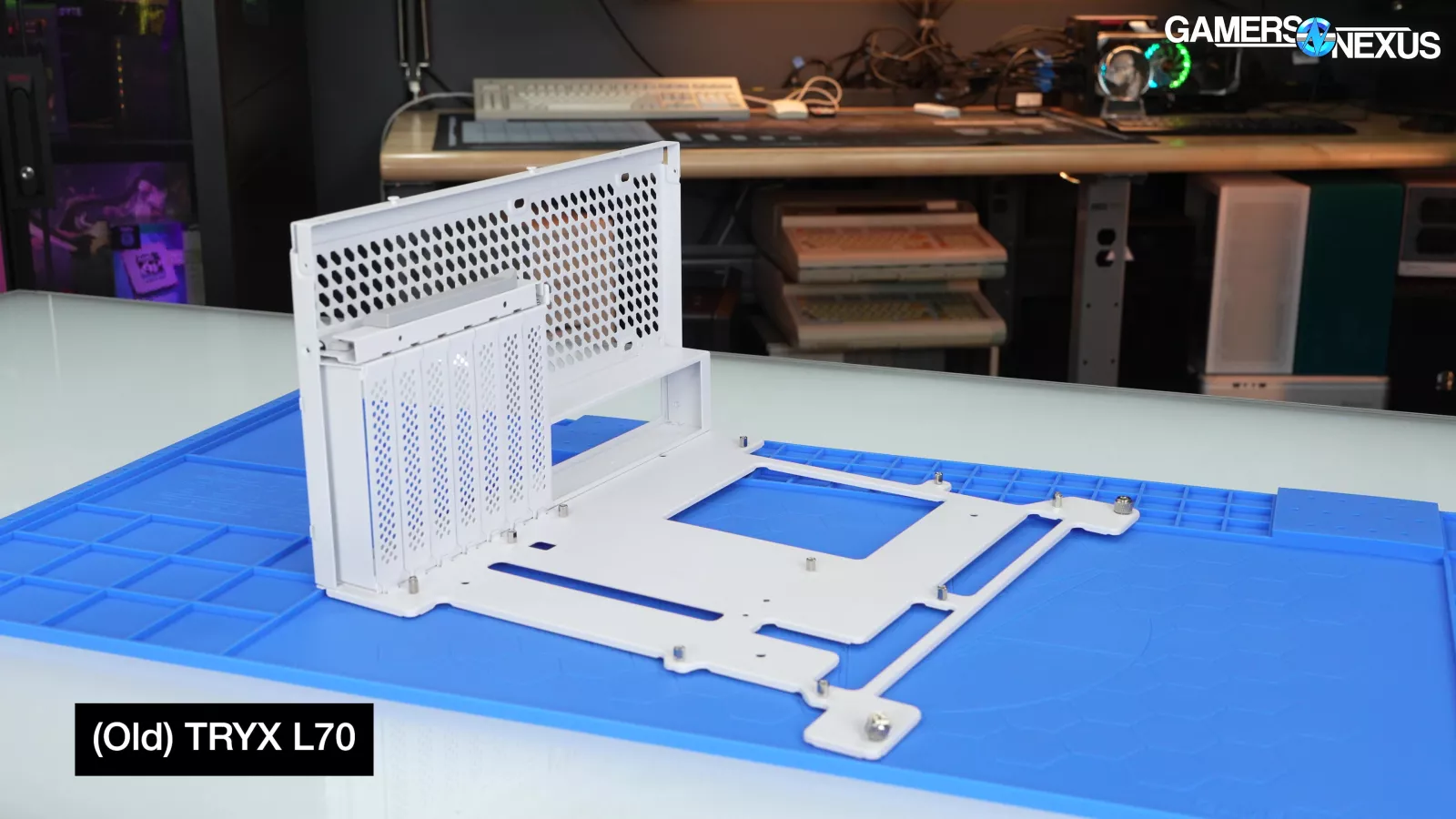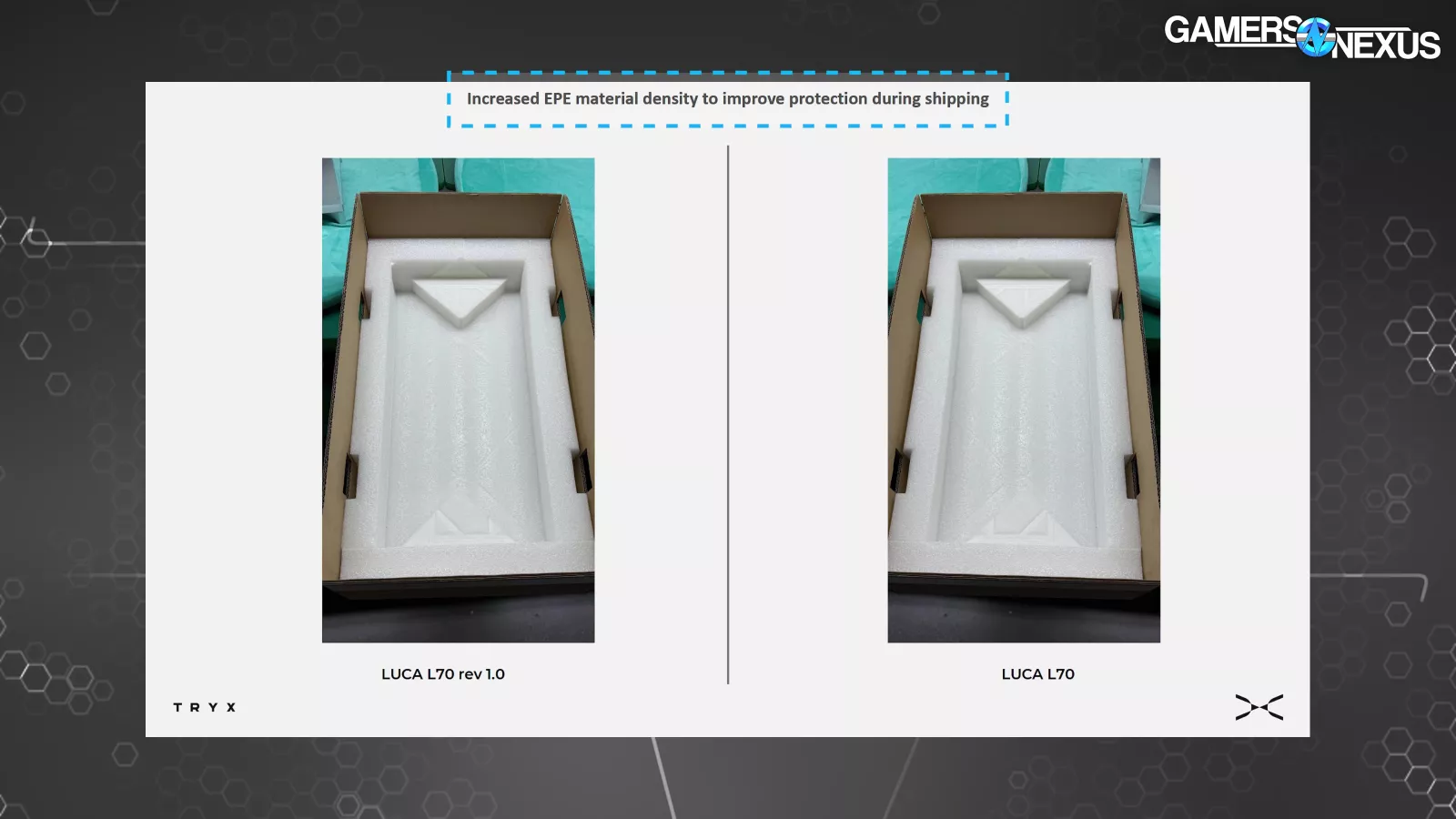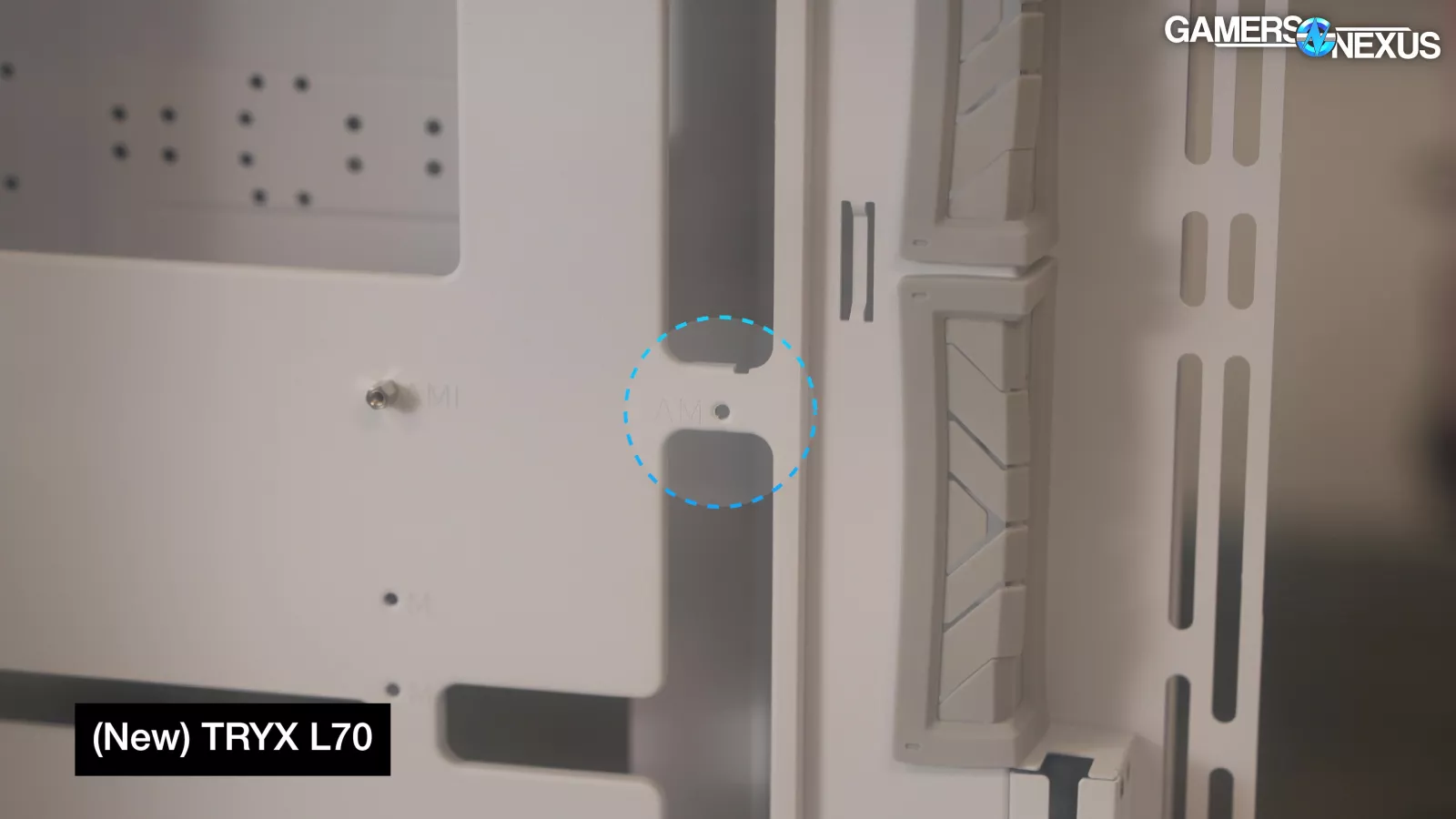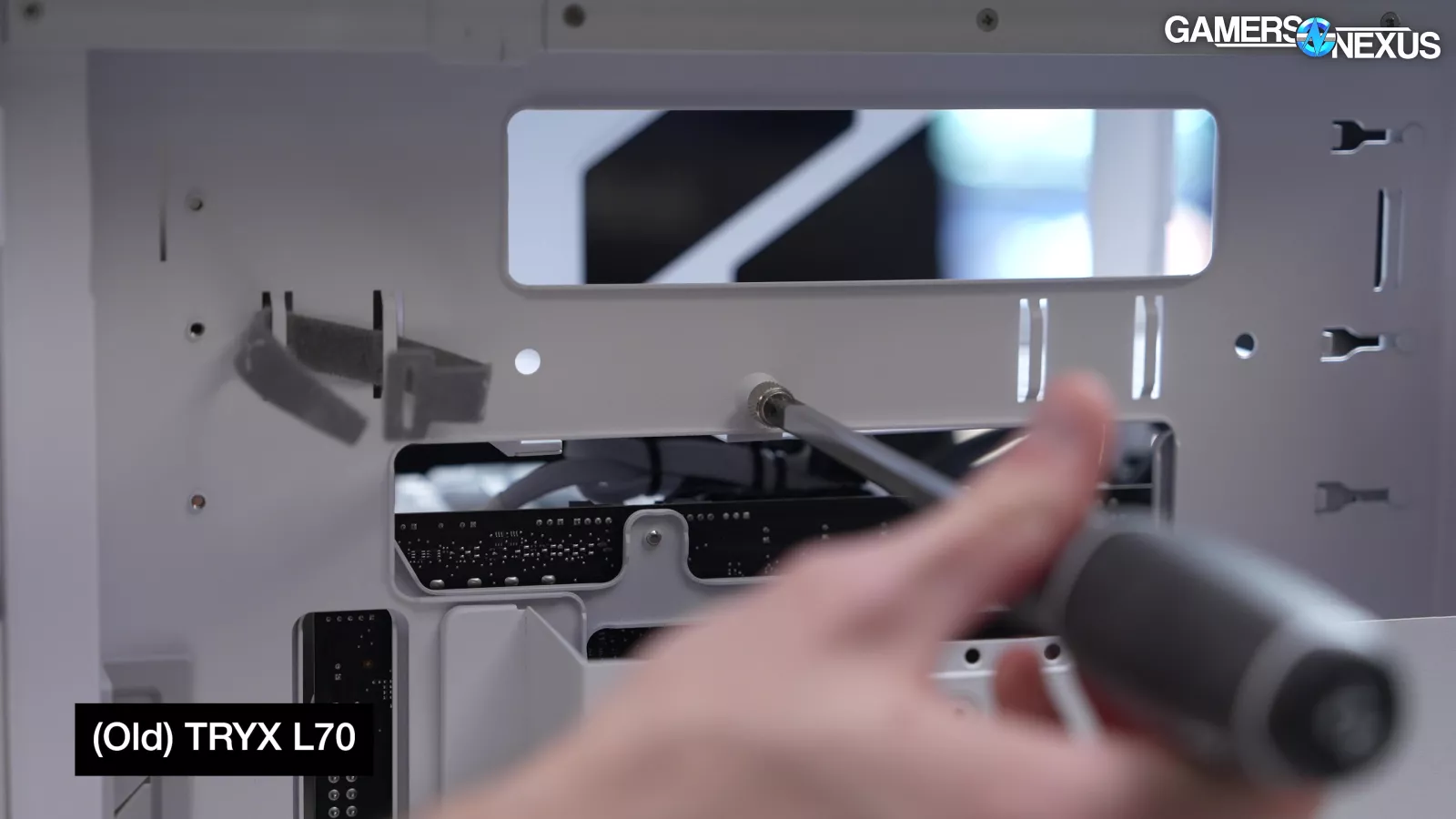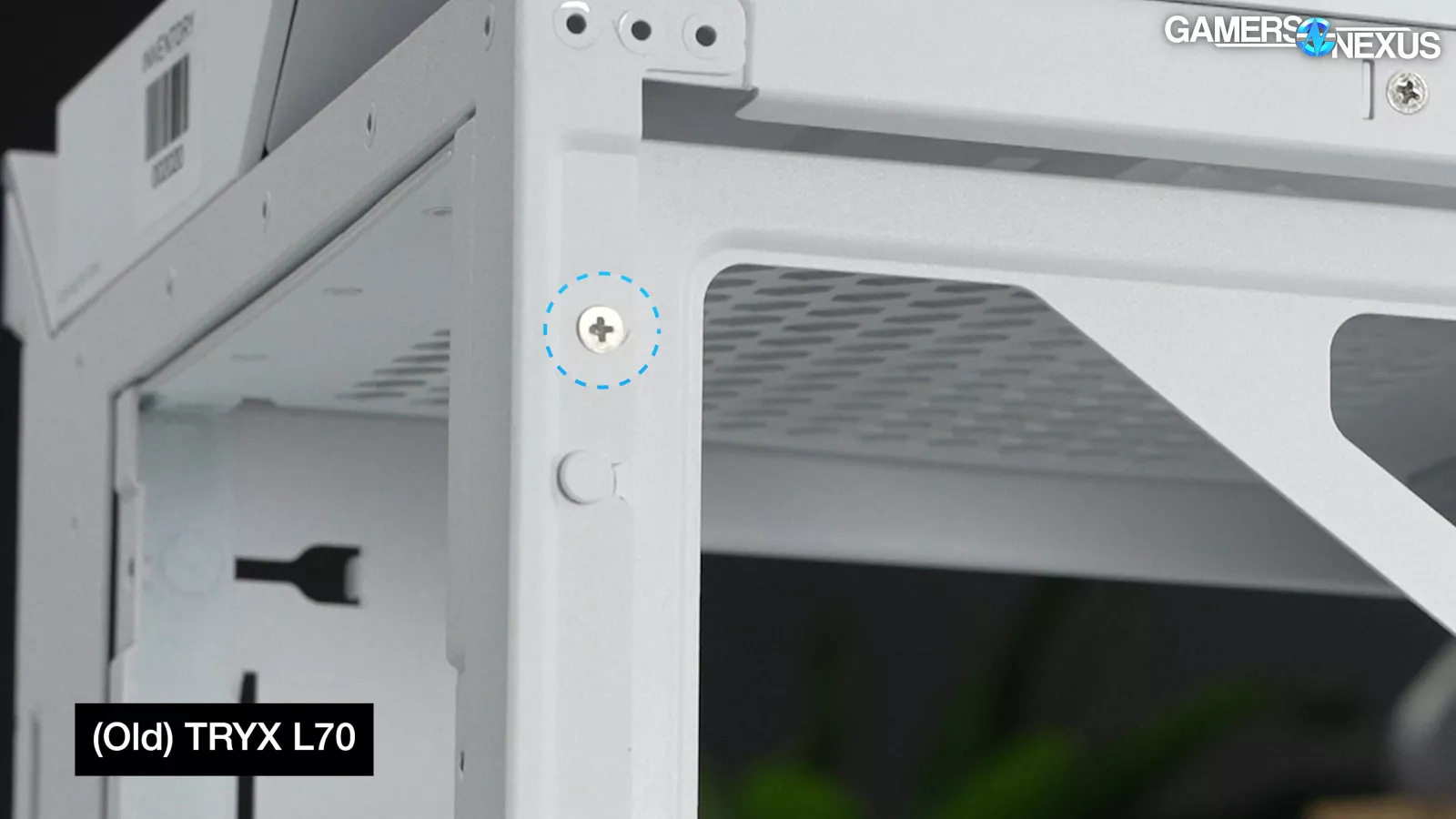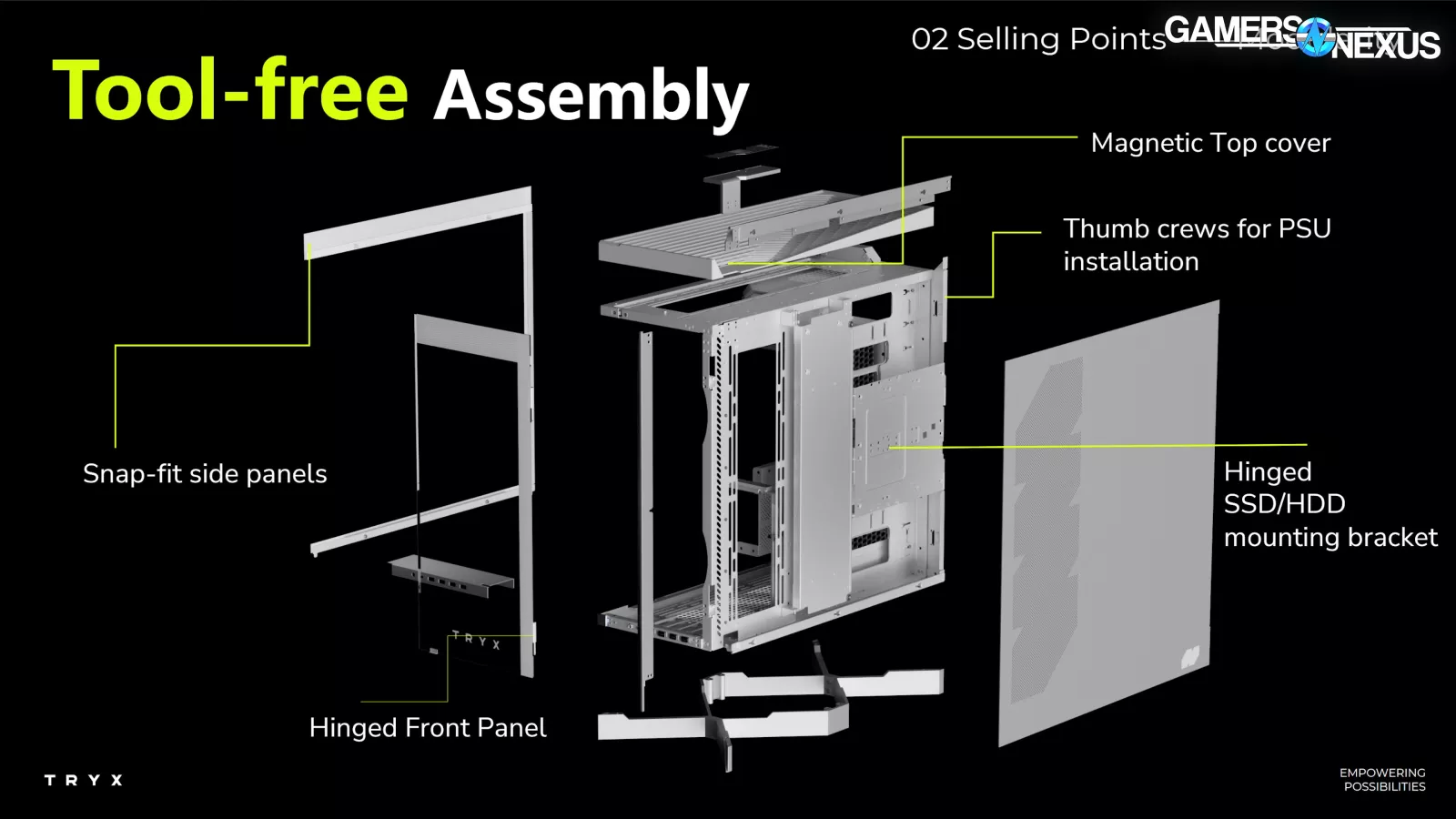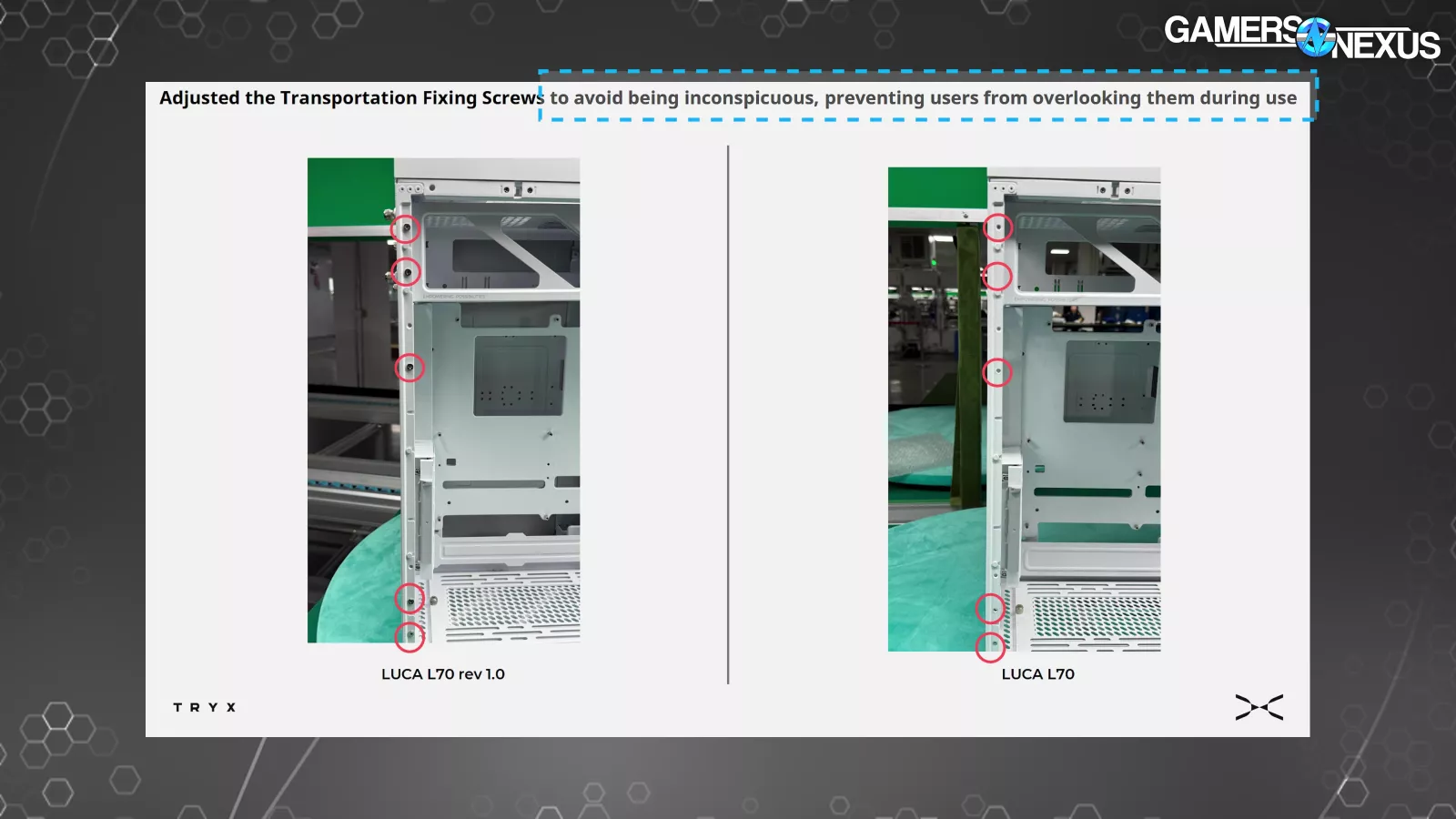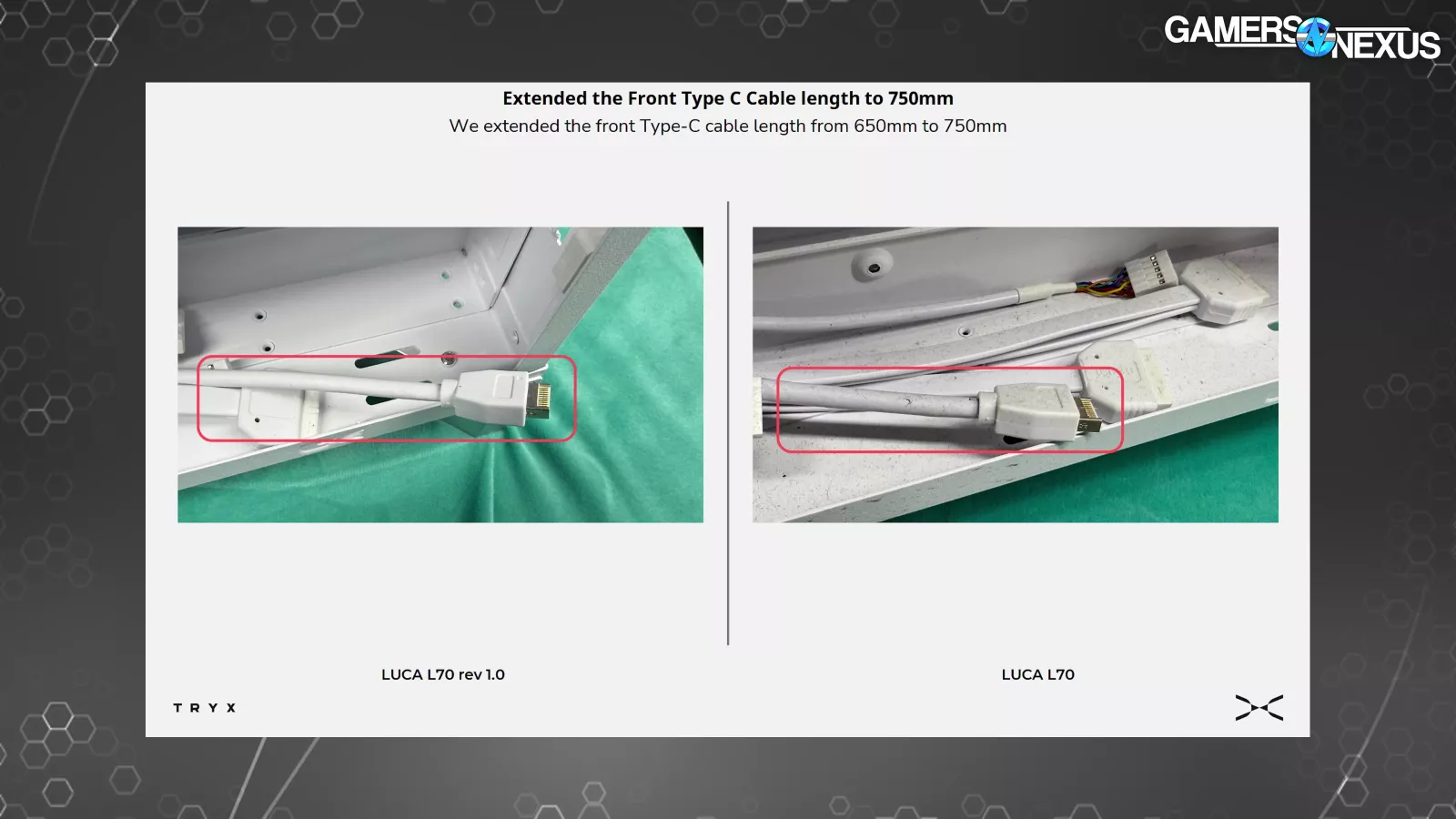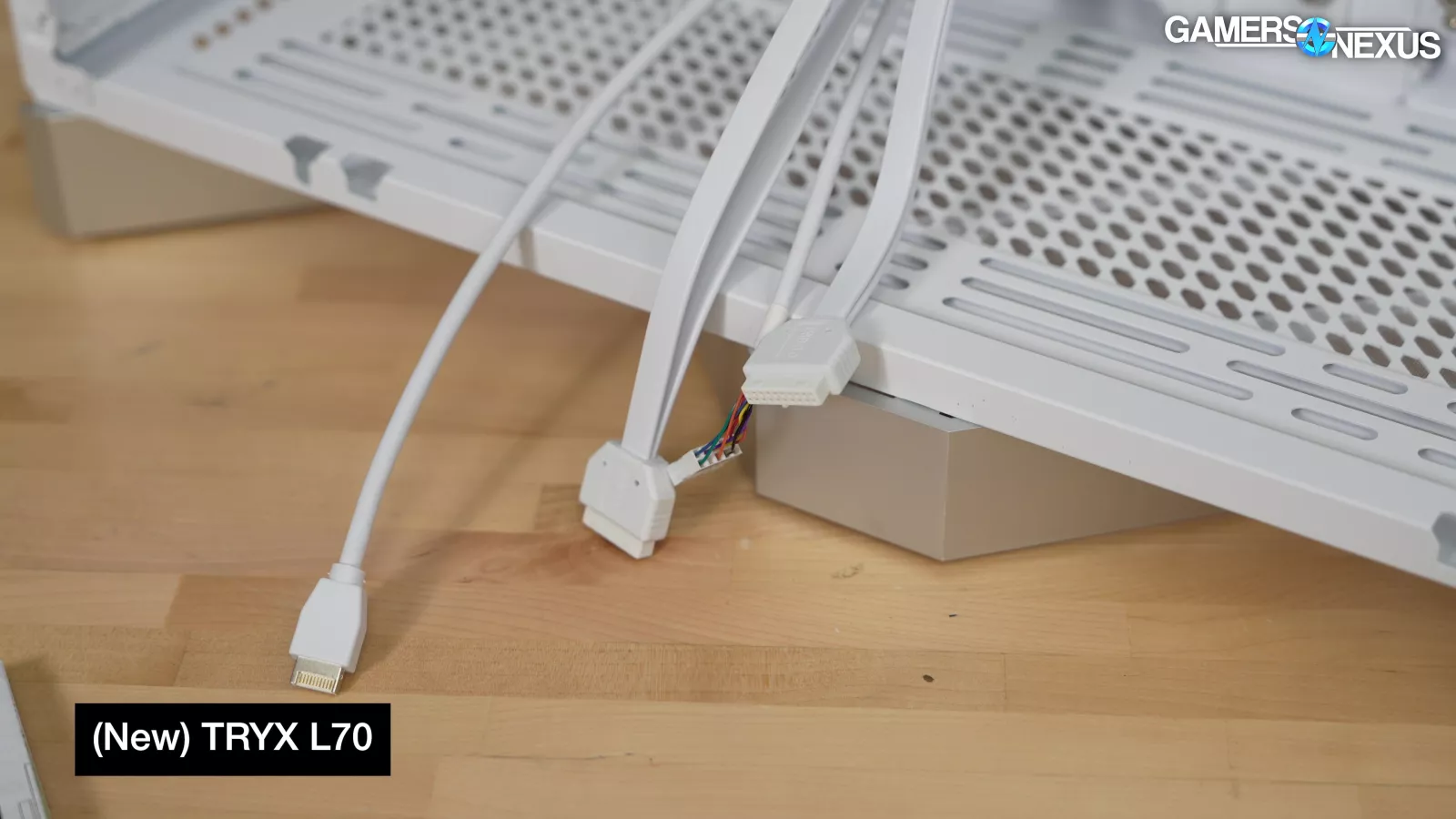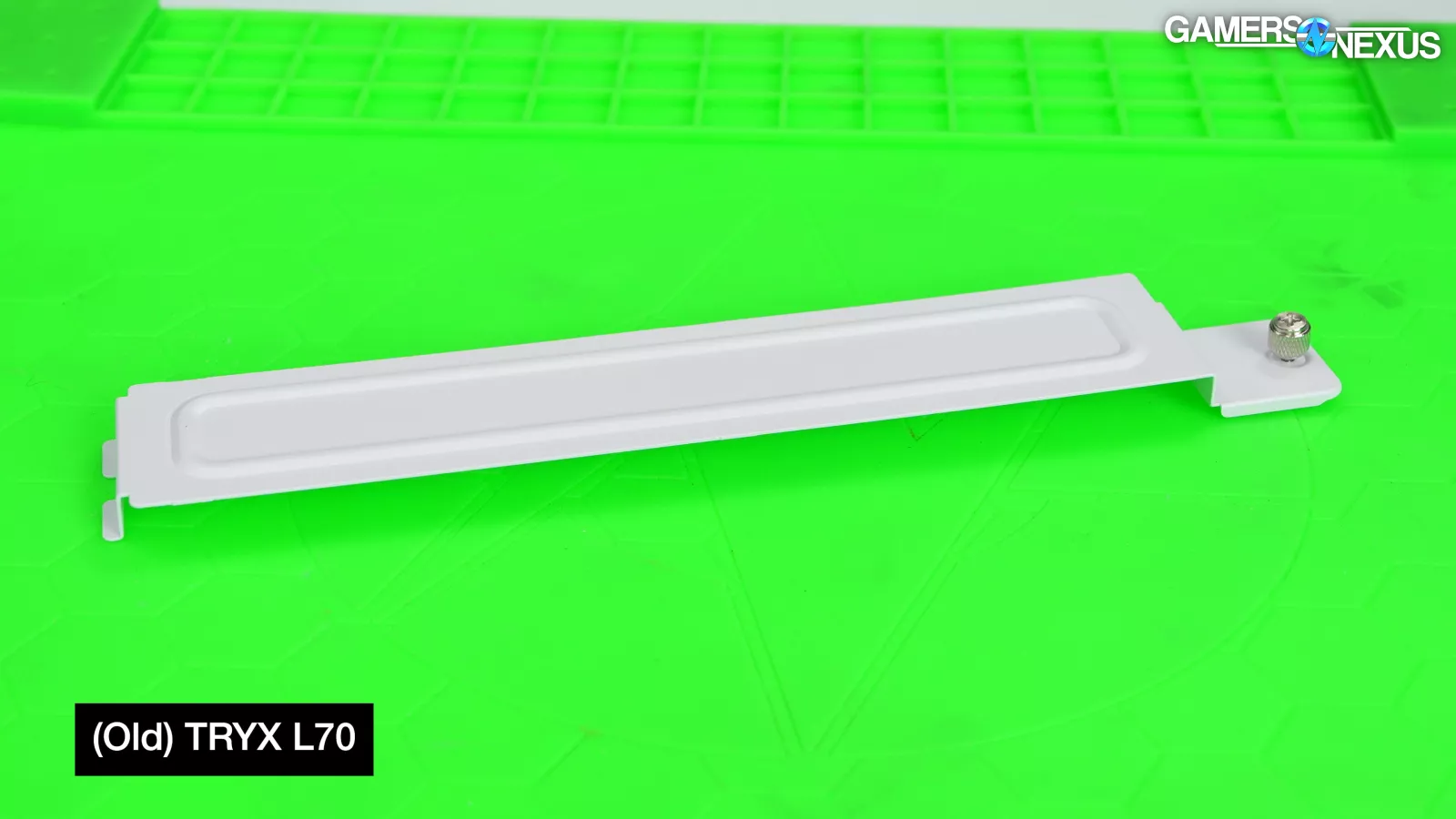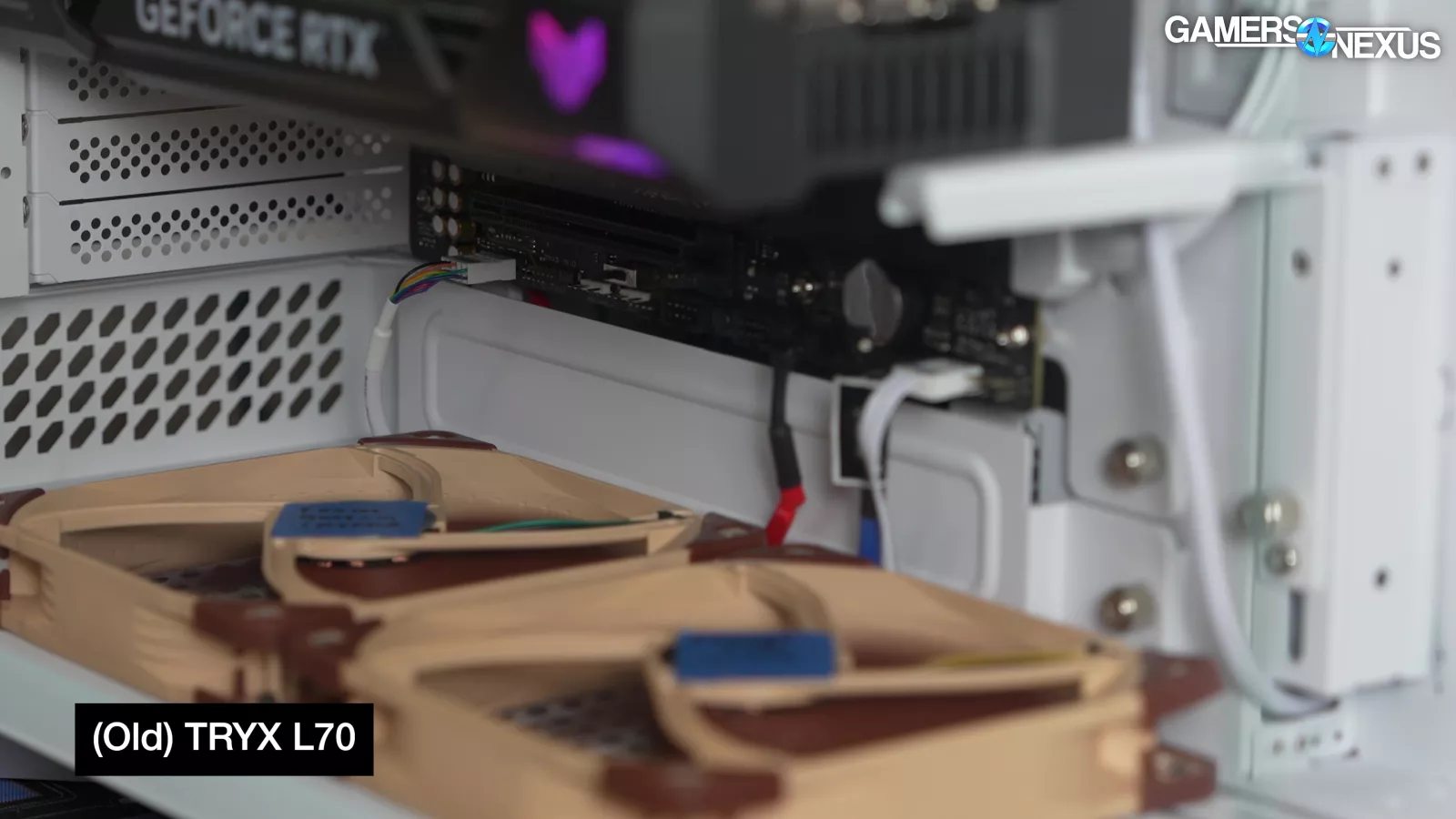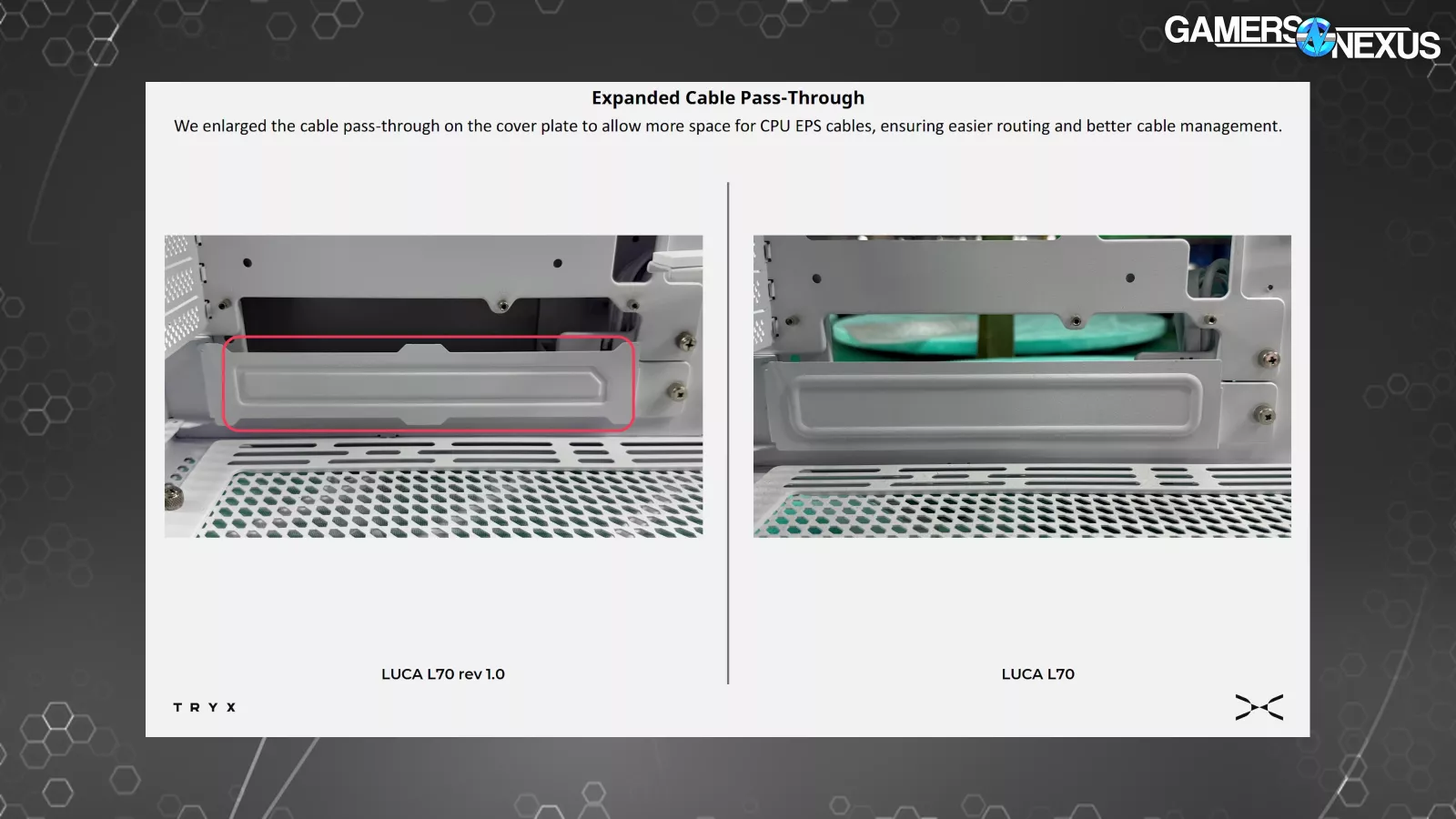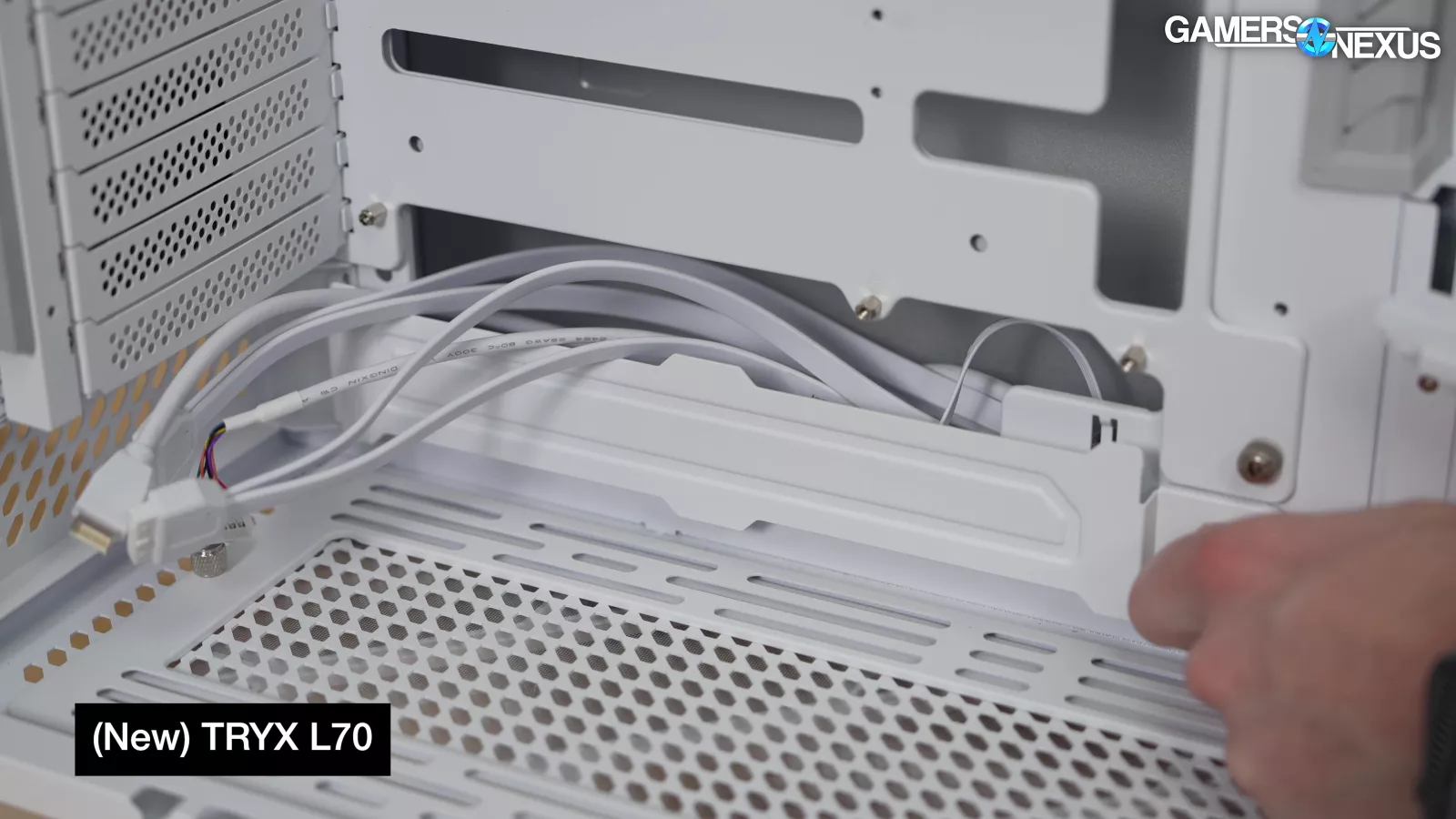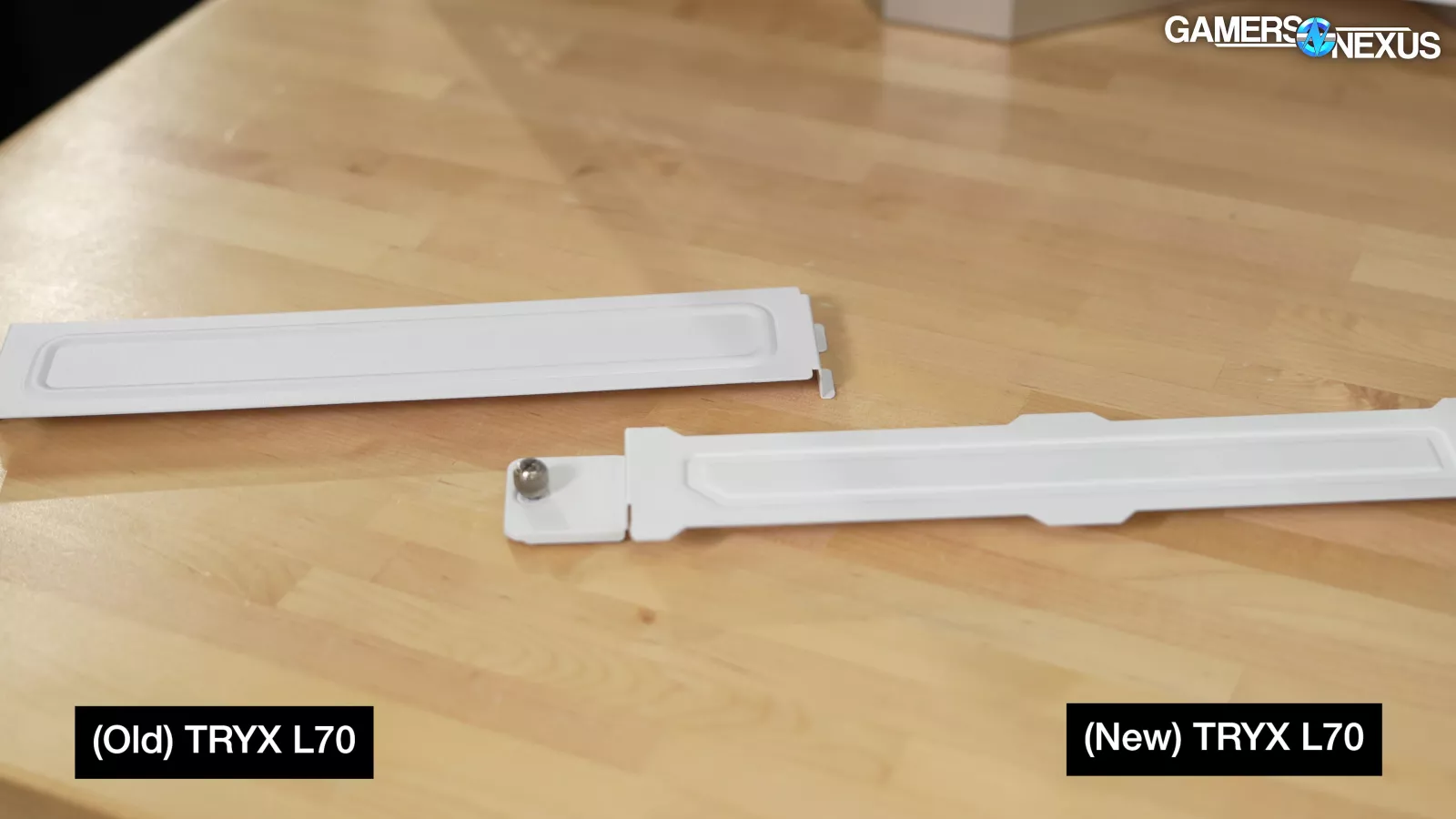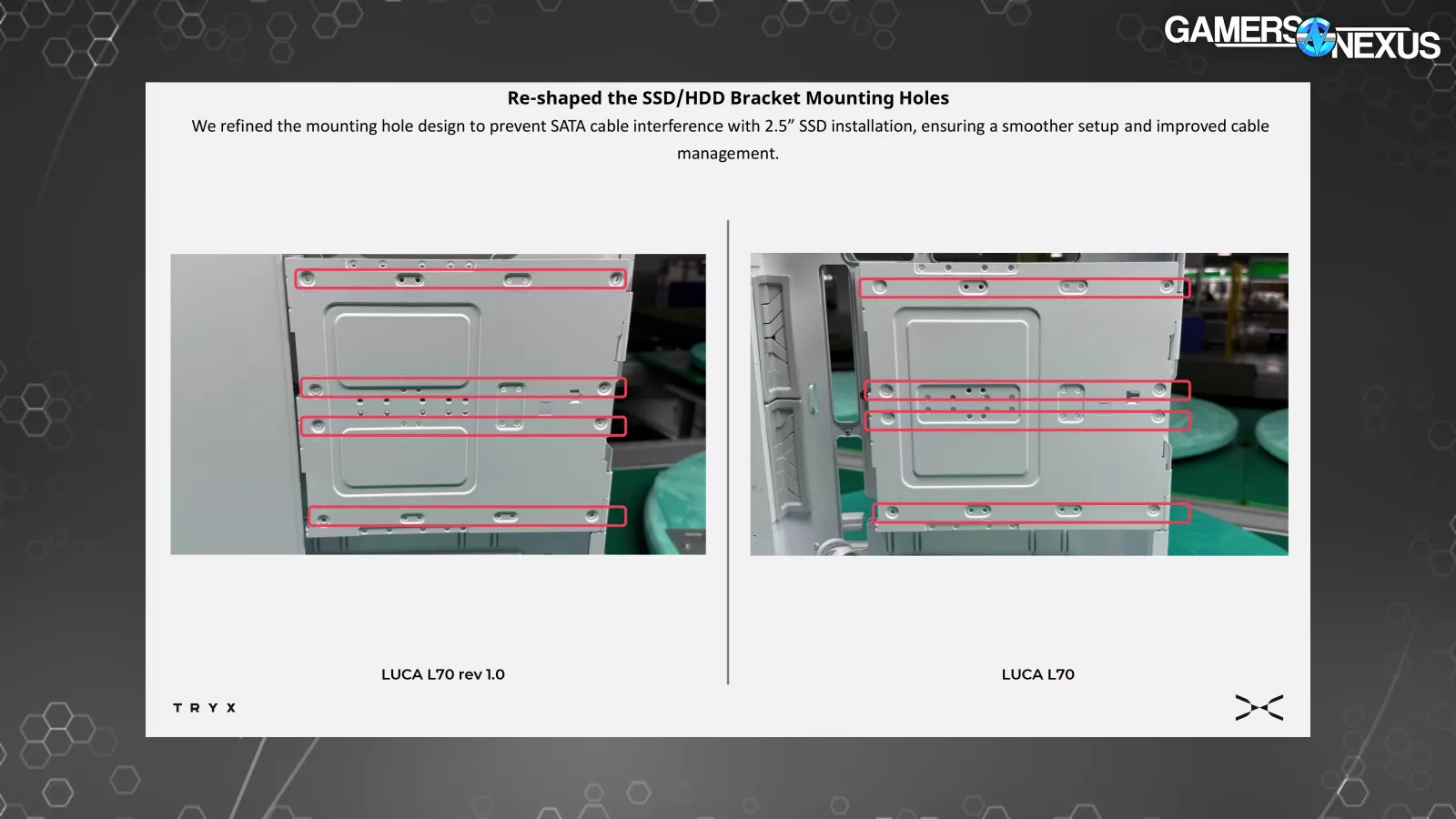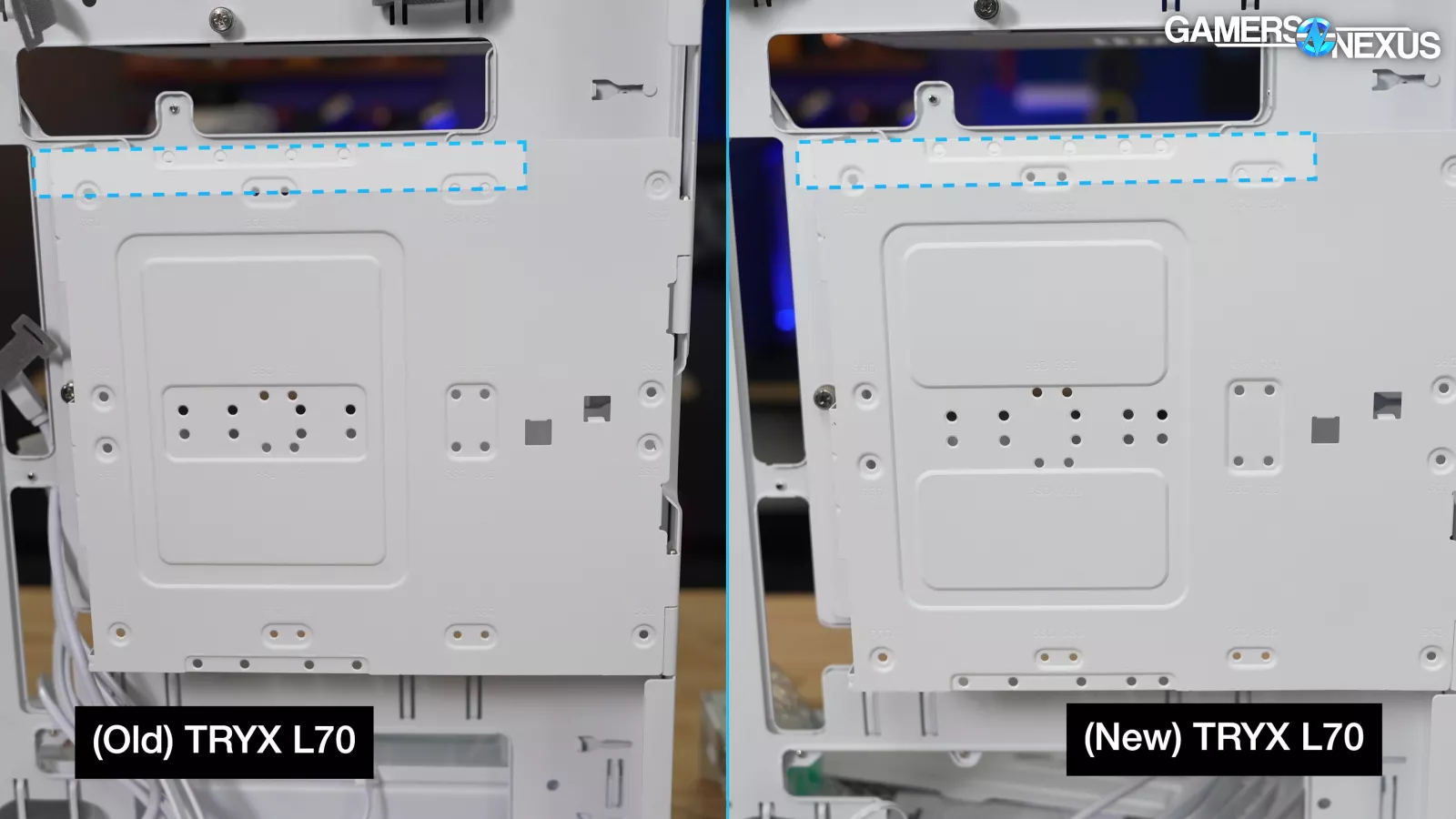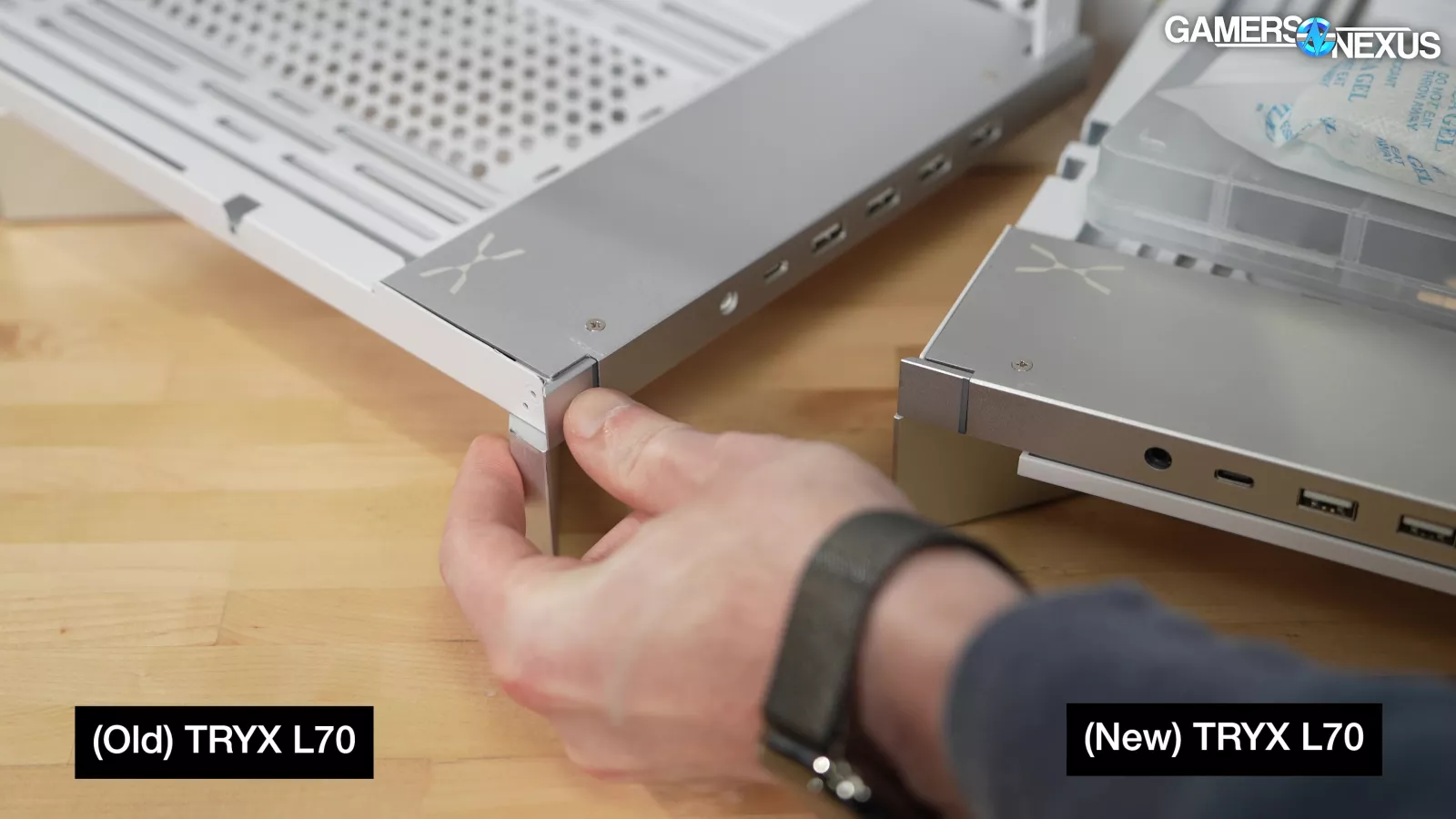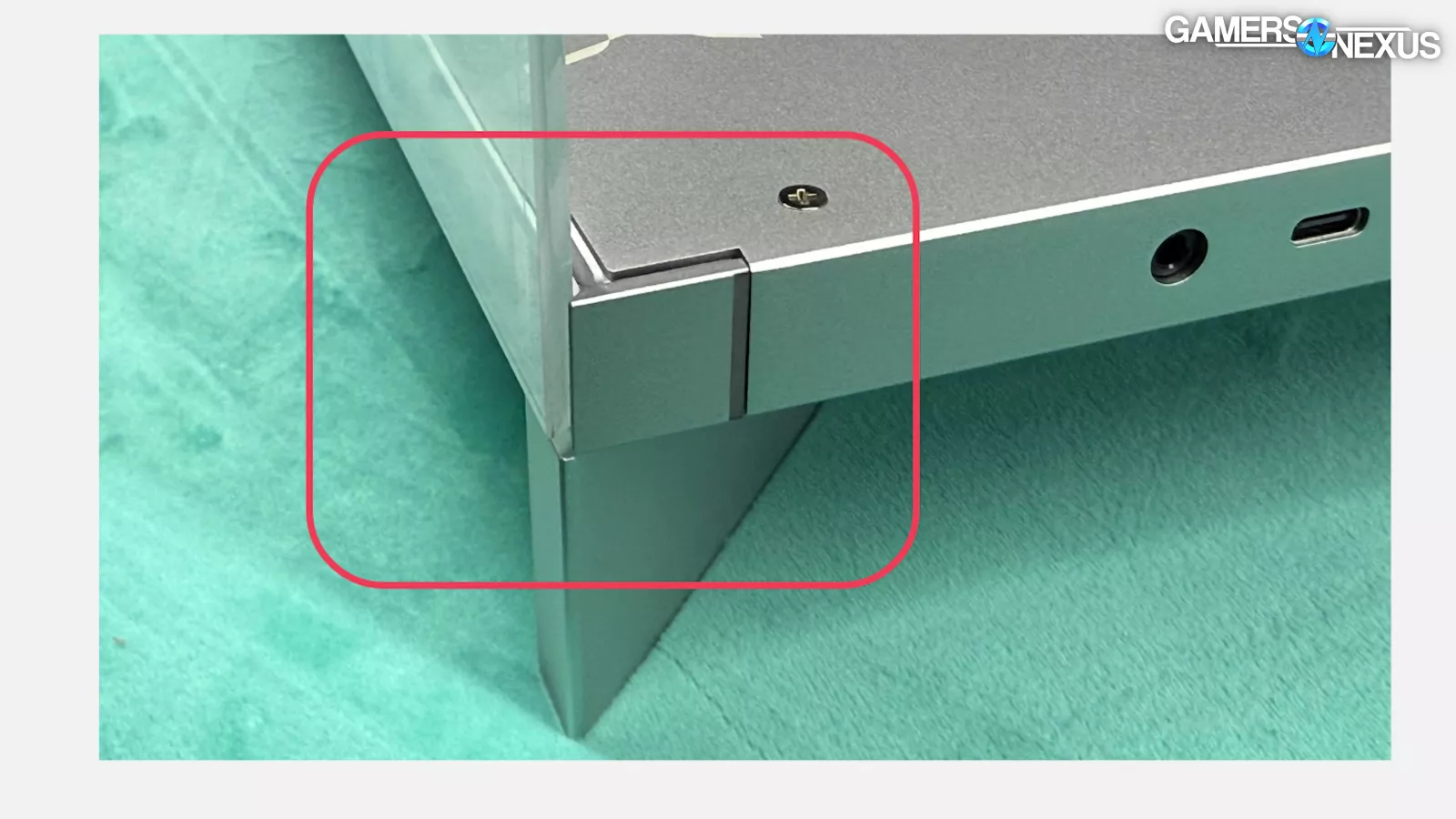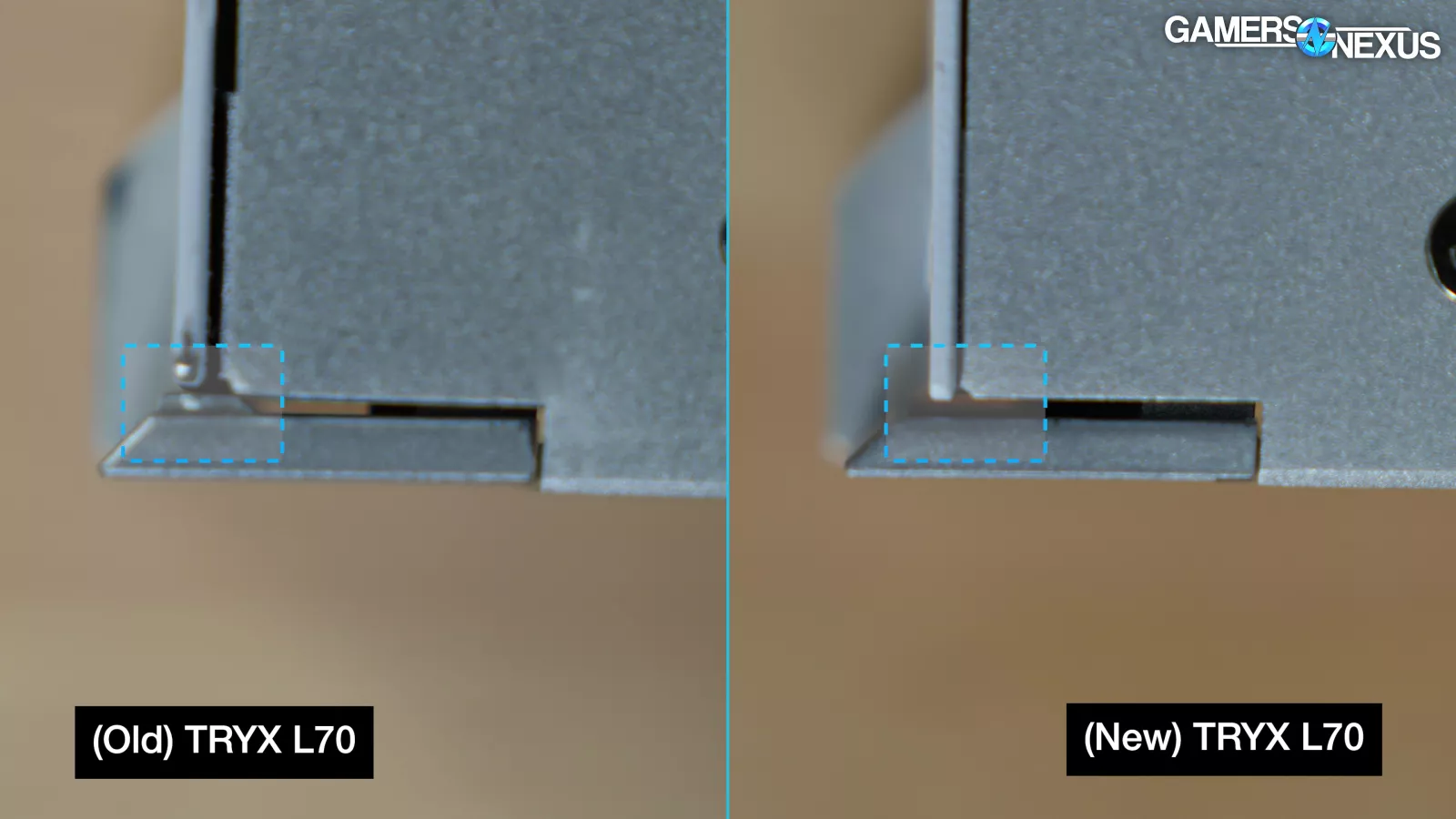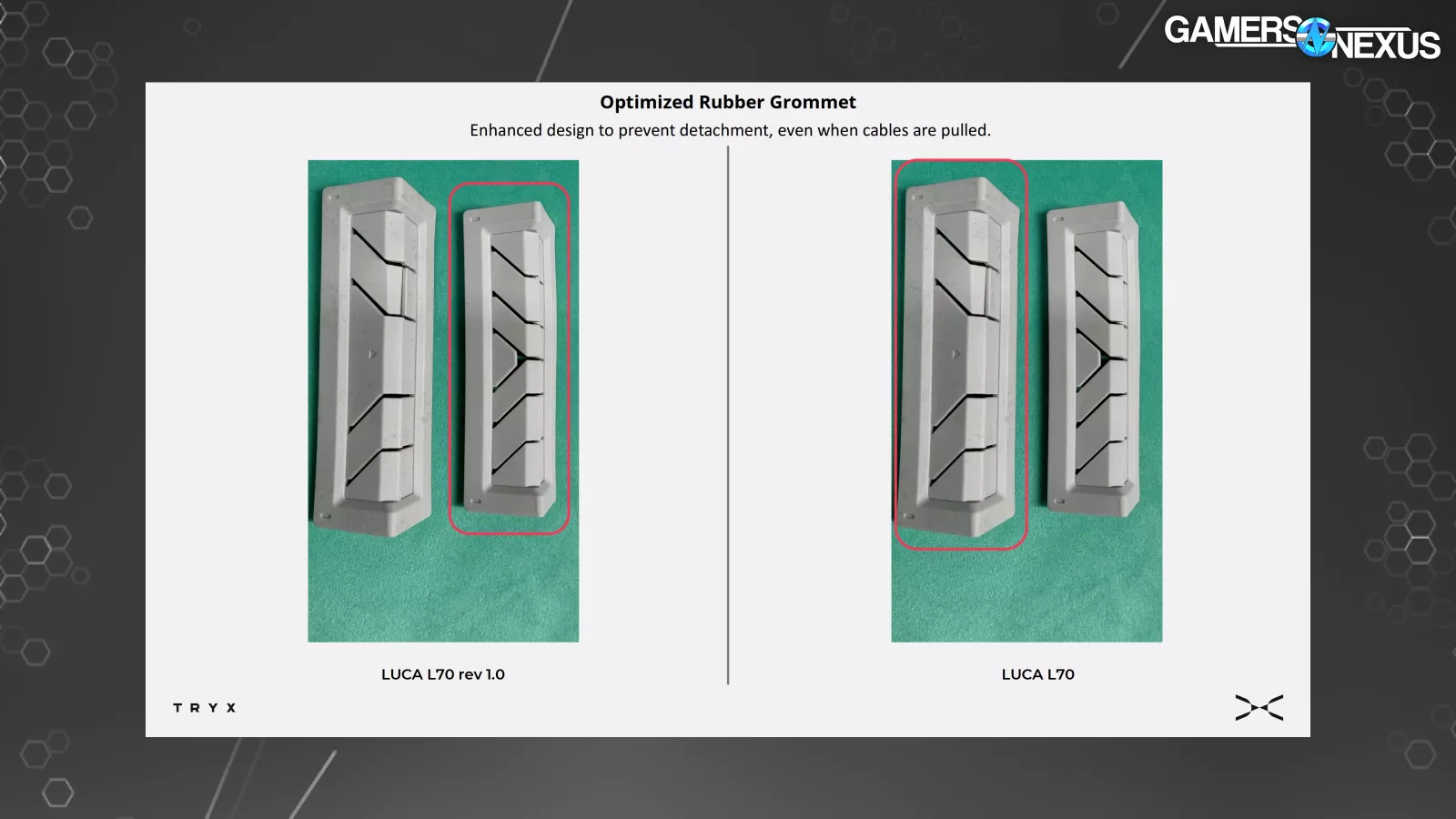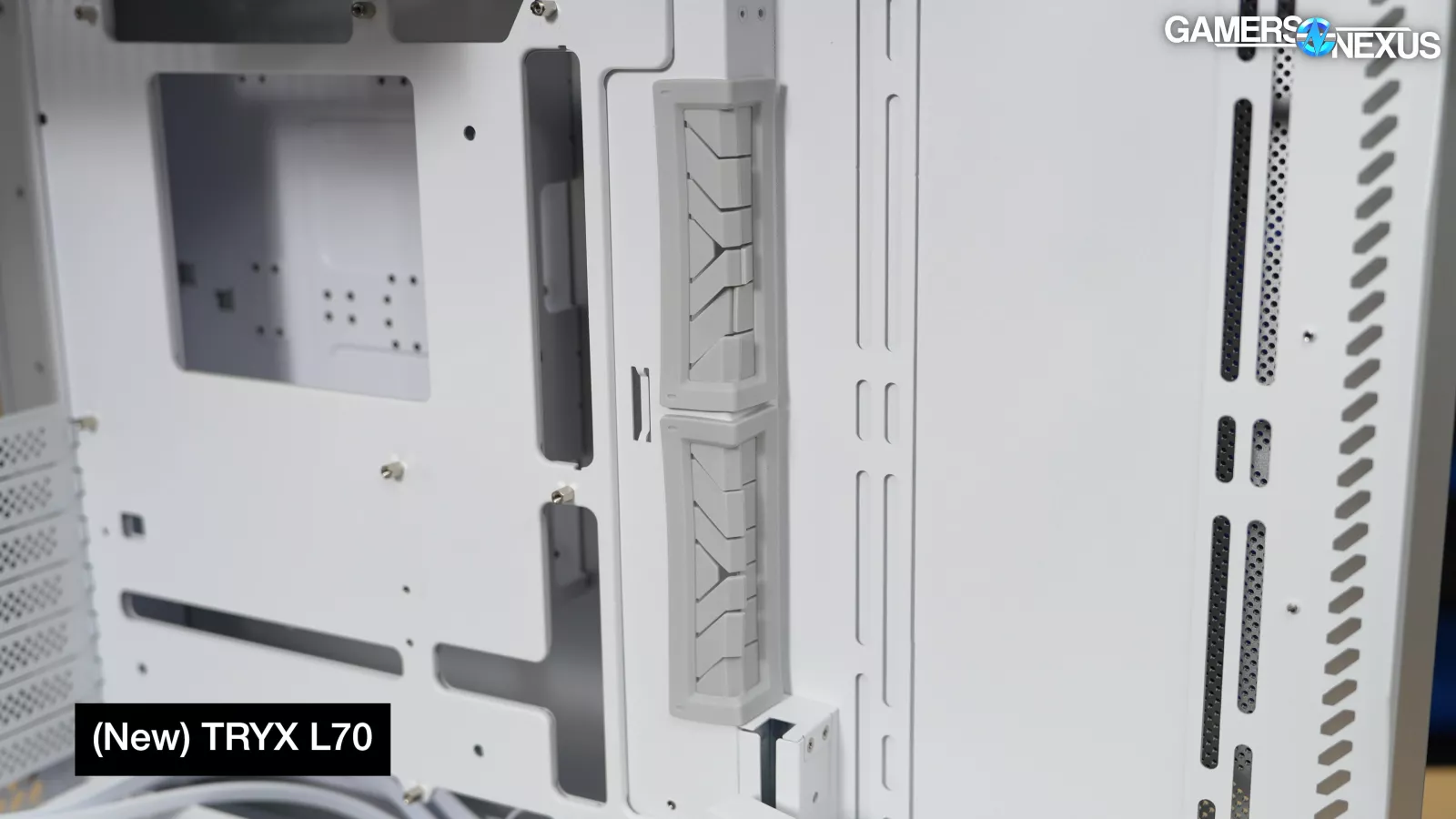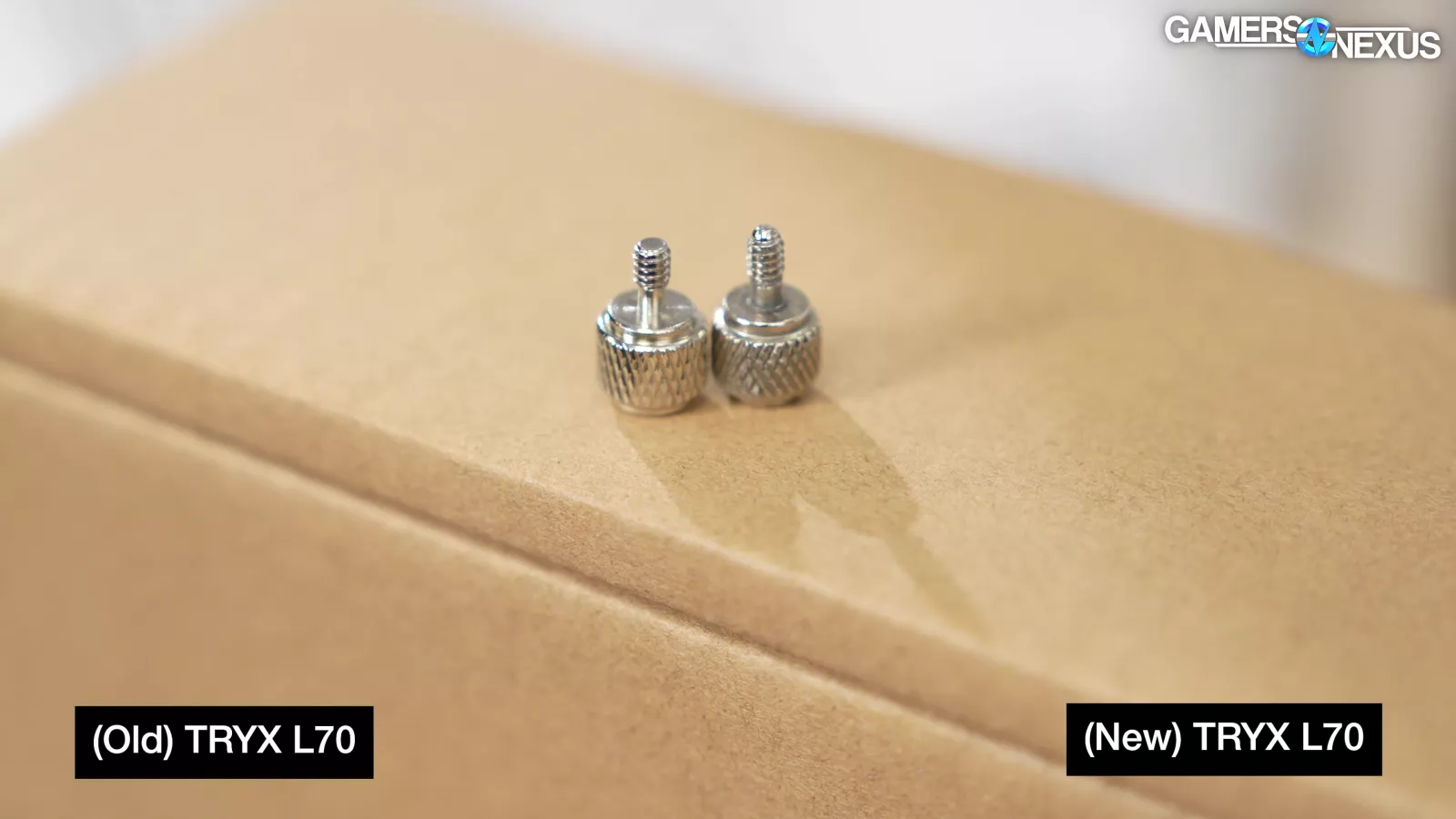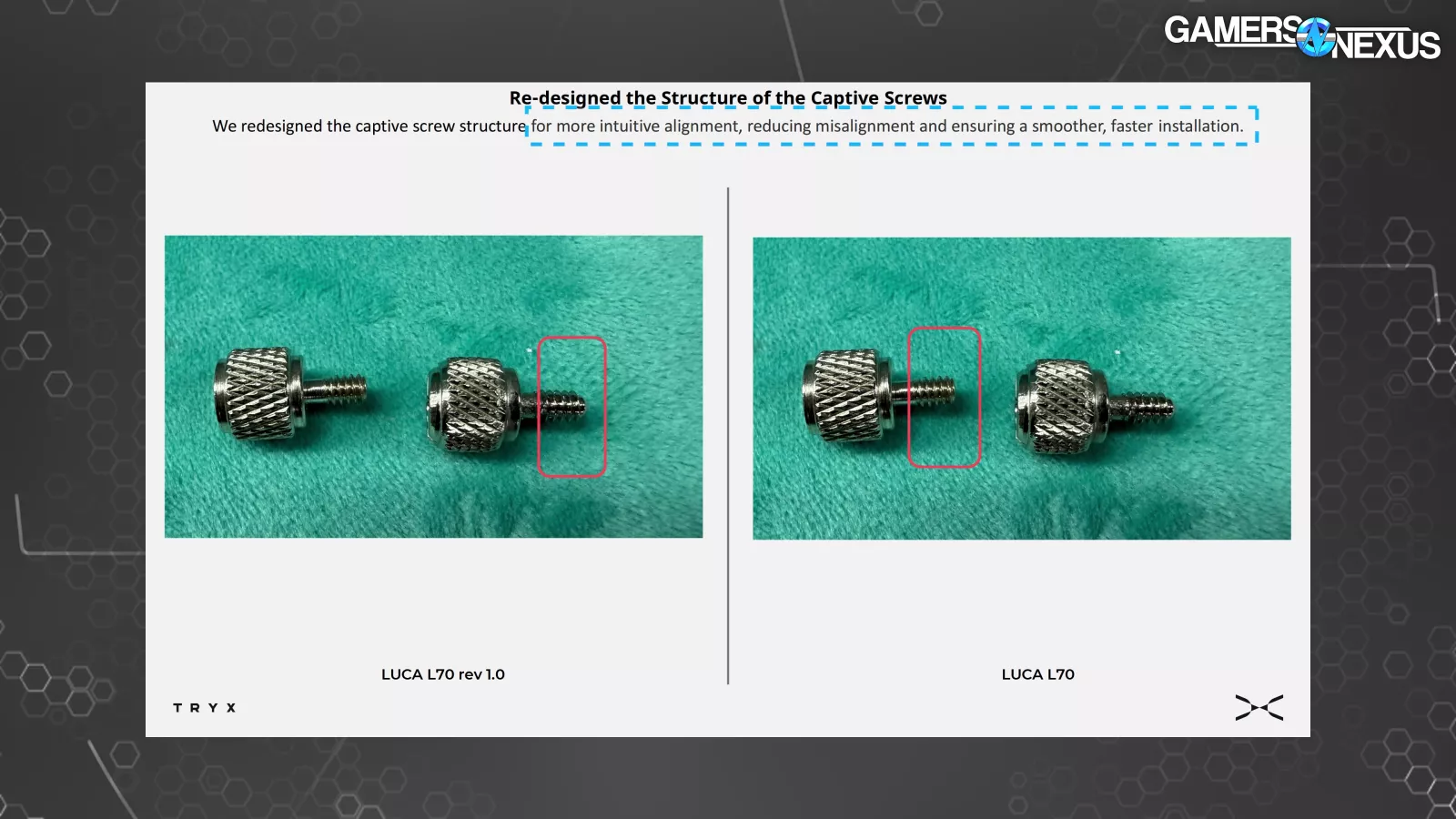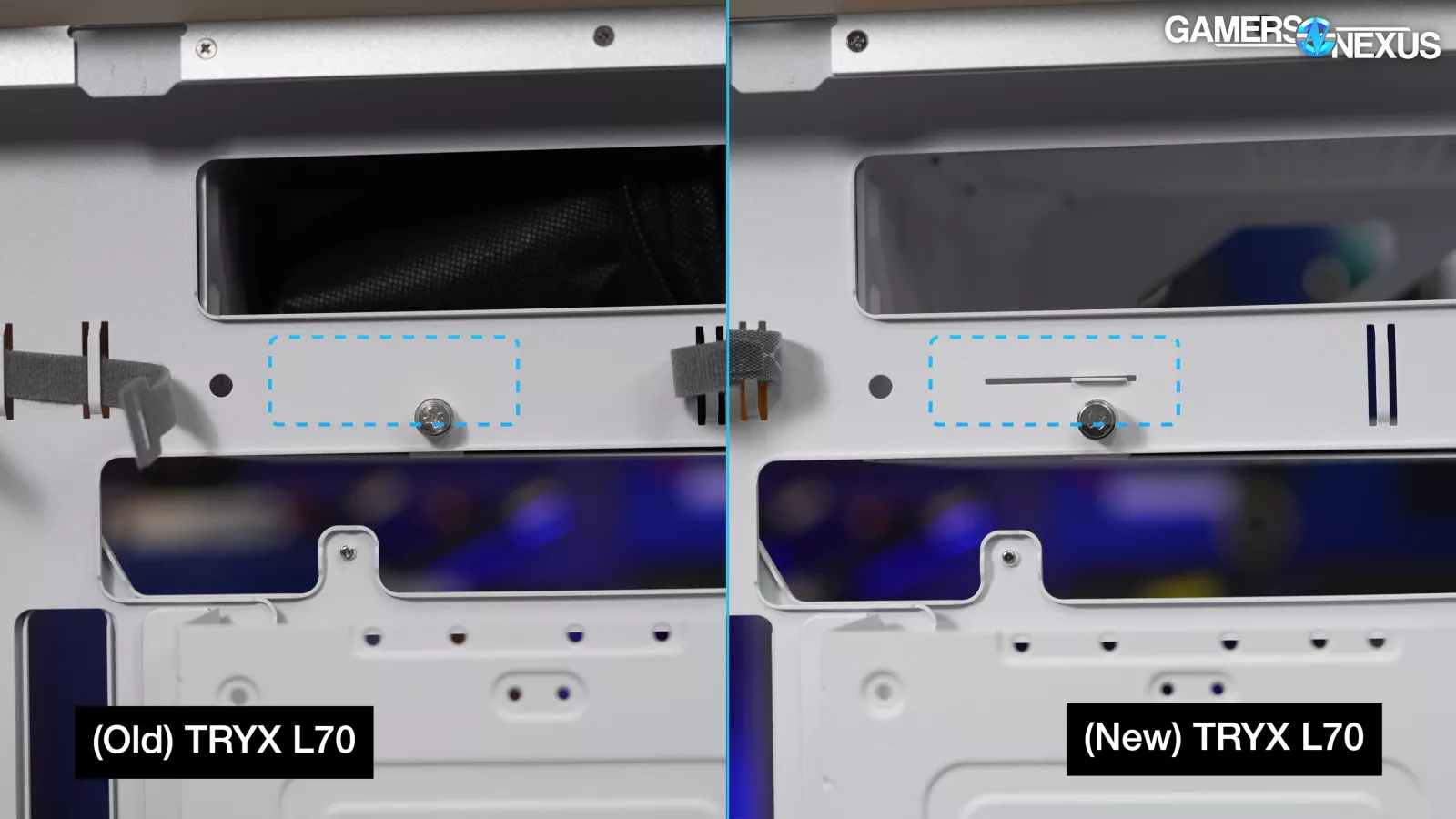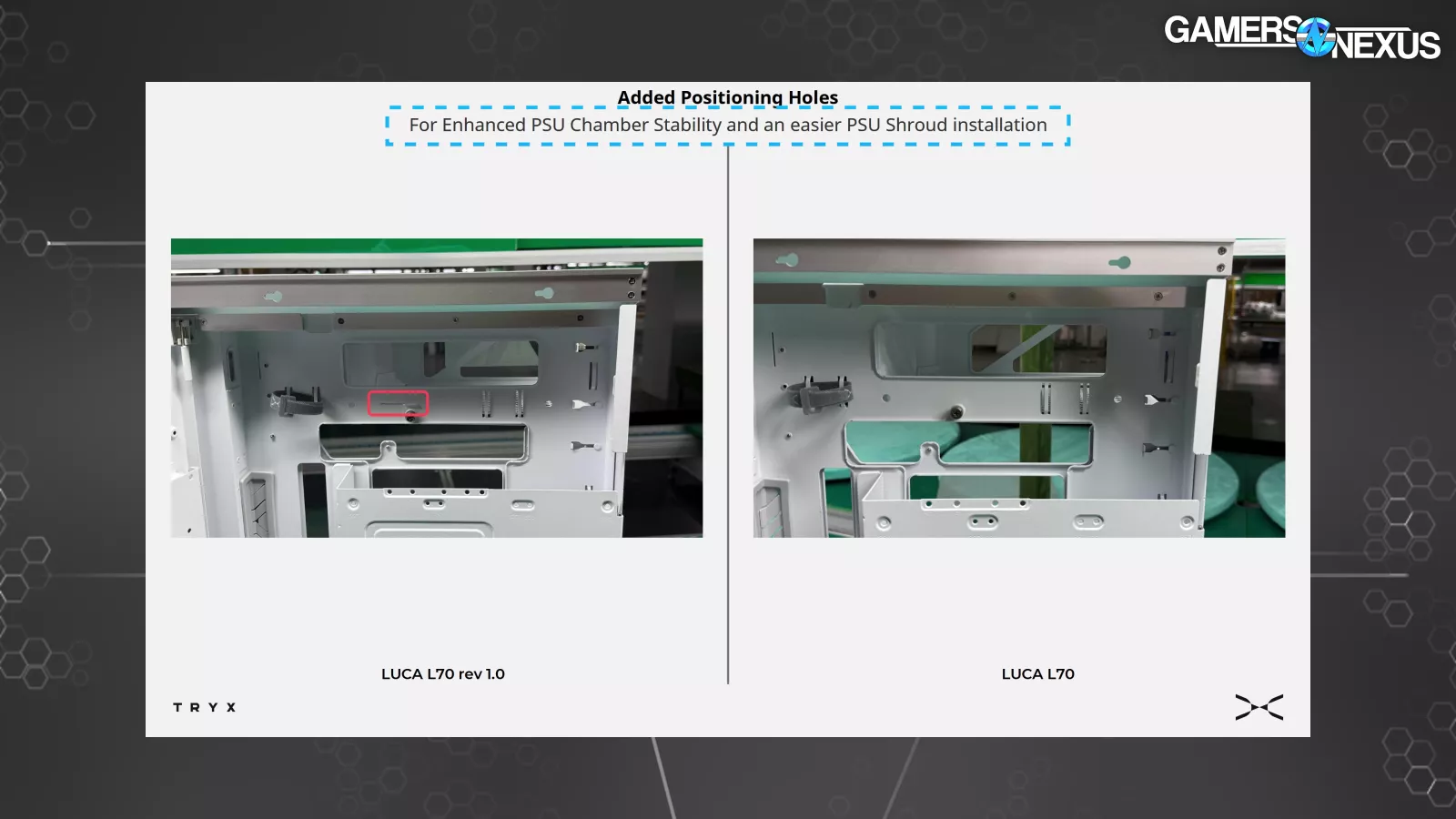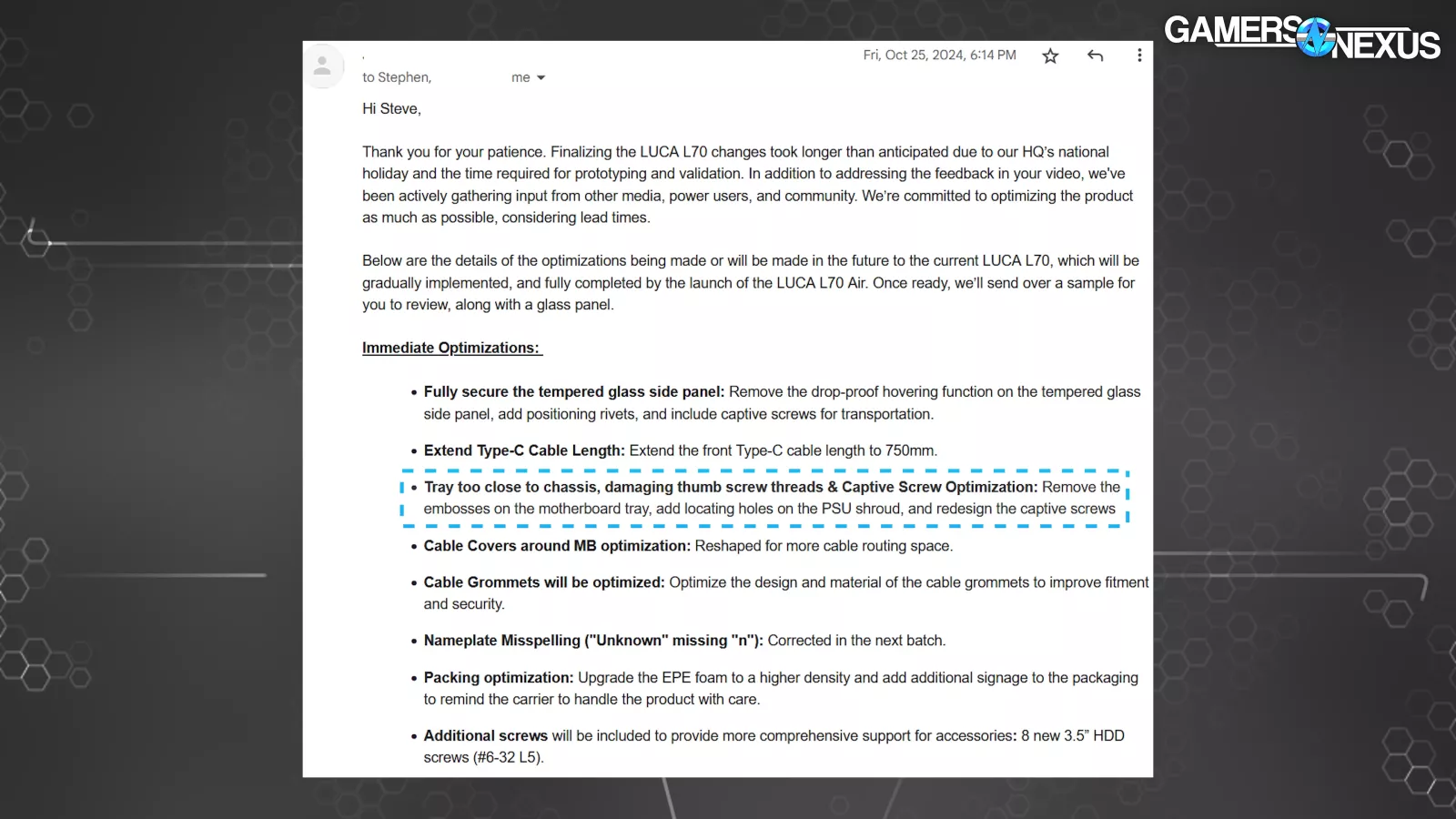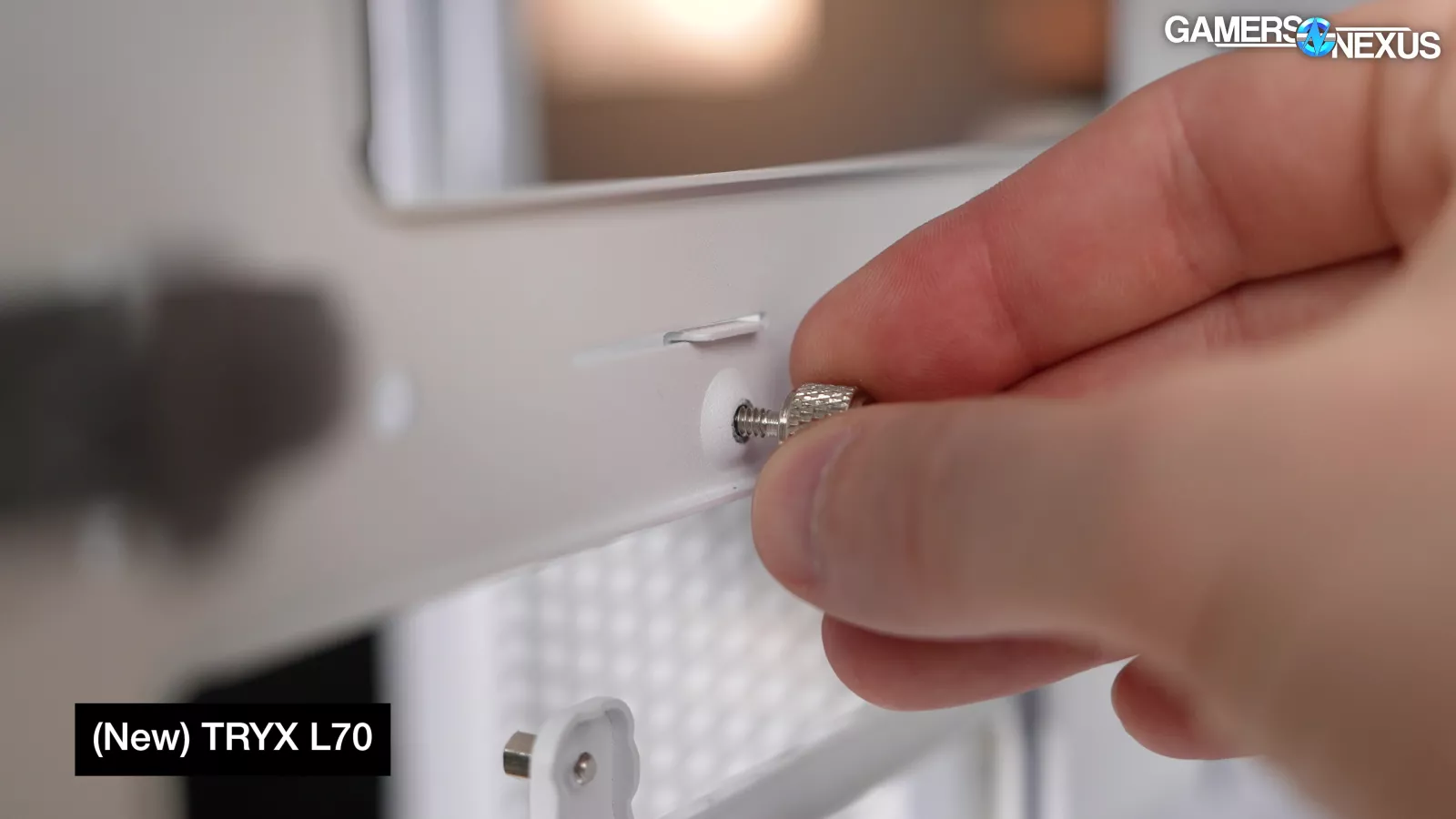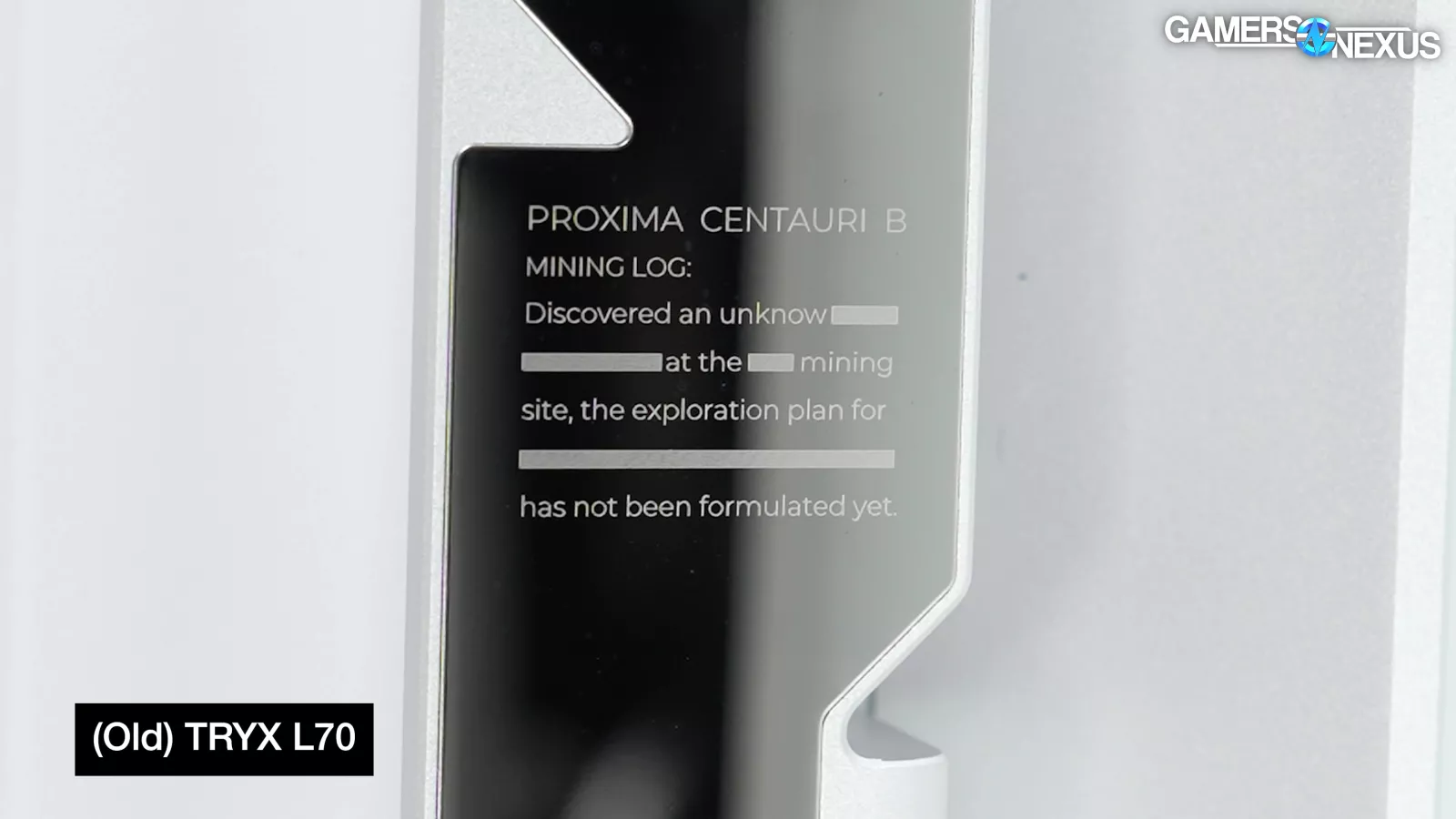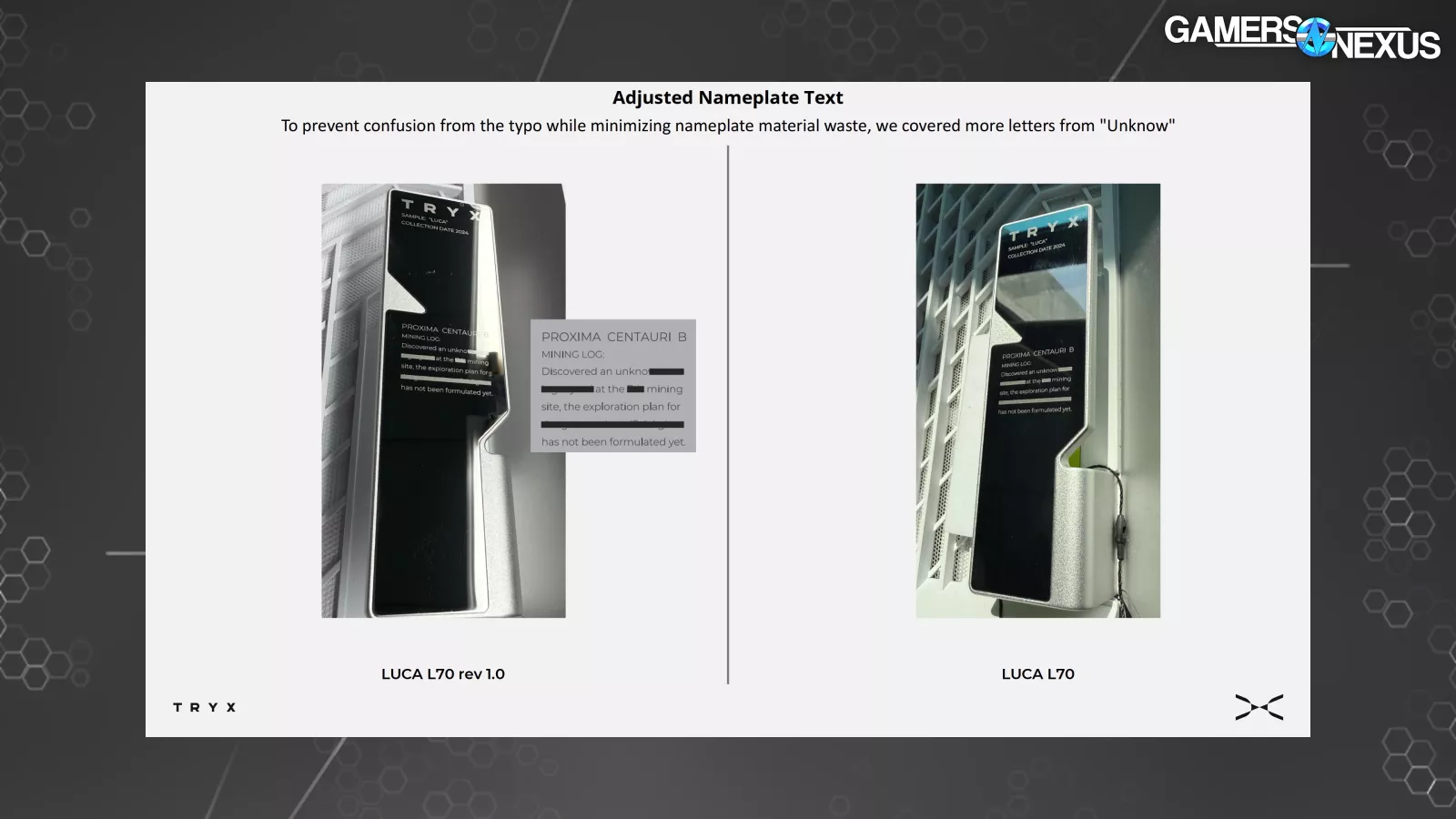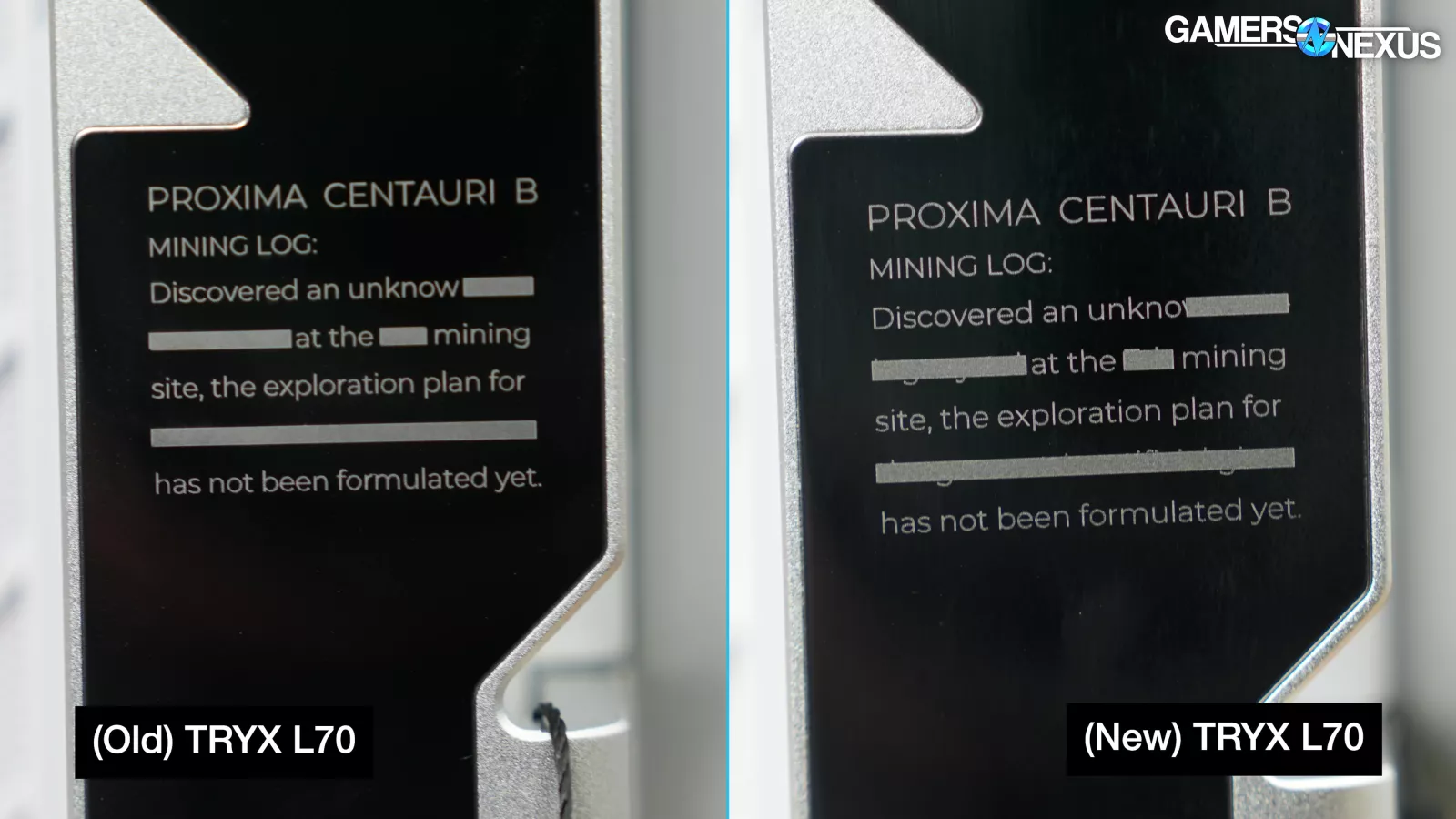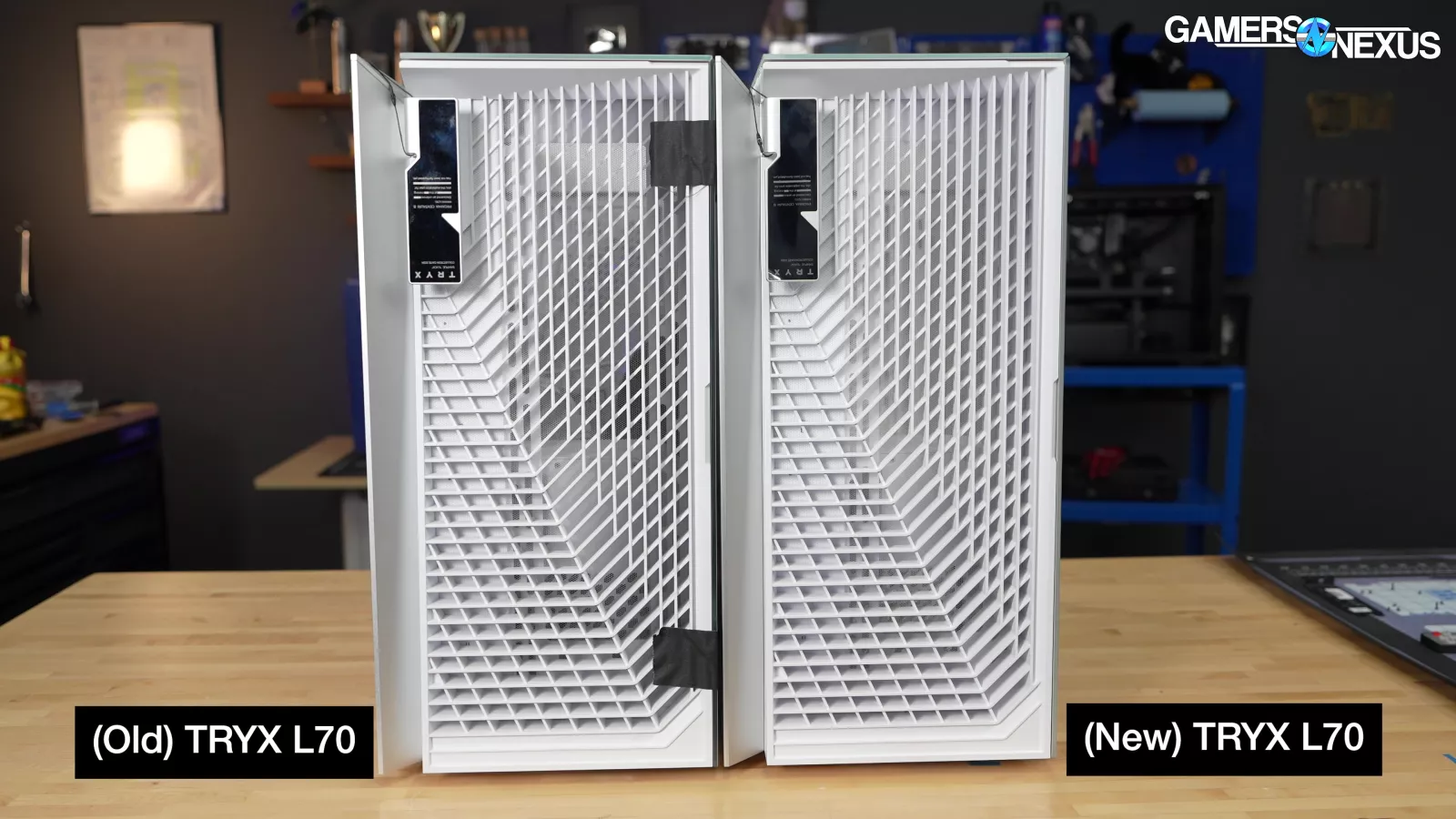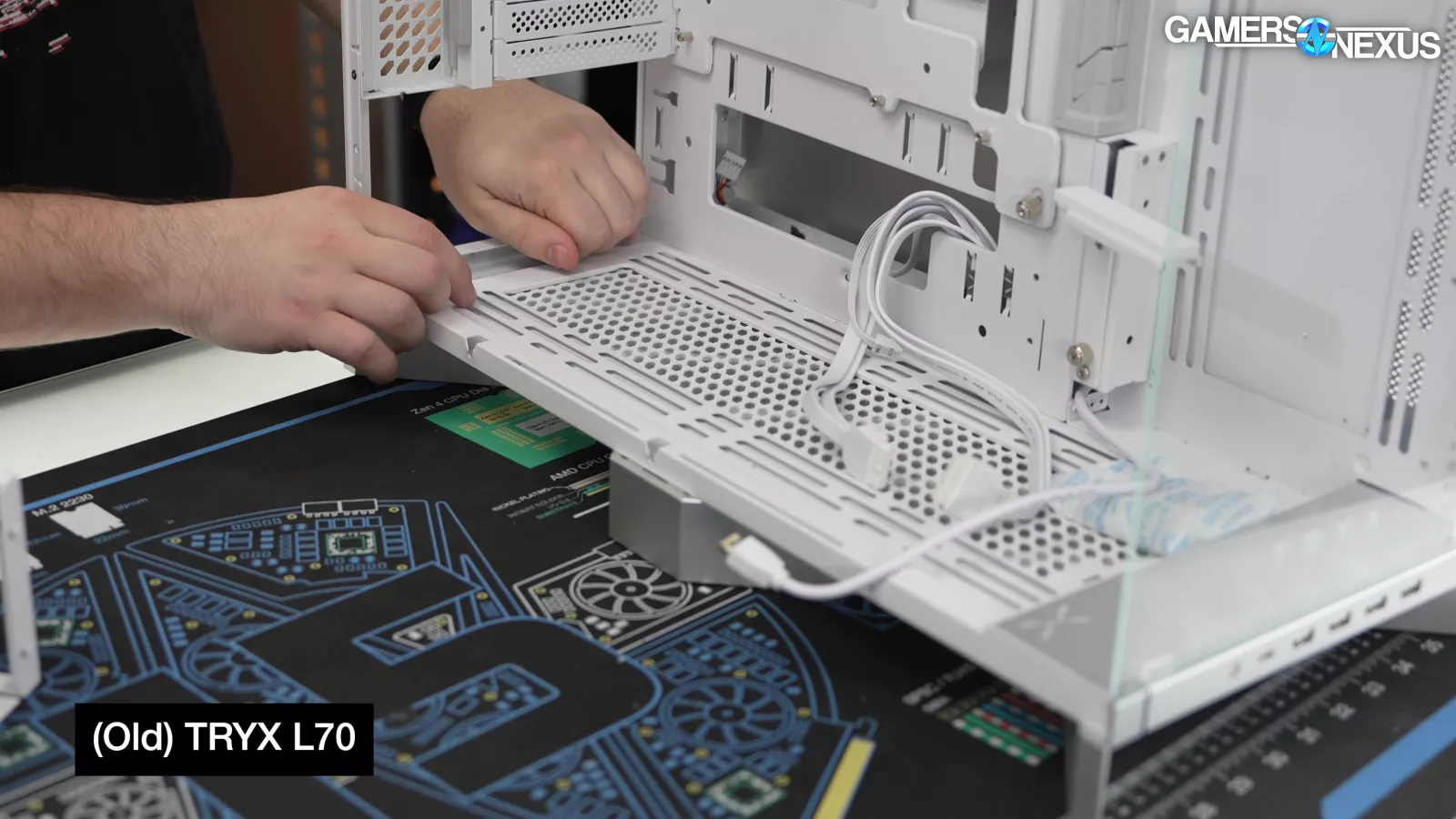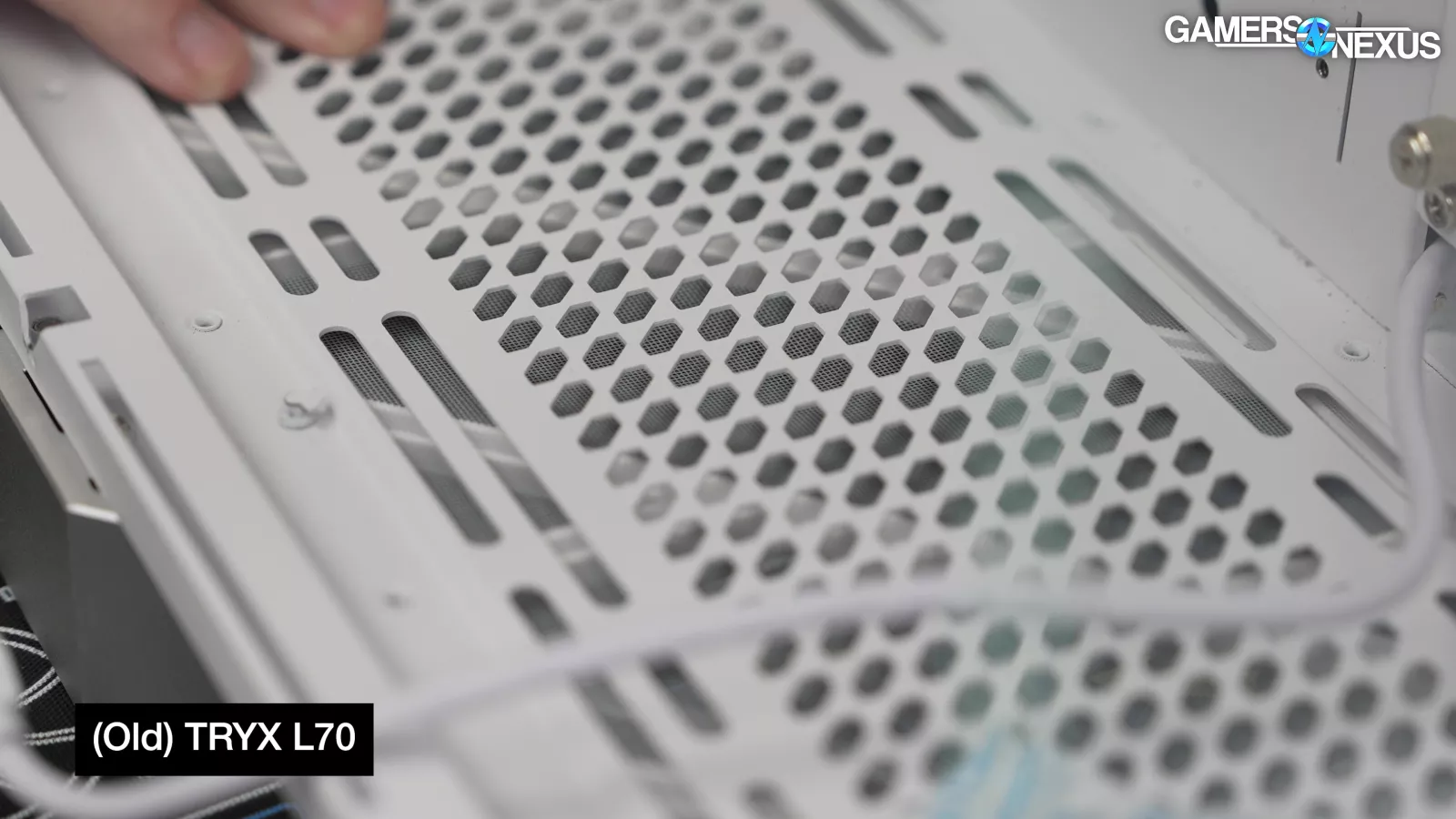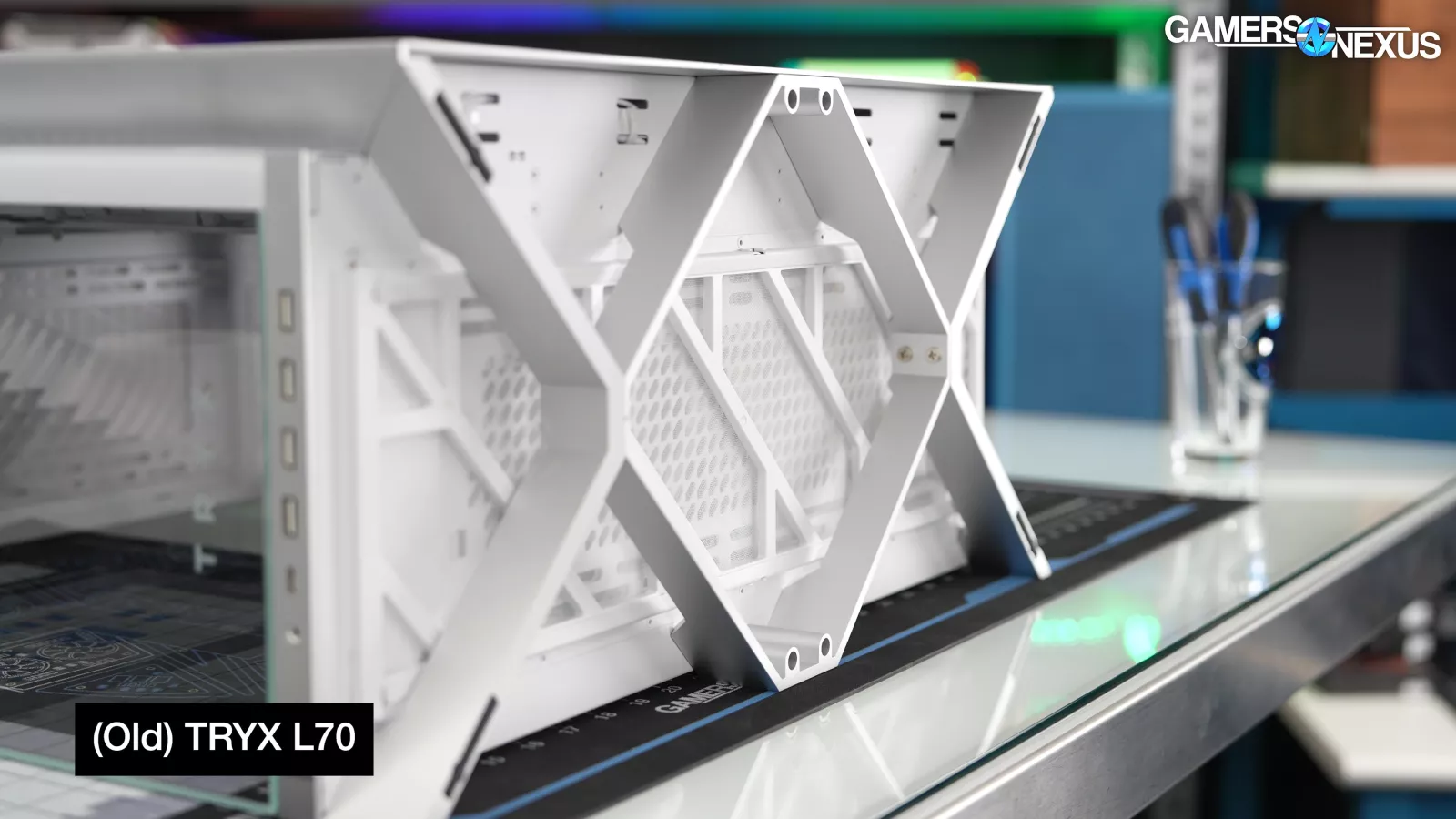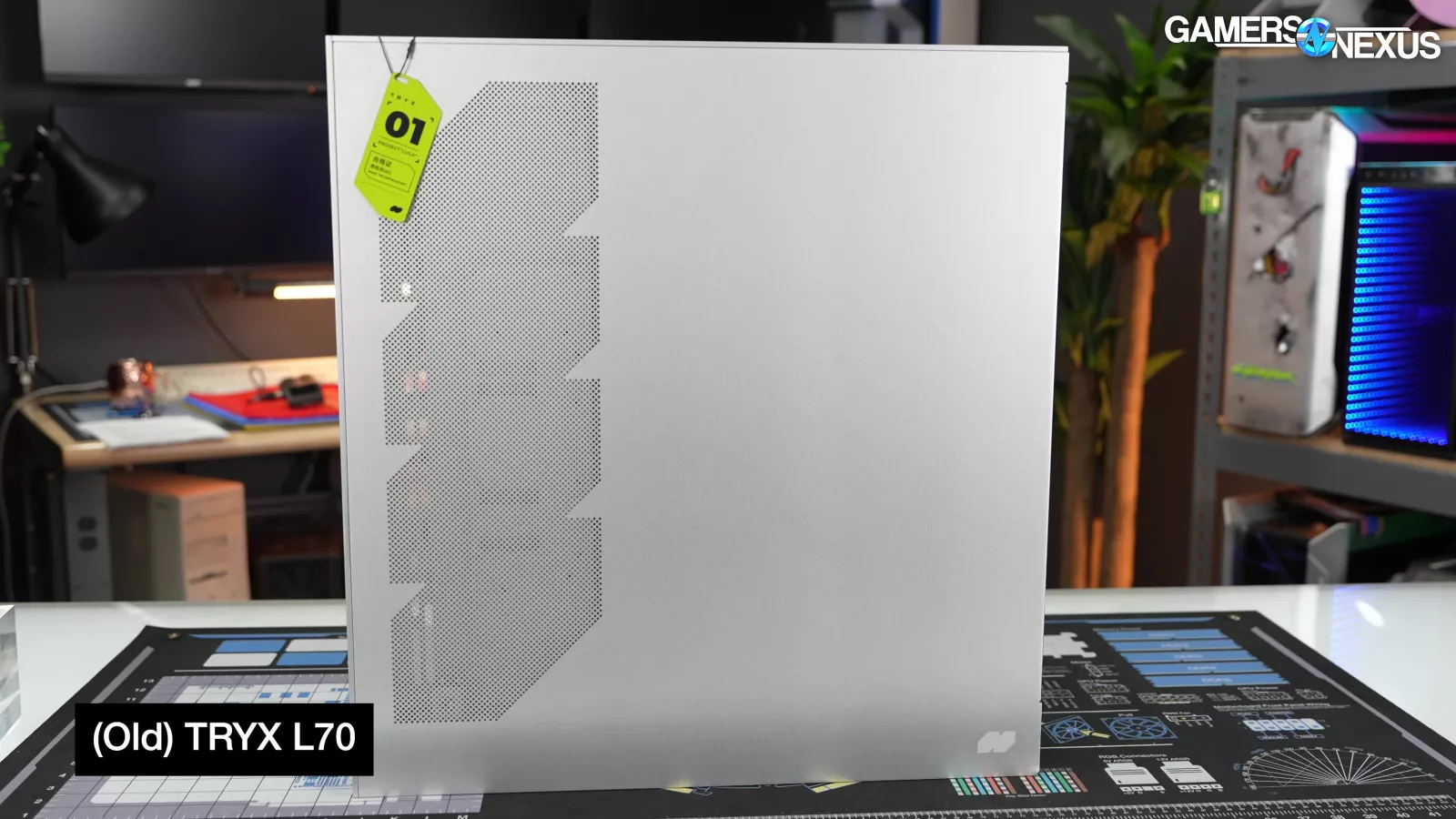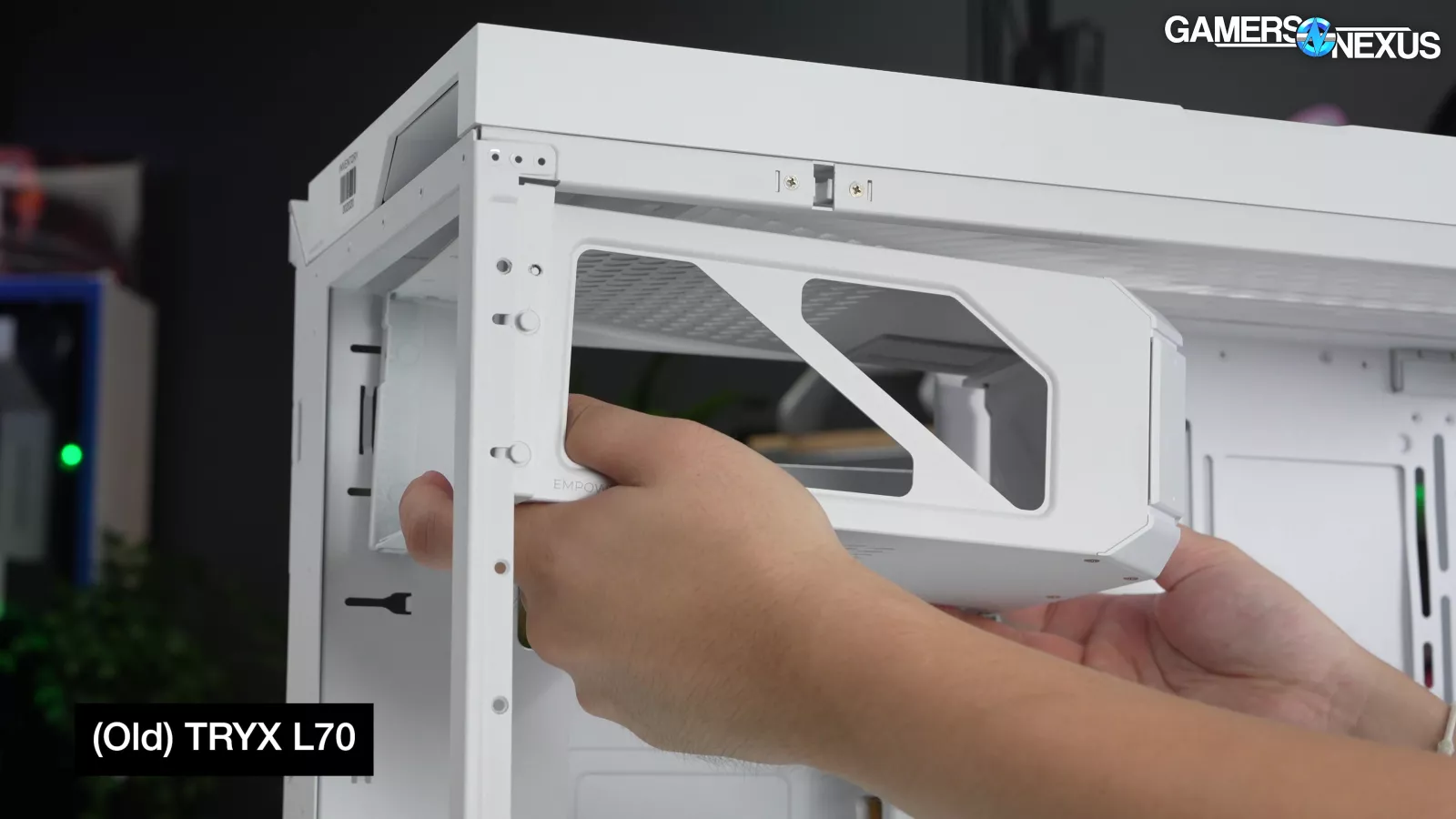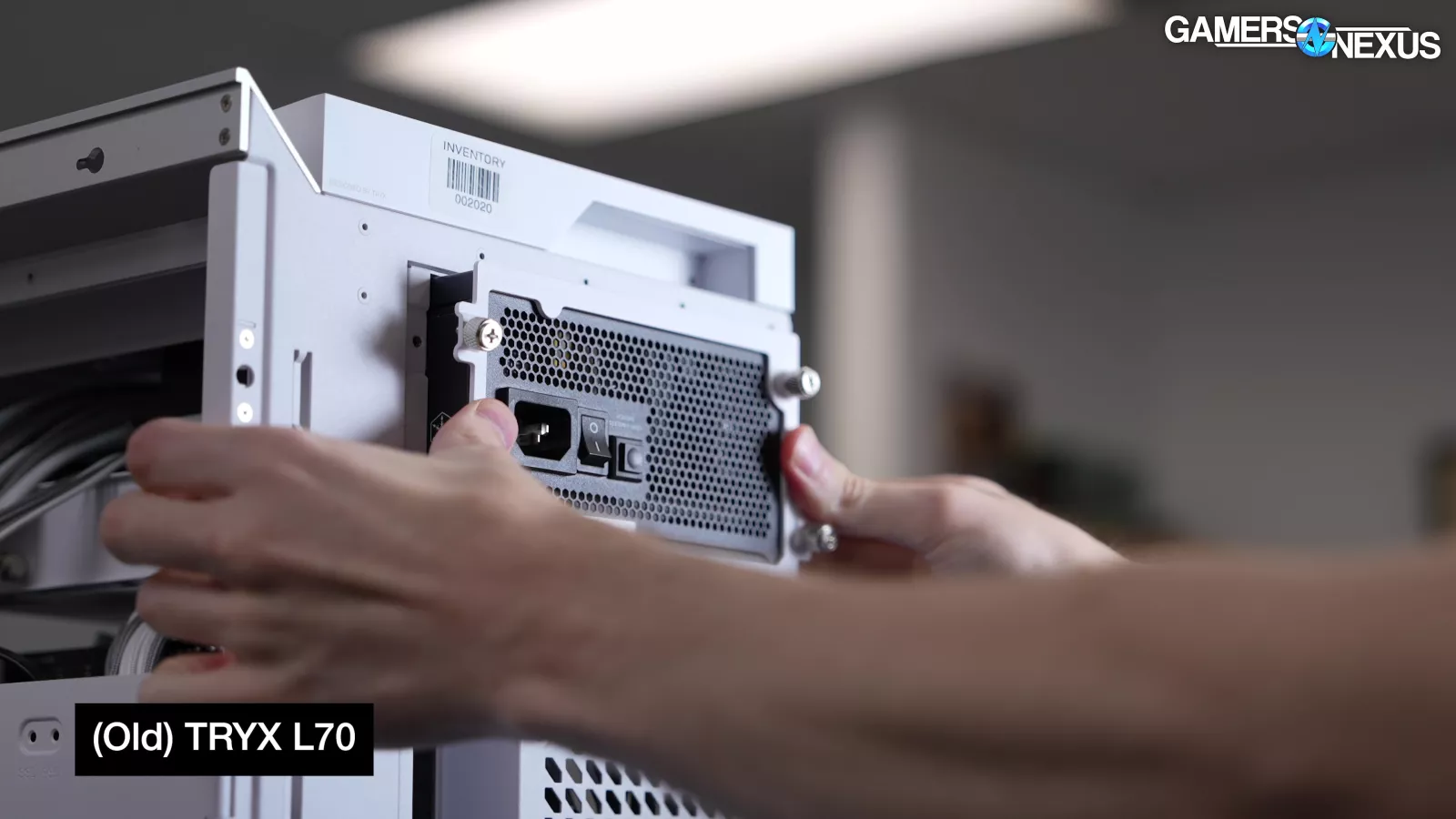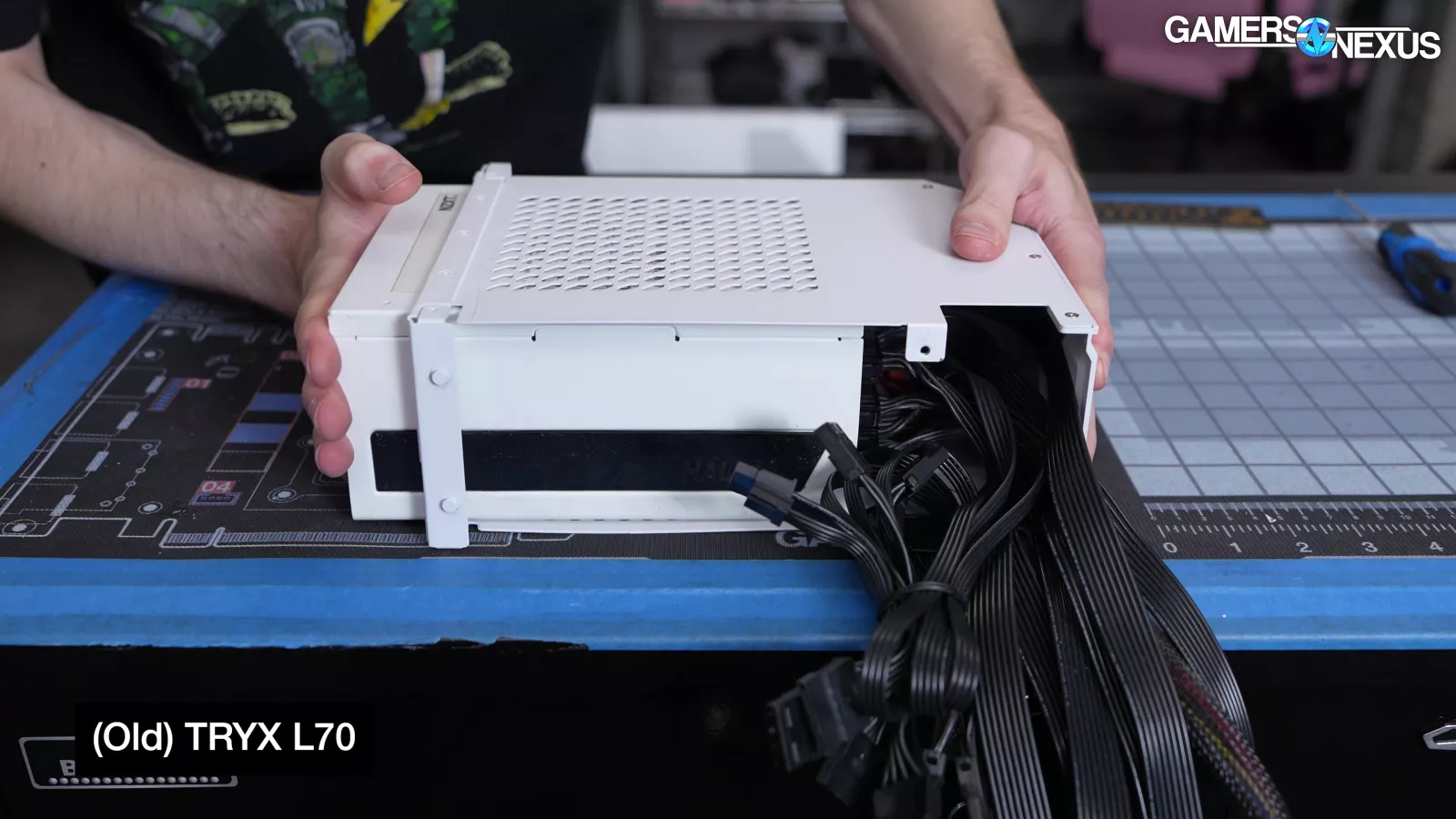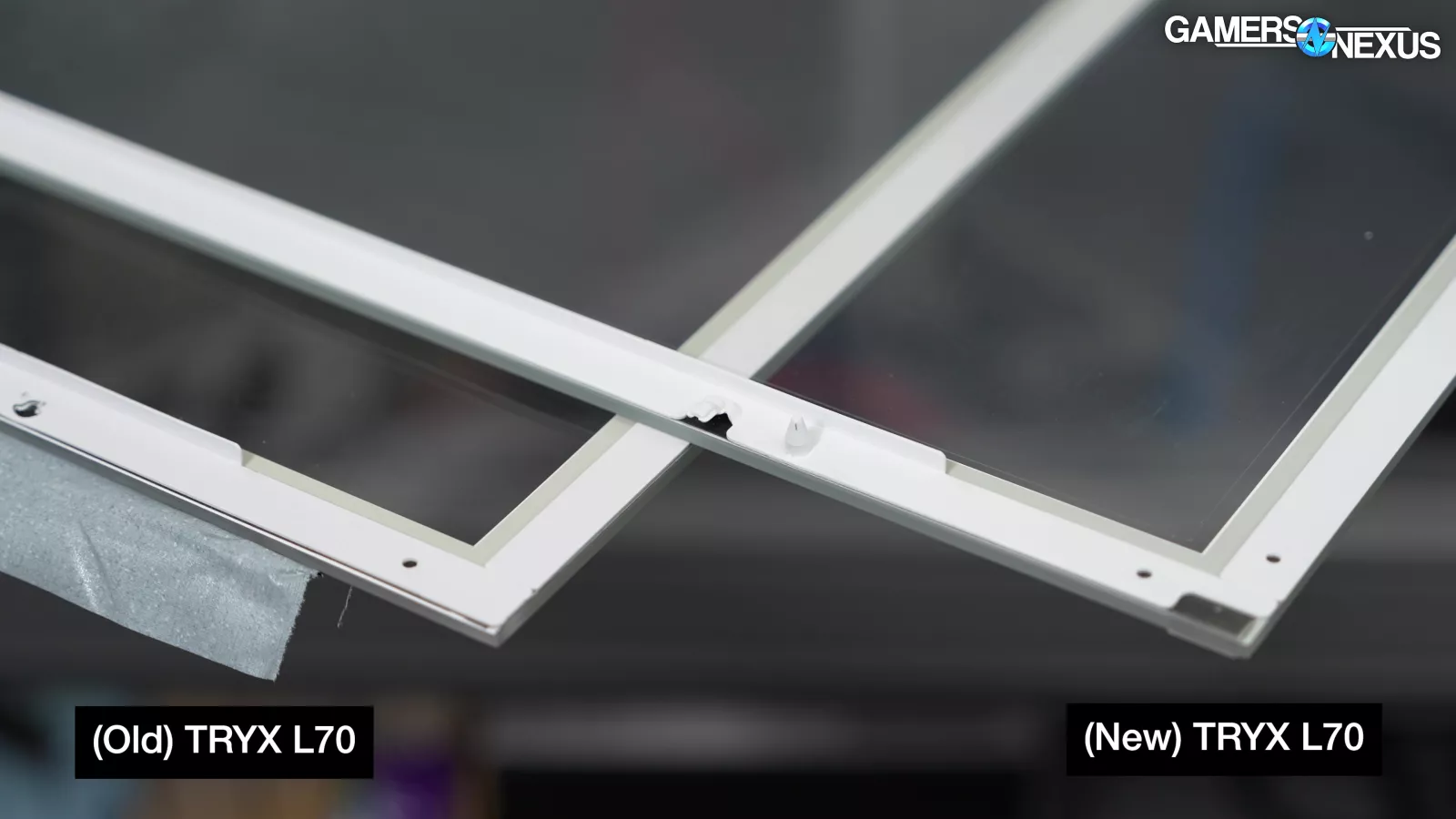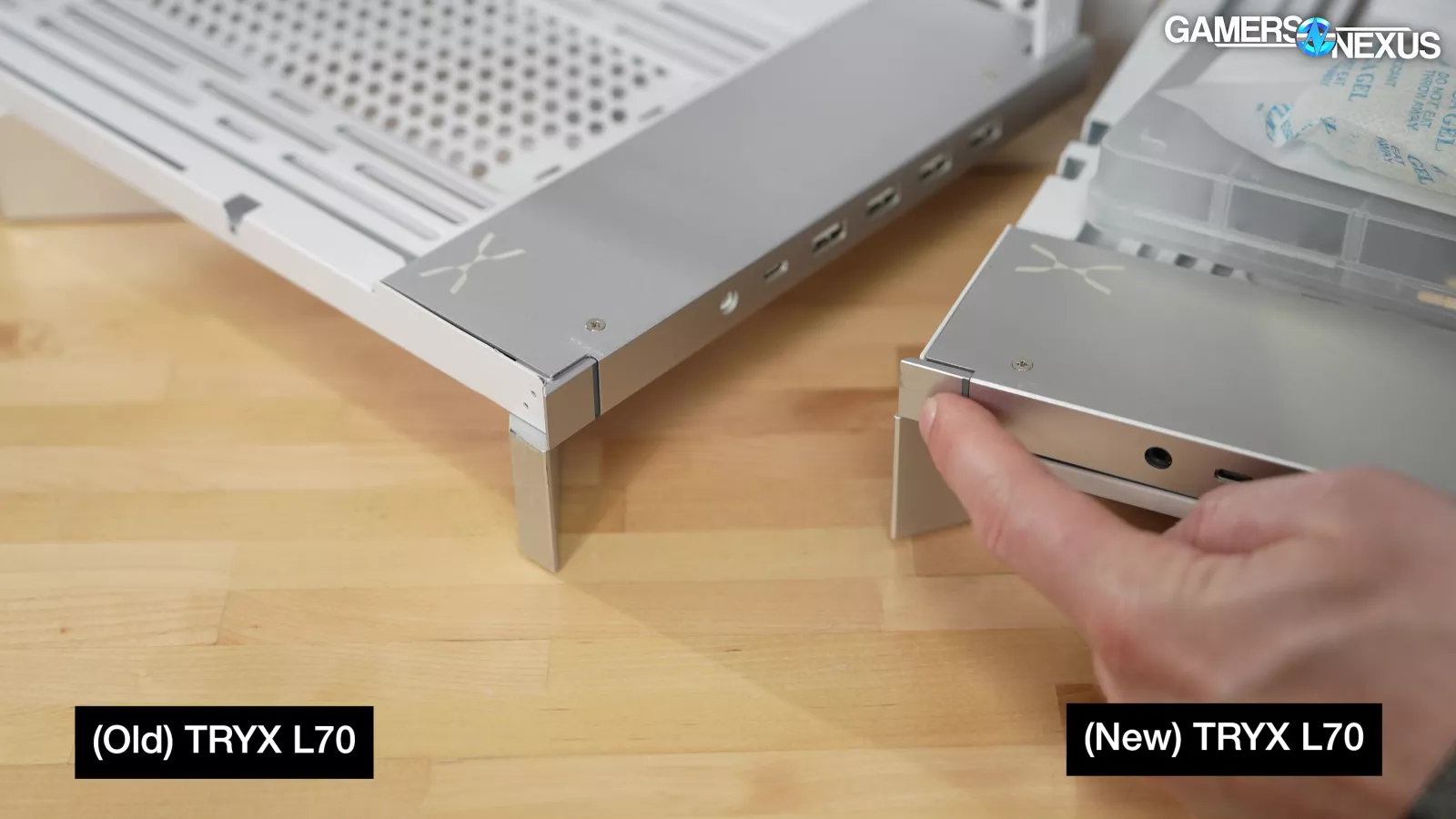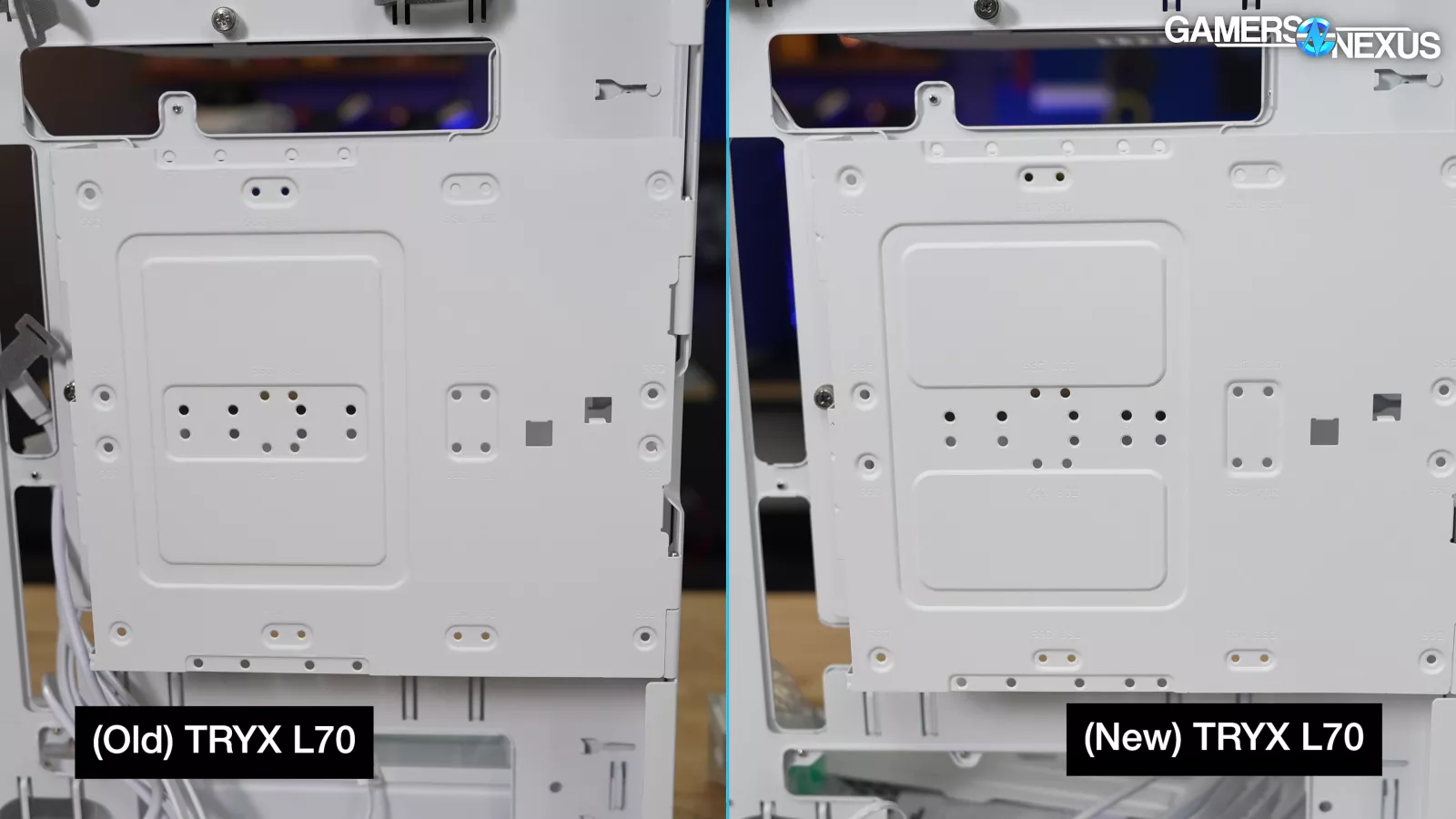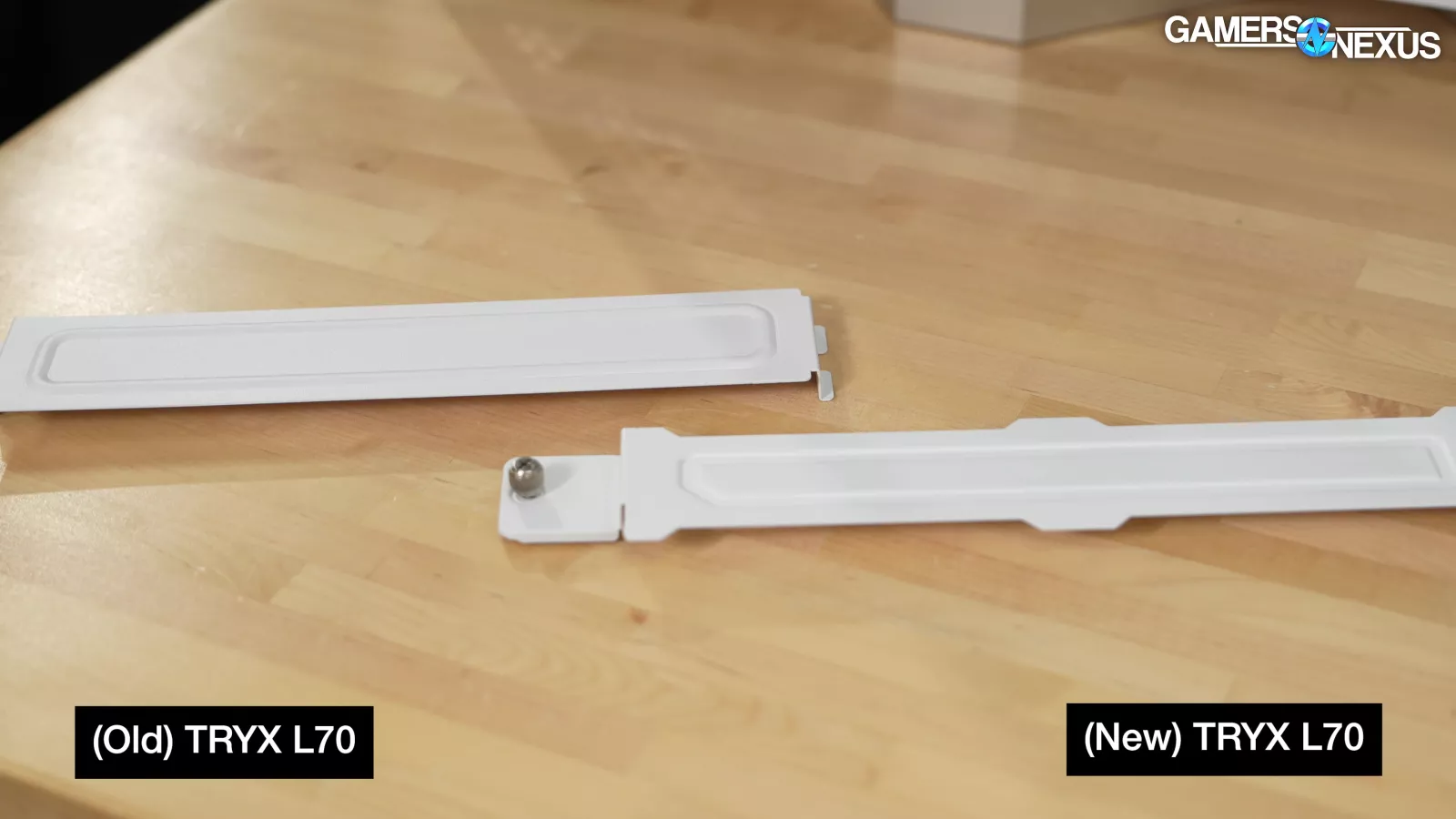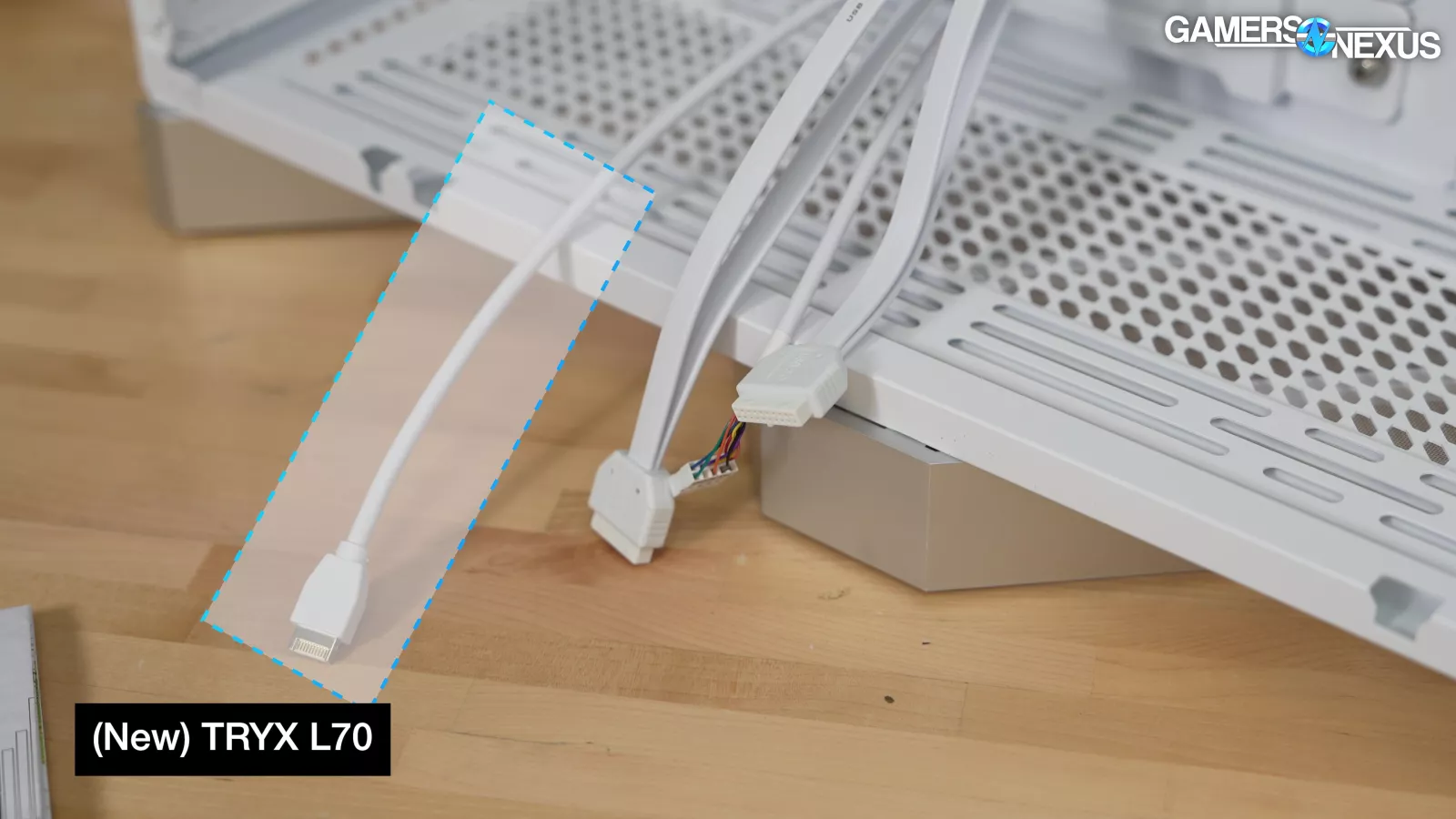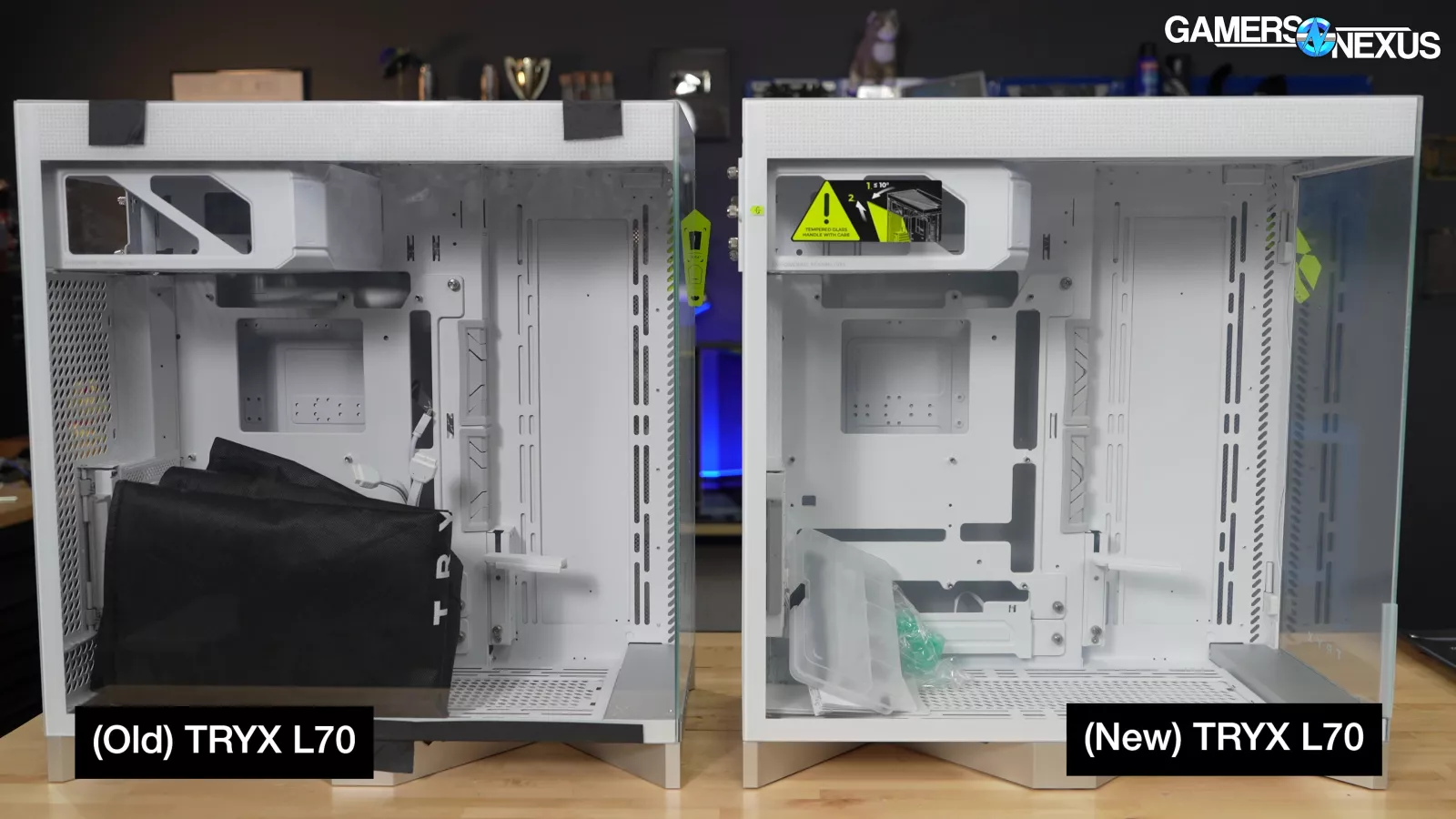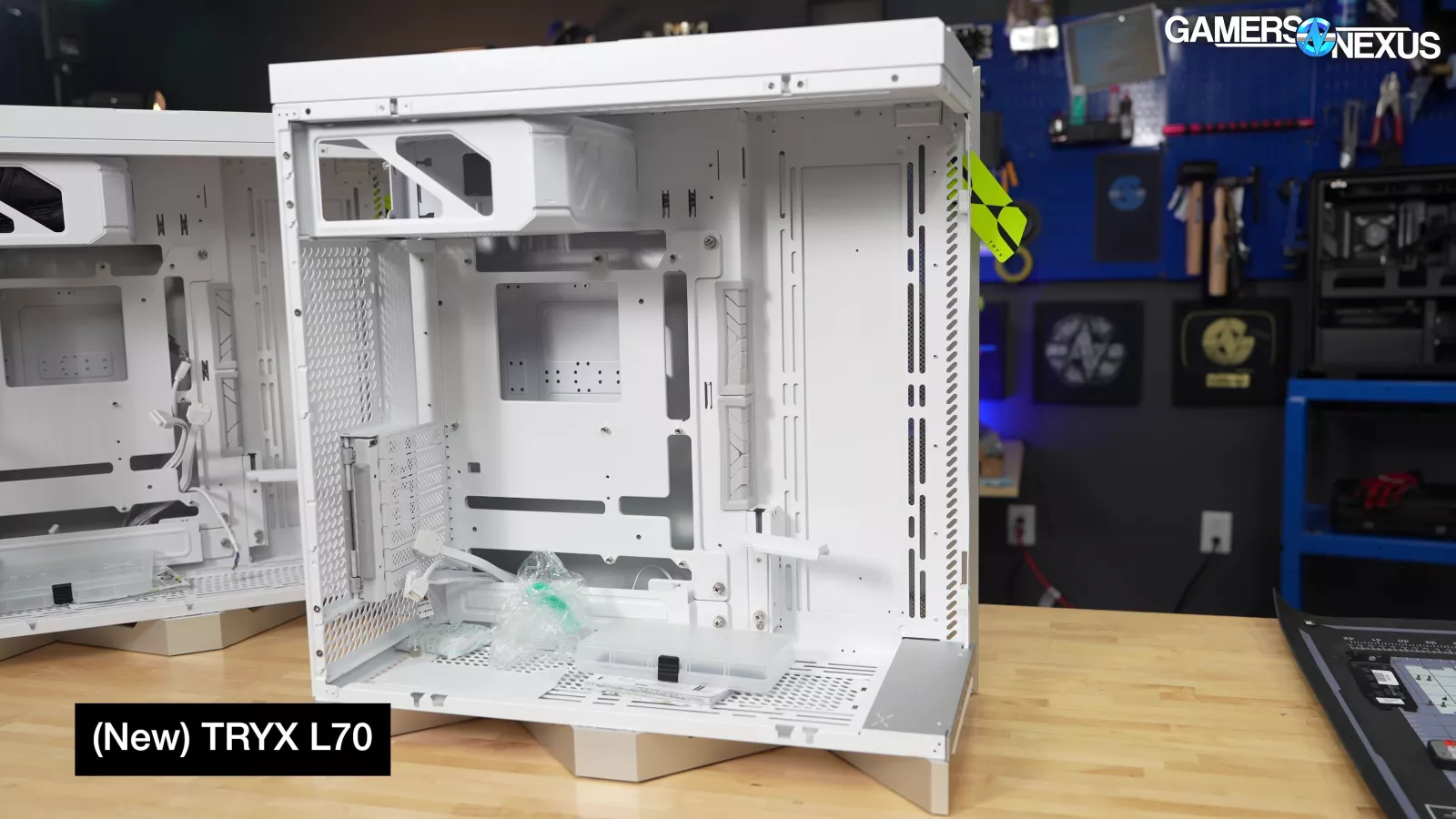
The revised version of TRYX’s LUCA L70 still has issues of varying kinds, but the case has at least improved and the company has made several changes that have resolved some nagging issues.
The Highlights
- TRYX has remade parts of its LUCA L70 case in response to one of our most critical case reviews in a few years
- We appreciate TRYX's response and some of its changes; however, unfortunately, the case again arrived with out-of-the-box issues that are primarily a result of design and not shipping
- Ultimately, this case is still not competitive against other cases that are cheaper than its (now) $250 price, up from $240, but in the very least, some of the issues have been resolved
- Original MSRP: $250
Table of Contents
- AutoTOC
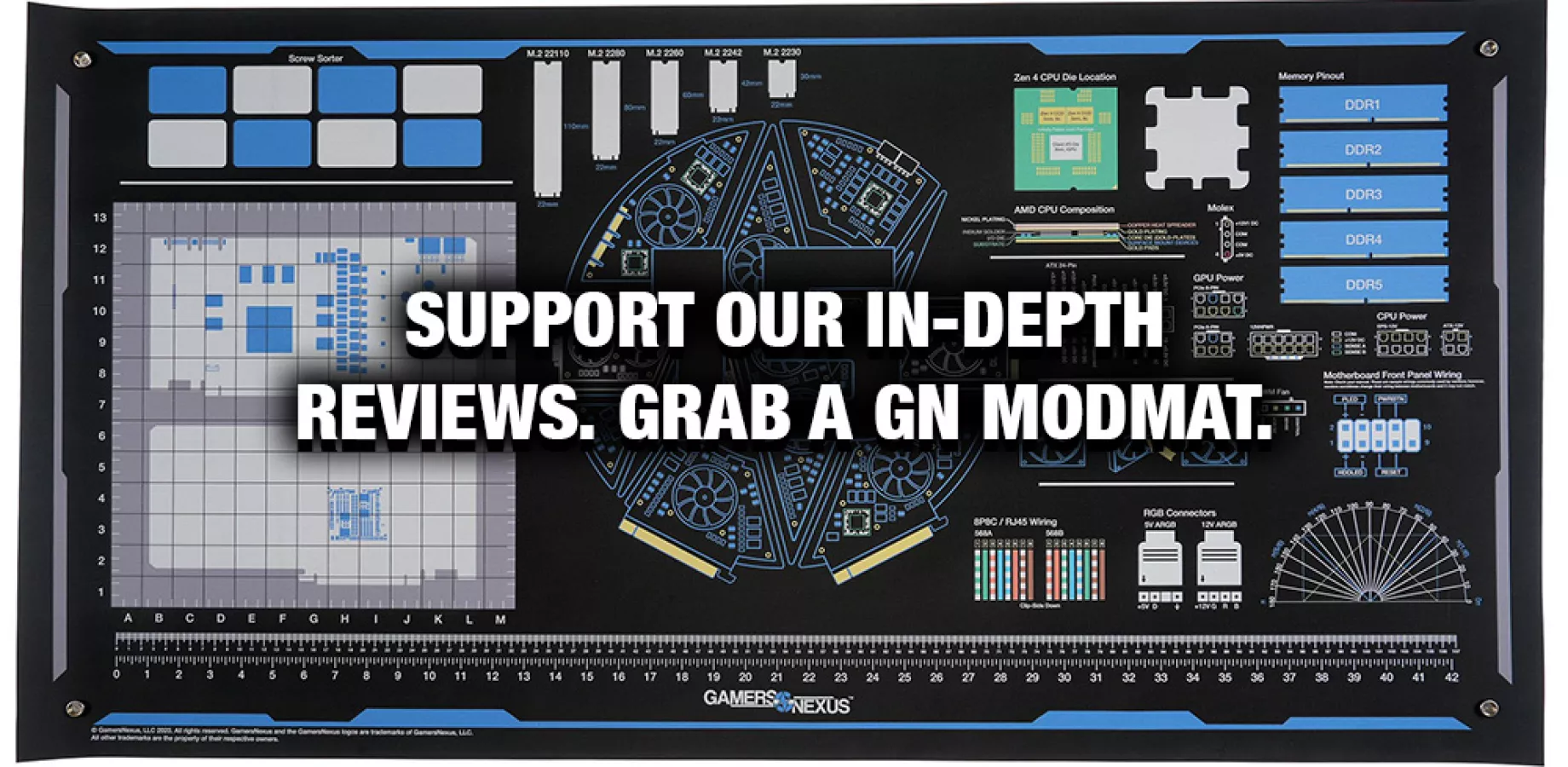
Intro
Tryx canceled the release of its $240 LUCA L70 case after our original review in order to rework the case to try and prevent things like the side panel coming off if you tilt the case on its side.
We tried it again with the company’s revised case and it didn’t come loose and fall out this time. That’s a good start for TRYX.
About a year ago, we published our critical review of the TRYX LUCA L70 with a lot of concerns about build quality and quality control.
Editor's note: This was originally published on July 2, 2025 as a video. This content has been adapted to written format for this article and is unchanged from the original publication.
Credits
Test Lead, Host, Writing
Steve Burke
Testing, Writing
Patrick Lathan
Camera, Video Editing
Vitalii Makhnovets
Camera
Tim Phetdara
Writing, Web Editing
Jimmy Thang
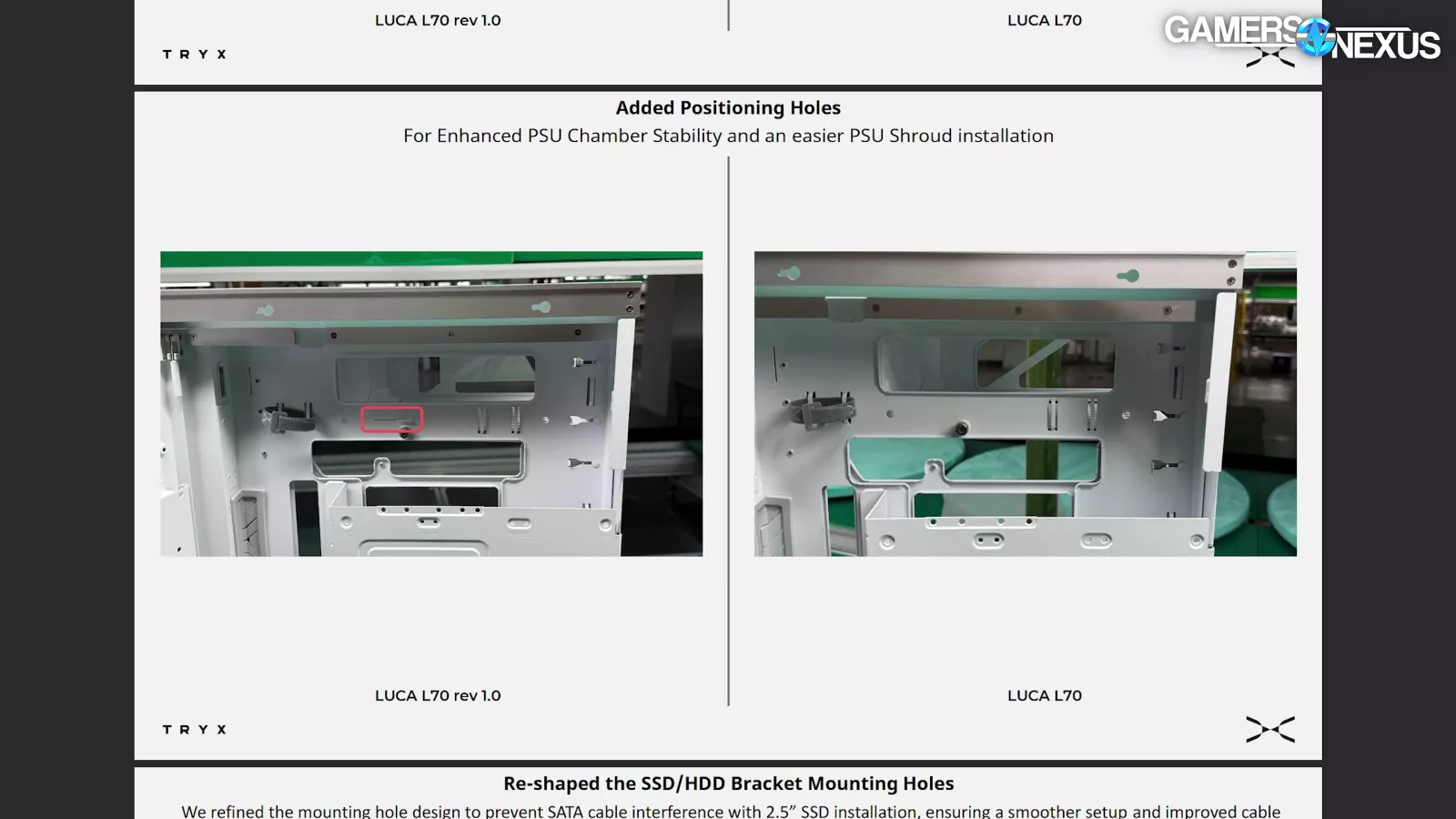
In response to our review, the company sent us a gigantic PDF detailing everything they’d changed in response to the review. This is a great approach to handling it and we want to make sure they are acknowledged for taking the time to pause the launch and then try to address things. They still, of course, have to deliver on those changes and actually fix it, but the fact that TRYX was willing to entertain this at all is better than most other companies in the space. So, credit to them for that.
Unfortunately though, the unit they shipped for re-evaluation came with screws that had been knocked loose, a bent hinge, and other problems -- but we’ll walk through each of these documented changes today.
Tryx’s L70 was an unusual new case from a company that was (at the time) brand-new and it used to be mostly known for its Panorama cooler (check out our coverage of it).

Well, it still is mostly known for its Panorama cooler, but it used to be, too.

Tryx’s cooler has recently been copied by companies like ASUS and Thermalright at Computex 2025, with ASUS being particularly personal since some of Tryx’s team came from ASUS.
More recently, Tryx showed off its Flova case with the possibility of adding a crossflow fan to ATX, which was interesting on its own. But the point is that TRYX is interesting enough to its competitors that some of them are starting to copy it.
But, again, the L70 was a really bad start.
To the company's credit, TRYX responded to our criticism by halting production while it implemented fixes, which is rare. Fractal pulled a similar move with the Meshify 3 (read our review) ahead of launch, where reviewer complaints about PCIe slot tightness triggered a pause.
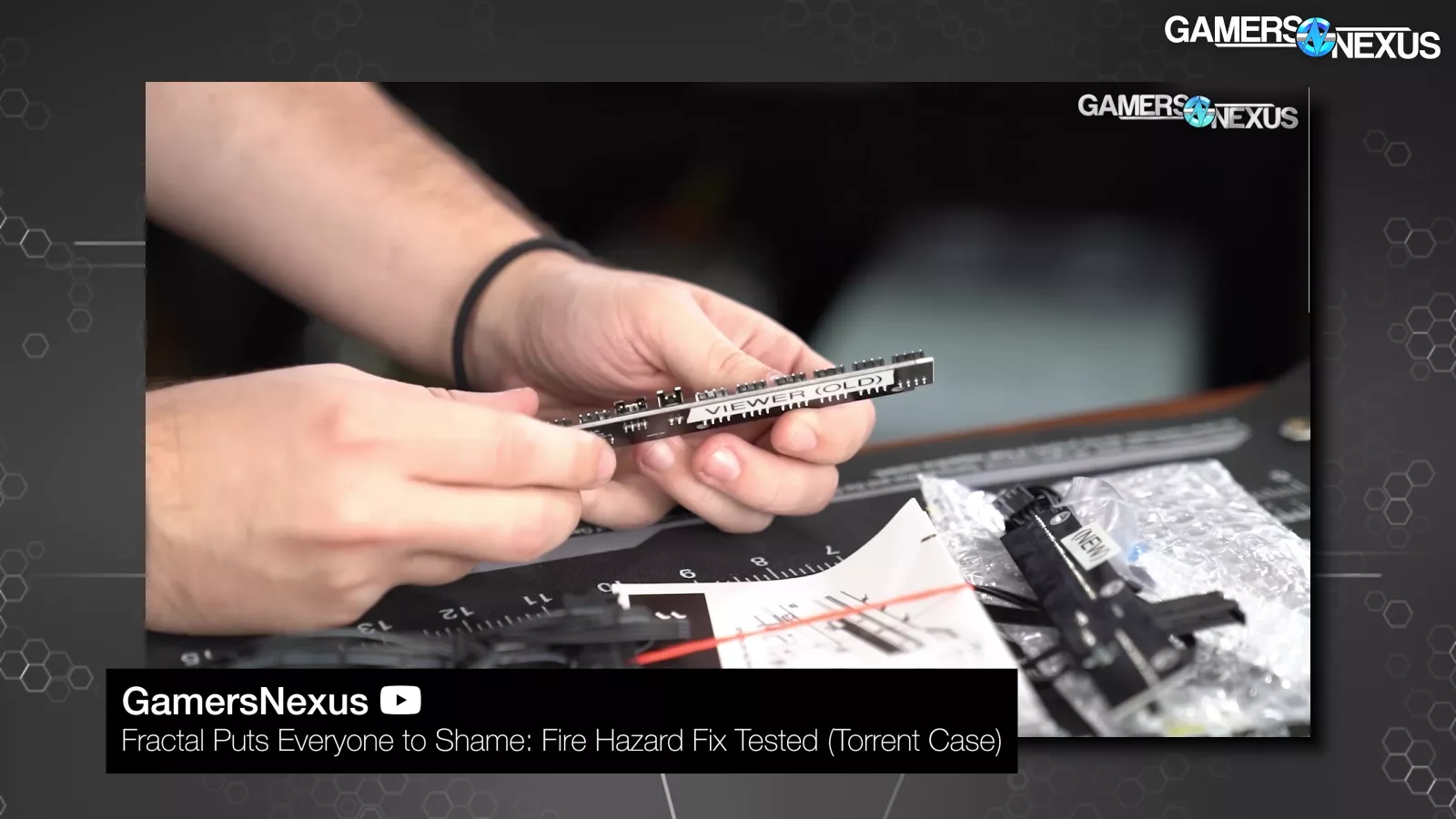
In fact, Fractal even recalled a prior case right when right at launch to rectify a fire hazard from a poor PCB design.
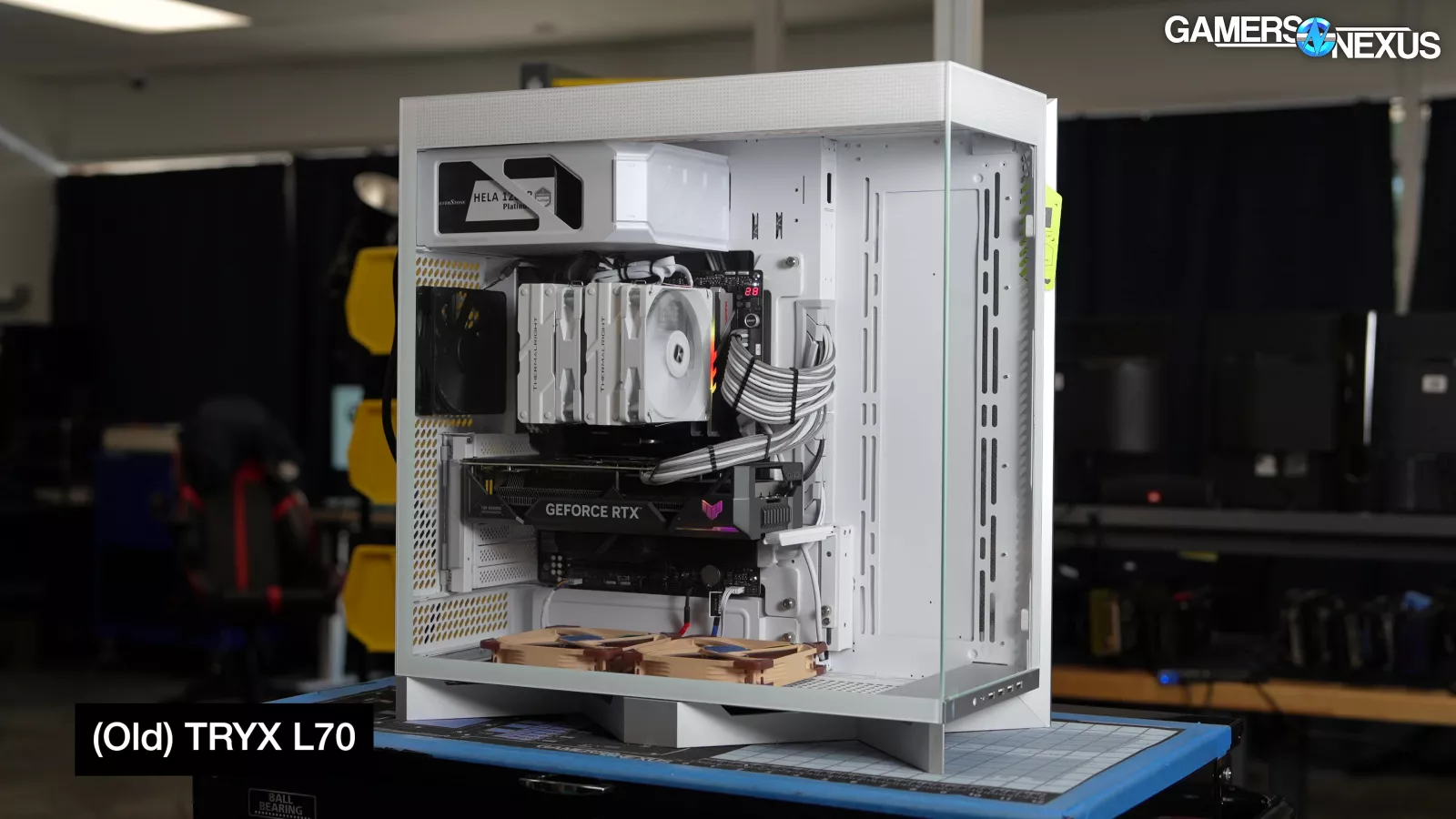
Today, we’re evaluating the L70’s changes. The thermals don’t change and the review basics don’t change from last time, so we won’t re-do all of that. We’ll focus on just the modifications that Tryx made, making this a much simpler revisit.
We’ll start with the fasteners and panel adjustment issues.
Last time, we started by showing shipping damage that led to a cascade of failures with the top panel sagging, fasteners misaligning, the side panel coming loose, and then finally the side panel falling off and tearing out chunks of the case. These issues stem from design problems.
We want to be clear about one thing, though: Tryx has repeatedly reframed our complaints as shipping damage in communications with them at events like Computex, but the majority of our complaints were about design, quality of life features, and quality control at the factory, not shipping. Shipping was just one part of what was otherwise a mess of a case.
And even when it comes to shipping, the damage itself wasn't the main problem: the fact that the case was vulnerable to damage was one item on a laundry list of other quality-of-life complaints, none of which were acceptable in a $240 case. Due to everything that's happened since September 2024, that MSRP has (understandably) increased to $250.
TRYX stayed in contact over the months and provided us with a list of proposed changes, then a final overview of the actual production changes. Things like the side panel attachment, drive brackets, cable lengths, grommets, and even the typo on the handle are part of a long list of changes.
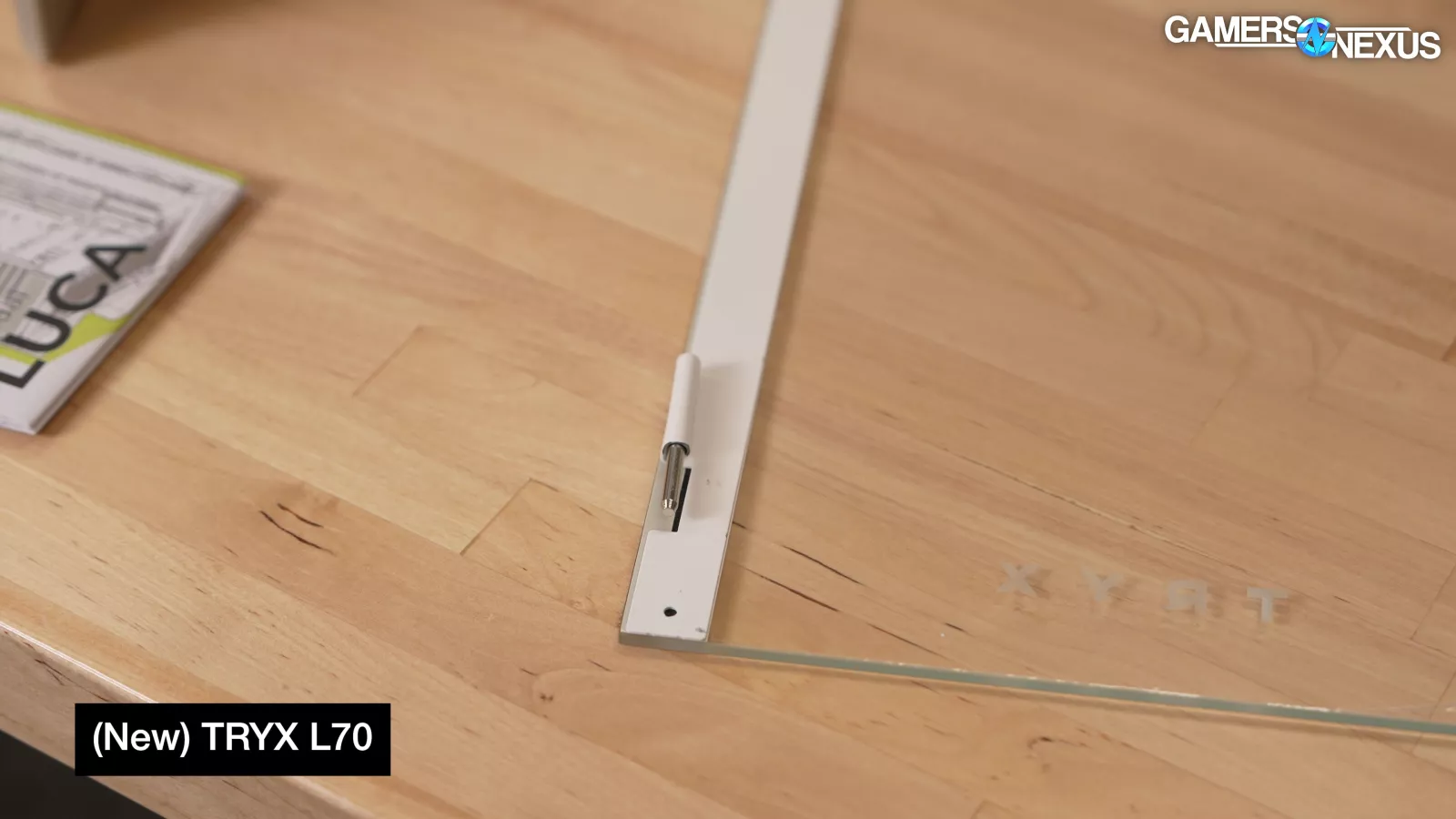
But some things have remained the same, like a bent hinge in the new sample.
We're going to go into minute detail here regarding things that are different from the original sample: if you want more general information about the case and thermal performance, watch our original review. This is going to be a highly specific follow-up.
Accepted Changes
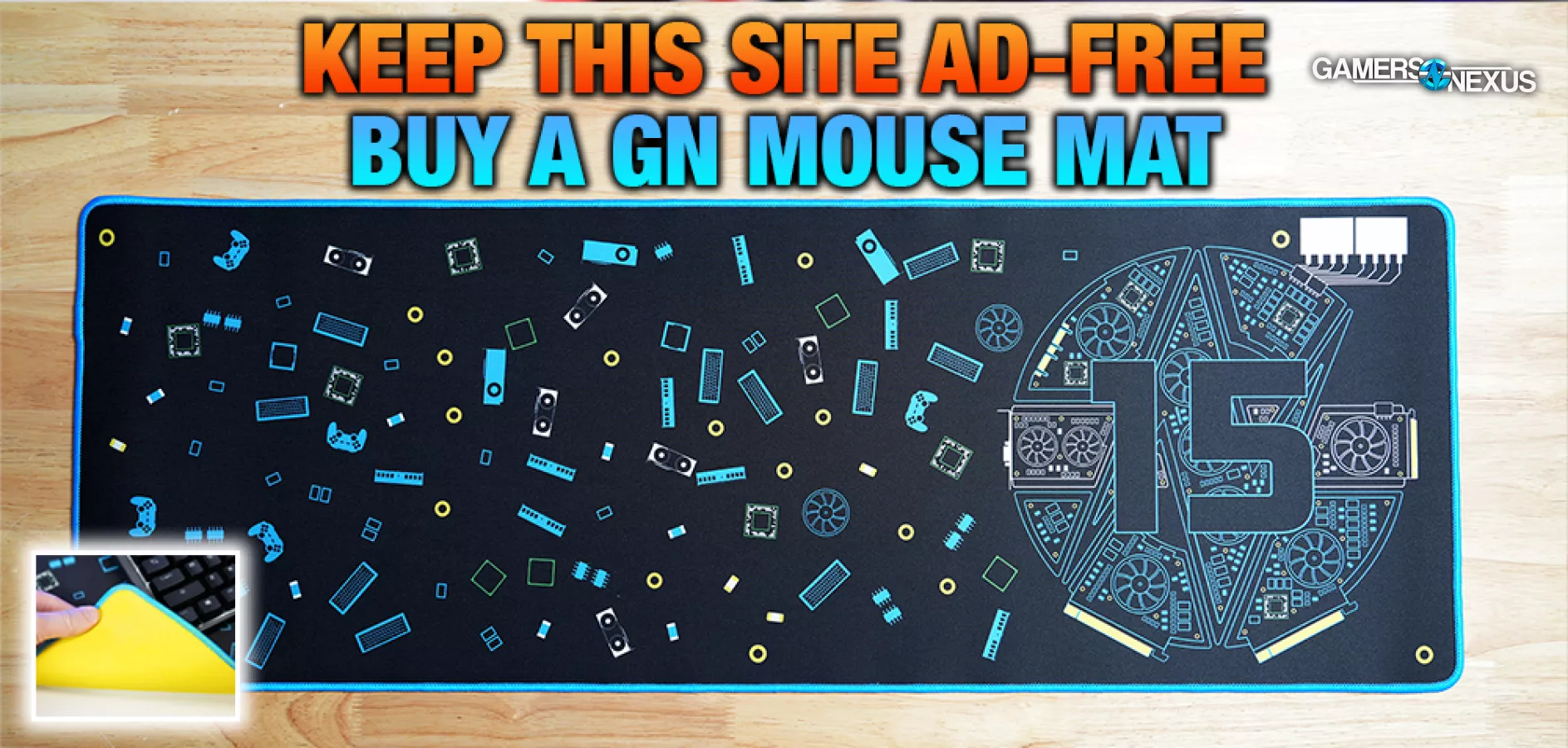
Starting with the accepted changes:
Tryx says that items like the massive gouges in the aluminum feet, bent support for the SSD mounting bracket, deformed fan rails, damaged front I/O and power button area, and bent motherboard tray have been addressed with "increased EPE material density to improve protection during shipping." We think that's probably true, but we don't have the original foam on hand to compare, and the before-and-after pictures in TRYX's document are the same photograph but mirrored. We’re not sure why they did that. TRYX originally indicated that it intended to add extra warnings about fragility to the external packaging, but this wasn't included in the final change list.
Our new review sample arrived mostly unscathed, with one exception:
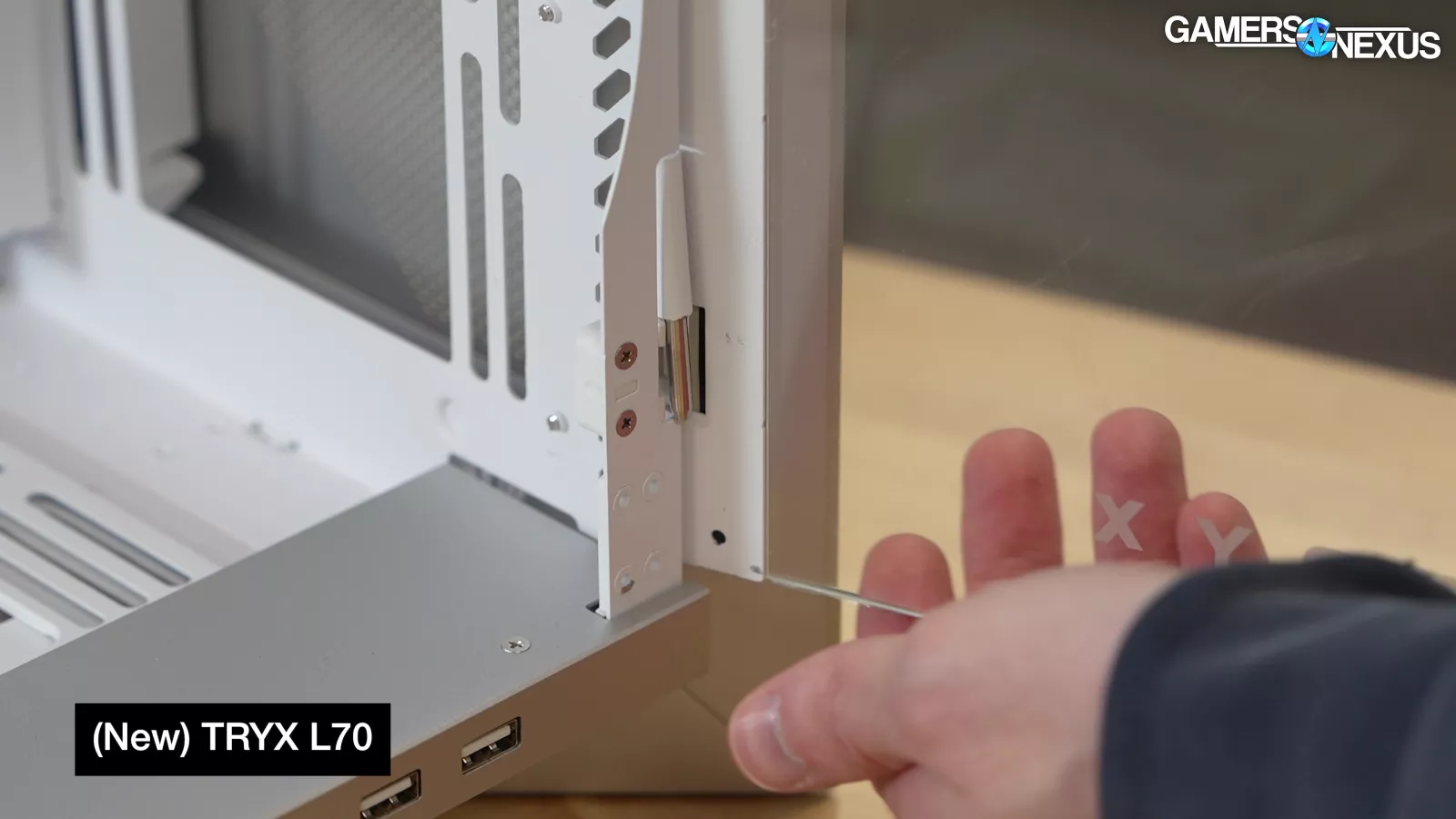
There was a severely bent lower hingepin on the front panel; however, we again believe this is a factory defect, not shipping damage.
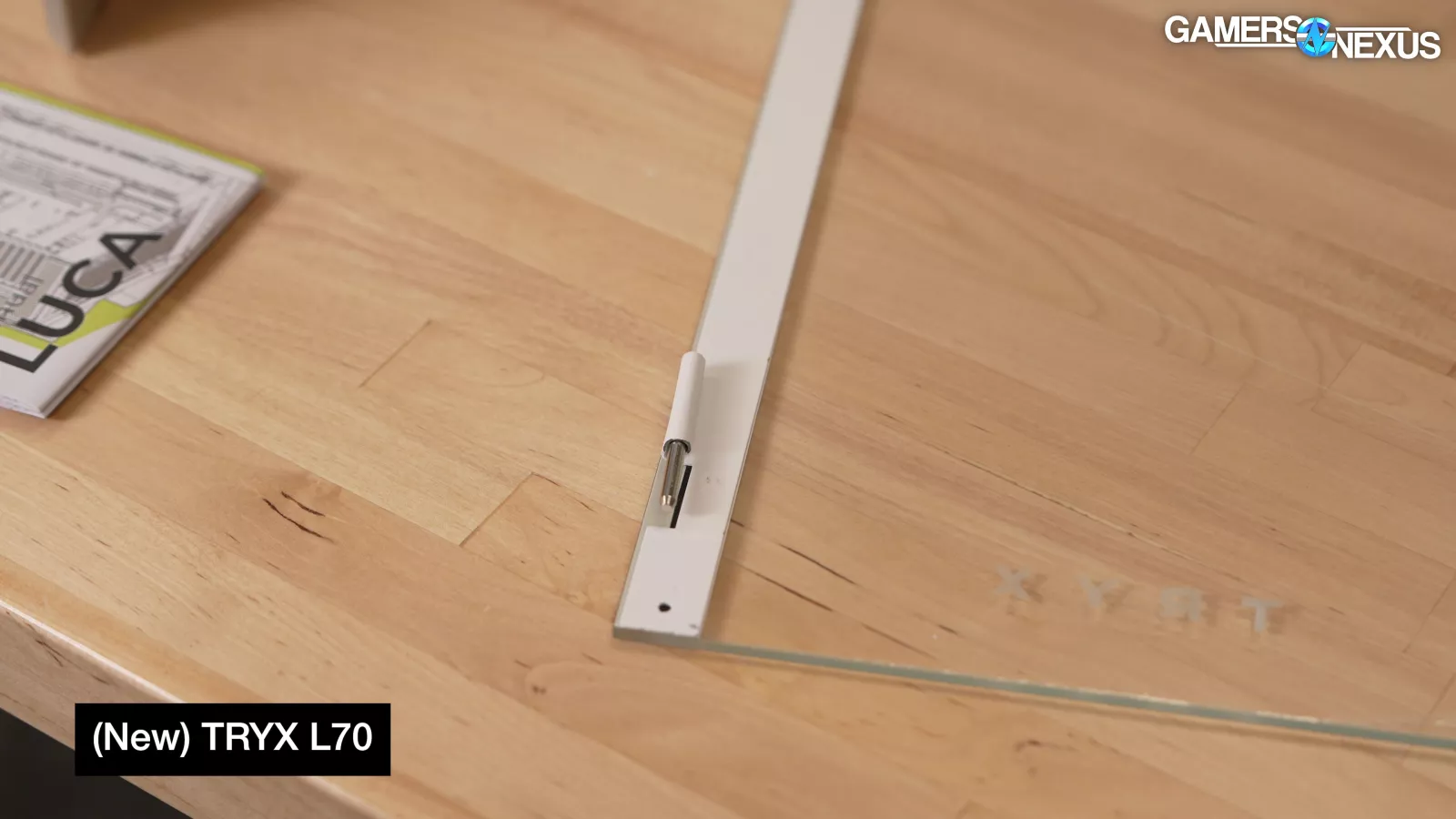
When the panel is opened, the pin pops out. This is a sample that TRYX sent directly to us, not an undercover purchase, so our confidence in their quality control is non-existent. That’s twice now.
We also found that one of the motherboard standoffs came loose during shipping and was stuck to a magnet elsewhere in the case, although every other standoff remained tight.
First of all, it’s the company’s responsibility to get a product to an end user without damage. This is twice now that this case has arrived with issues, indicating to us a combination of QC issues and shipping issues. Secondly, it is easy to hide behind “shipping damage” and throw carriers under the bus as a universally hated boogie man, but this is twice now that this has happened, and again, evidence points toward factory QC issues. Even on the shipping side, if a product is fragile, it is up to the manufacturer to figure out how to pack it.
Tryx reworked the side panel to try and deal with some of this. There are some positives in this panel rework.
TRYX has limited control over shipping damage; the bigger problem in our original review was that an impact on the corner of the case was able to seriously damage its function. Specifically, the glass side panel was knocked out of alignment with the snaps on the case on the original, allowing it to flop out on the table and tear off chunks of metal in the process.

The major change here is "positioning rivets on the glass panels for transportation, preventing chassis deformation."
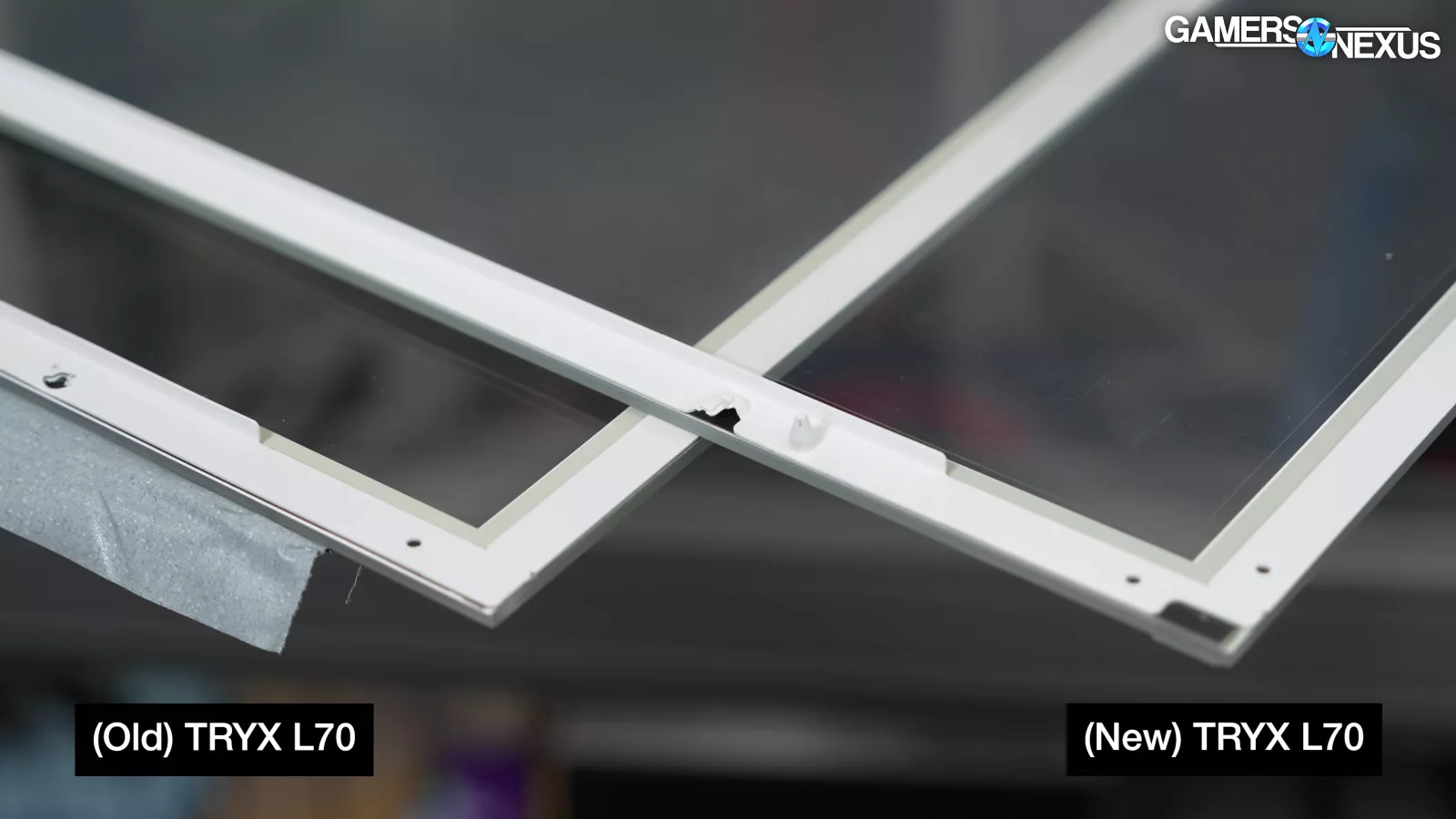
These rivets support the top panel when the side panels are installed and should keep the snaps correctly aligned, which is a solid improvement from TRYX that we’re happy to see.
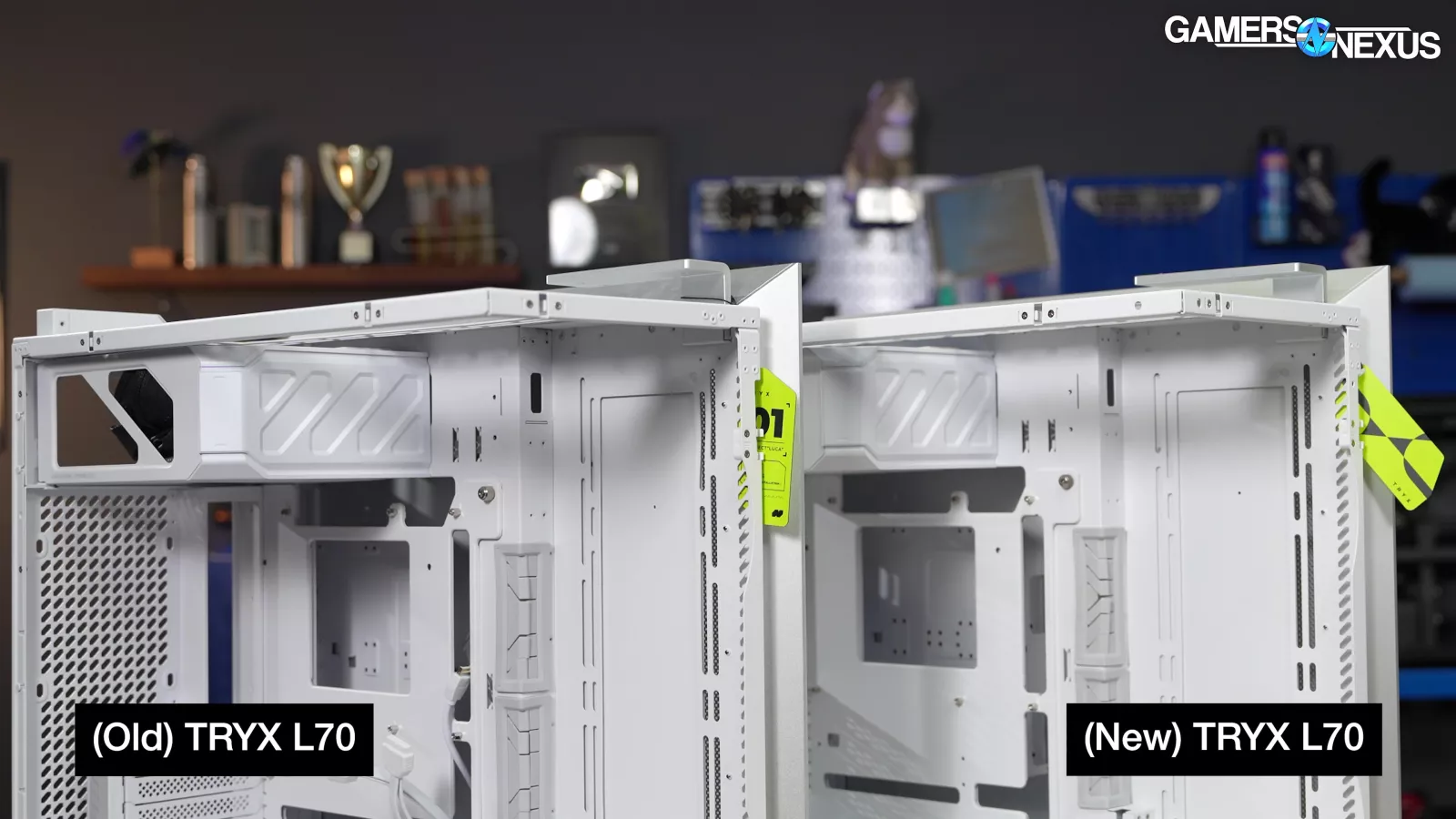
The top panel itself doesn't appear to have been reinforced, unfortunately, but the rivets should be adequate as long as the glass panels are installed.

In addition, TRYX says it "removed the hovering function on glass side panel," meaning that the panel doesn't hang open on studs (the parts that tore off). This seems like a wise tradeoff to us; the hovering function isn't important enough to risk permanent damage.

A screw has also been added to the glass side panel to secure it during shipping, as well as a sticker warning about the presence of the screw. The screw is useful for carrying the case around or shipping it. This is a good improvement. We’ve maintained that glass panels should be securable with screws if only for transit, so we’re happy to see this. Even still, with the addition of the rivets, we're comfortable removing the screw for daily use now.
But like the damaged hinge, not every change actually addressed the problems.
In the original L70, the motherboard tray and PSU cage were fastened in with thumbscrews AND little flush-head screws that required a driver, defeating the purpose of using the marketed toolless thumbscrews since tools were required.
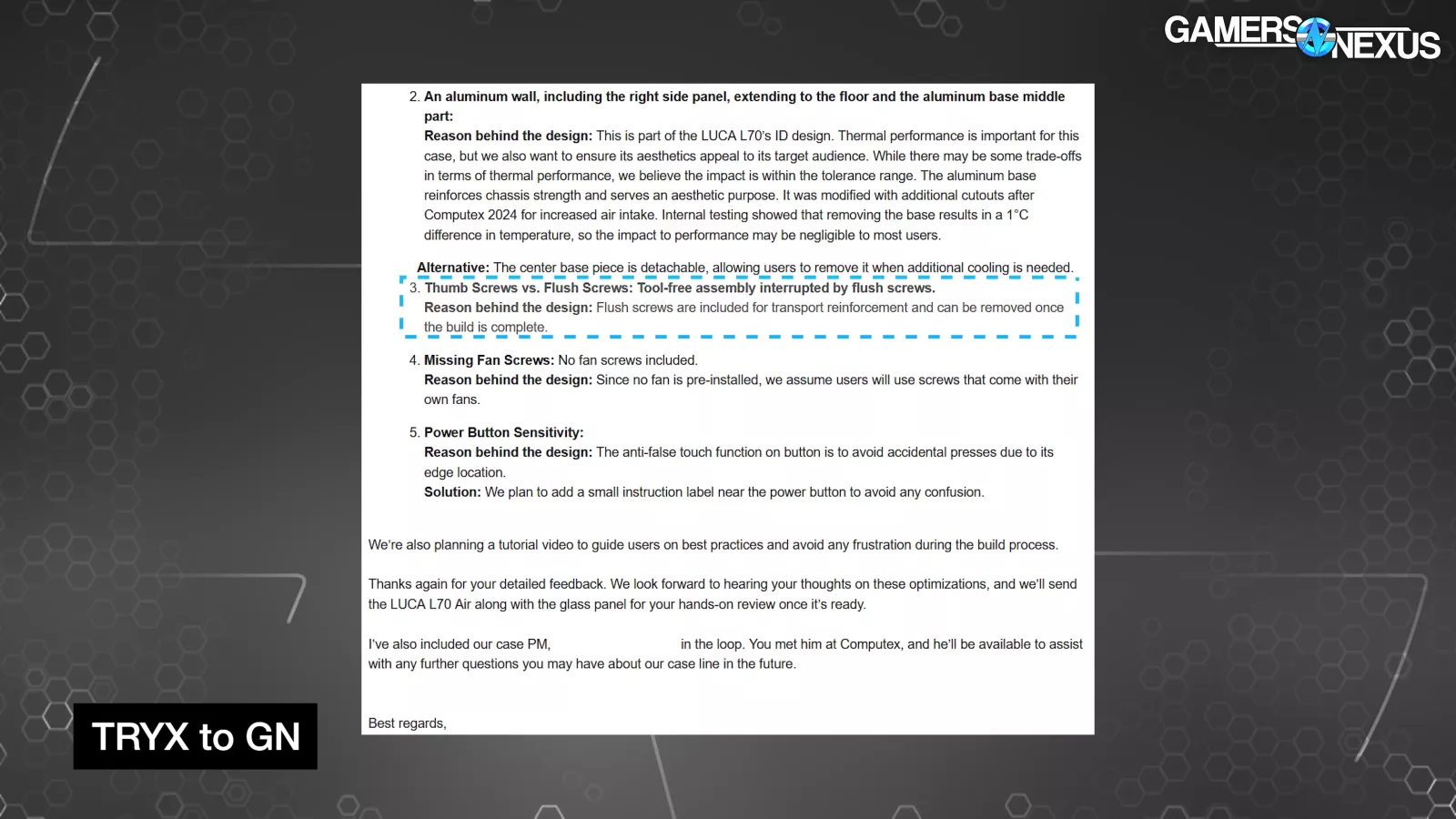
TRYX made a partial change here: it explained that "flush screws are included for transport reinforcement and can be removed once the build is complete,"
Which is fine, but doesn’t change the fact that it’s not tool-less, but OK, and its fix was to use larger still-not-tool-less screws despite being marketed as tool-less removal "to avoid being inconspicuous, preventing users from overlooking them during use."
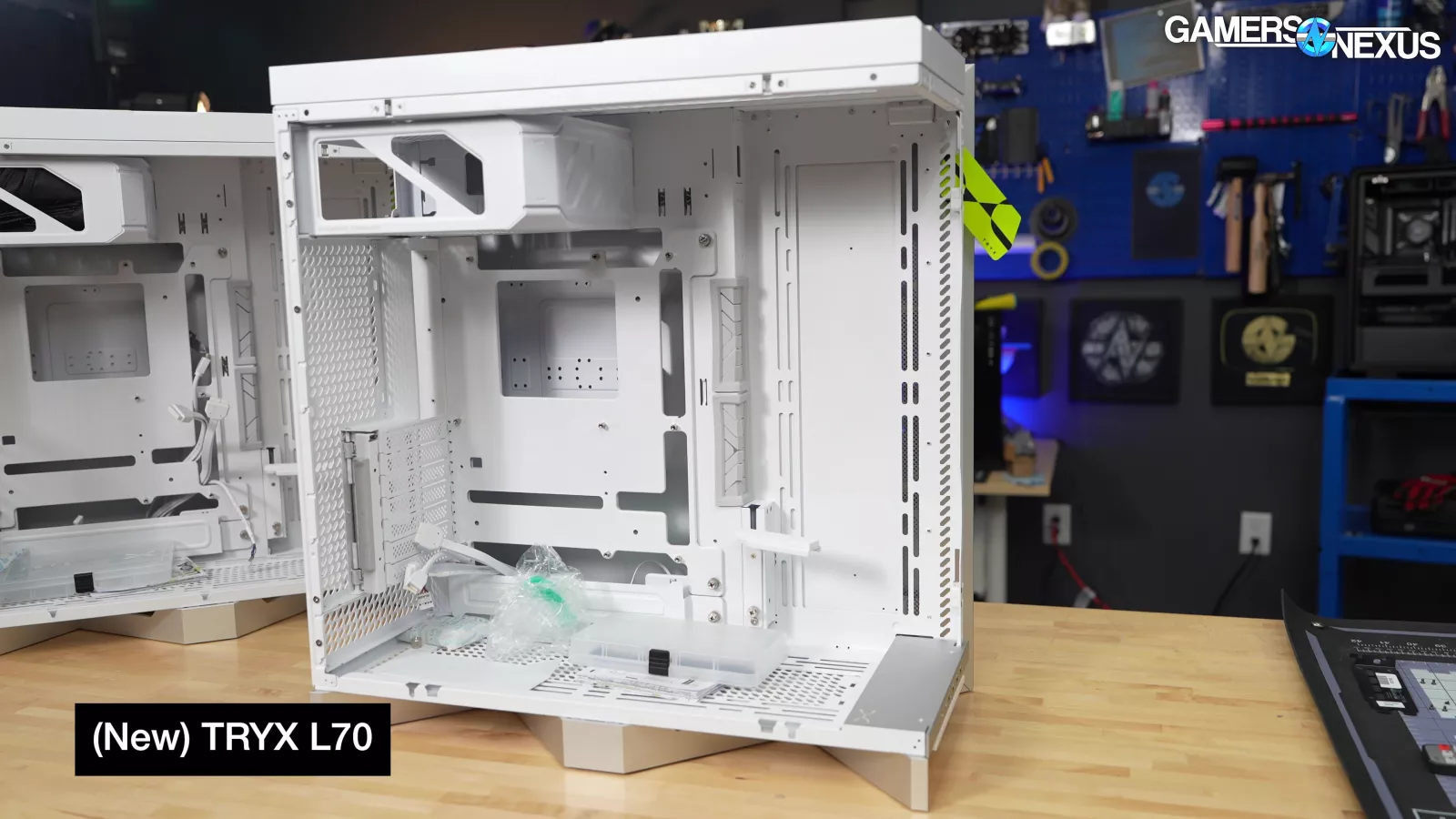
We don't consider all of these screws optional, and we don't think they were inconspicuous, so this isn't a real change from our perspective.
One of our other original complaints had to do with I/O cables that weren’t long enough to be easily routed around the SSD bracket.
The updated L70 has a 750mm USB Type-C cable, which translates to about 10cm of additional usable length. Lengths for the other cables remain unchanged, but with our specific test bench hardware, all the cables are now able to reach. The 10cm extension fixes the issue.
The metal strip that extended the motherboard tray in the original L70 would block cable cutouts at either the top or the bottom of the motherboard depending on the case configuration. This was another major design oversight that had nothing to do with shipping.
In the updated model, the strip has been cut away so that audio, front panel, and fan connectors can fit around it at the bottom of the case. EPS12V cables have more room at the top of the case as well, although it's still a tight fit. But, these were good changes to something that was just a design problem.
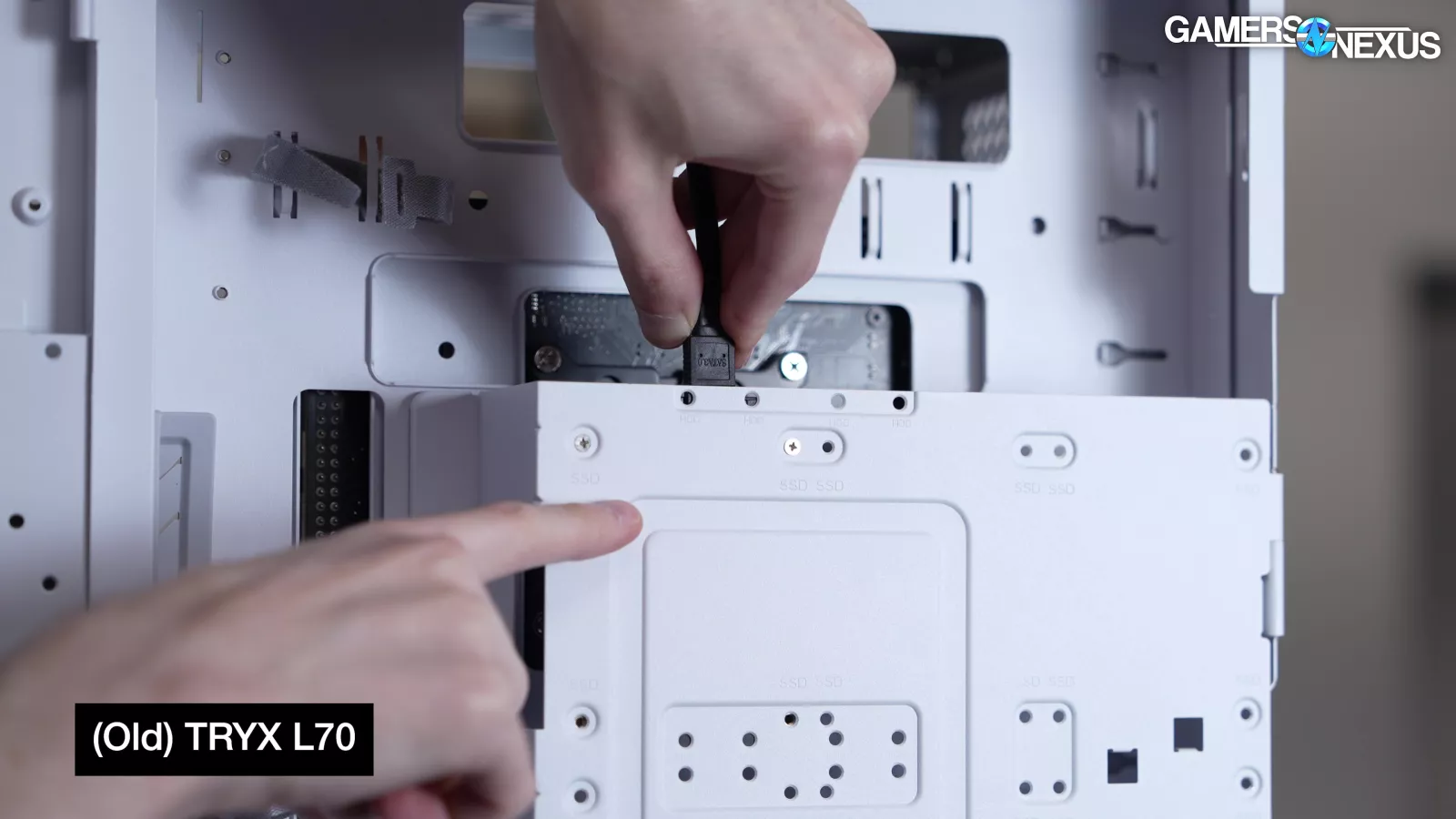
Another issue we found on the original was that SATA cables could catch on the edge of drive brackets.
It was as if no one had installed a 2.5” drive to test functionality in the original. Now, the mounting holes on the main drive bracket have been moved. This change fully fixes that issue.
The power button was another problem in the original, mostly because it had a sort of gross, squishy compression that felt like a design issue.
TRYX, at first, defended the power button design as an "anti-false touch function" to "avoid accidental presses due to its edge location," which was a response to our complaint about just how awful the button felt. But they decided to change it anyway, and it's now been updated to work the way it looks like it's supposed to. The PCB is still marked as revision 1.0, so the only material change appears to be the removal of a small shim behind the button. We prefer the new version and think it’s improved.

Cable grommets were also problematic on the original, mostly because they were easily ripped out during cable management.
The cable grommets have been molded from a stiffer material, likely a different durometer, and have been reshaped so that they're less likely to get dragged out by cables. This is a really subtle change, but it seems to have fixed that issue. We’re satisfied with the fix.
We have mixed feelings about the changes made to the captive screws throughout the case.
Most (but not all) of the screws have been replaced with a new design with more thread, which TRYX says is "for more intuitive alignment, reducing misalignment and ensuring a smoother, faster installation." At the same time, a metal tab was added to the PSU enclosure "for enhanced PSU chamber stability and an easier PSU shroud installation," but none of these are things we mentioned or had difficulty with. They don’t fix the problems with the captive screw situation.
The misused captive screw that has to be un-captiv-ated to move the PSU shroud is still present, and the motherboard tray is unchanged despite TRYX's original intention to remove the embossing that can lead to the screws threading into both mating surfaces at the same time. They showed intent to fix it, then didn’t, and so we still end up with misused and mismatched captive and non-captive screws and screws that sometimes thread into multiple mating surfaces that just demonstrate issues with basics.
Finally, the easiest thing to fix: The typo.
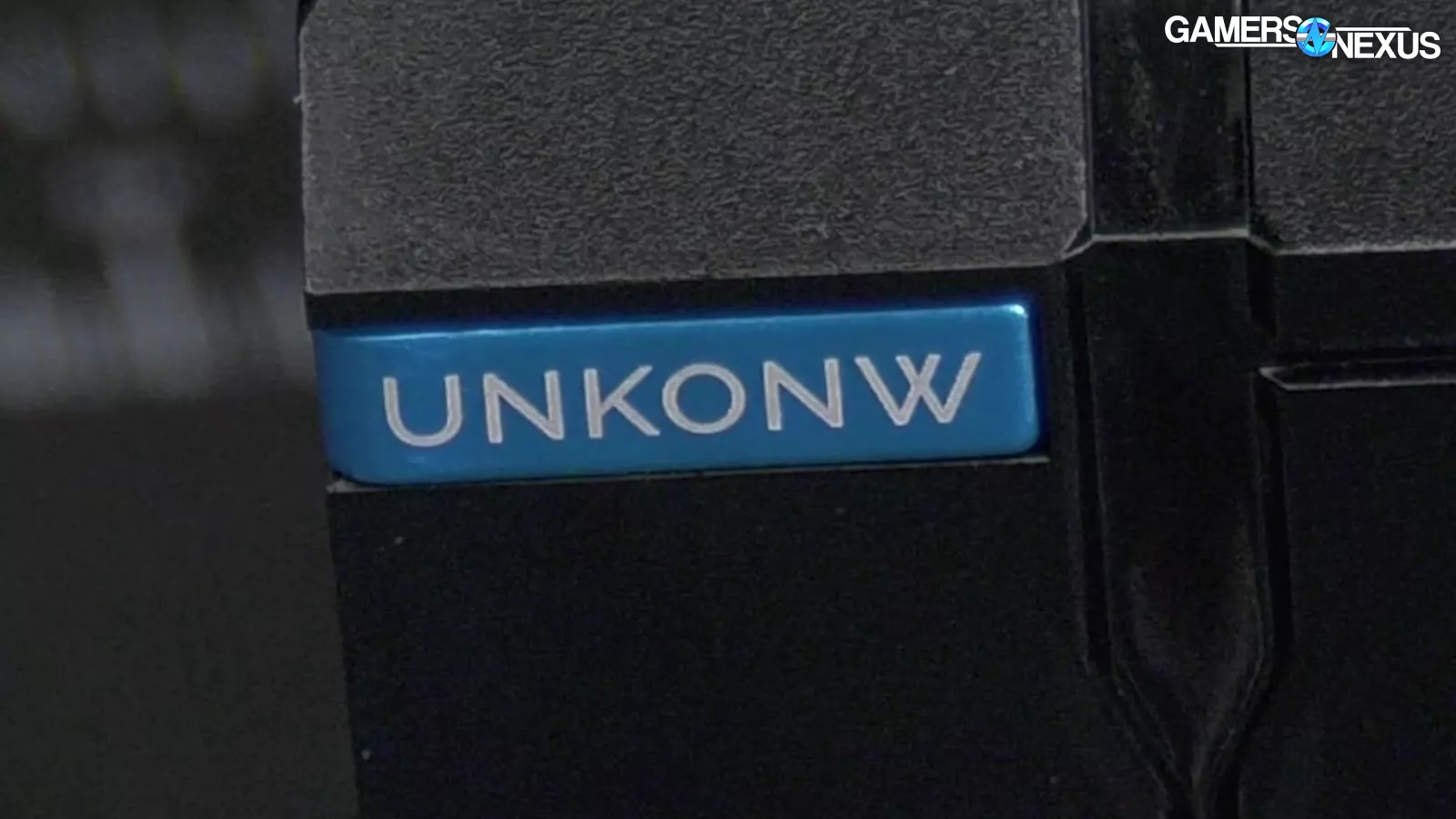
We talked last time about how companies really struggle with the word “unknown,” including Intel with Gunnir -- twice -- with its “Into the Unkonw” video card.
Tryx also did, as it had the "discovered an unknow" typo on the handle. This has been fixed by redacting an additional letter. That was extremely low on our list of complaints, but since TRYX had to rebuild every case anyway, it made sense to take care of it.
Additional Changes
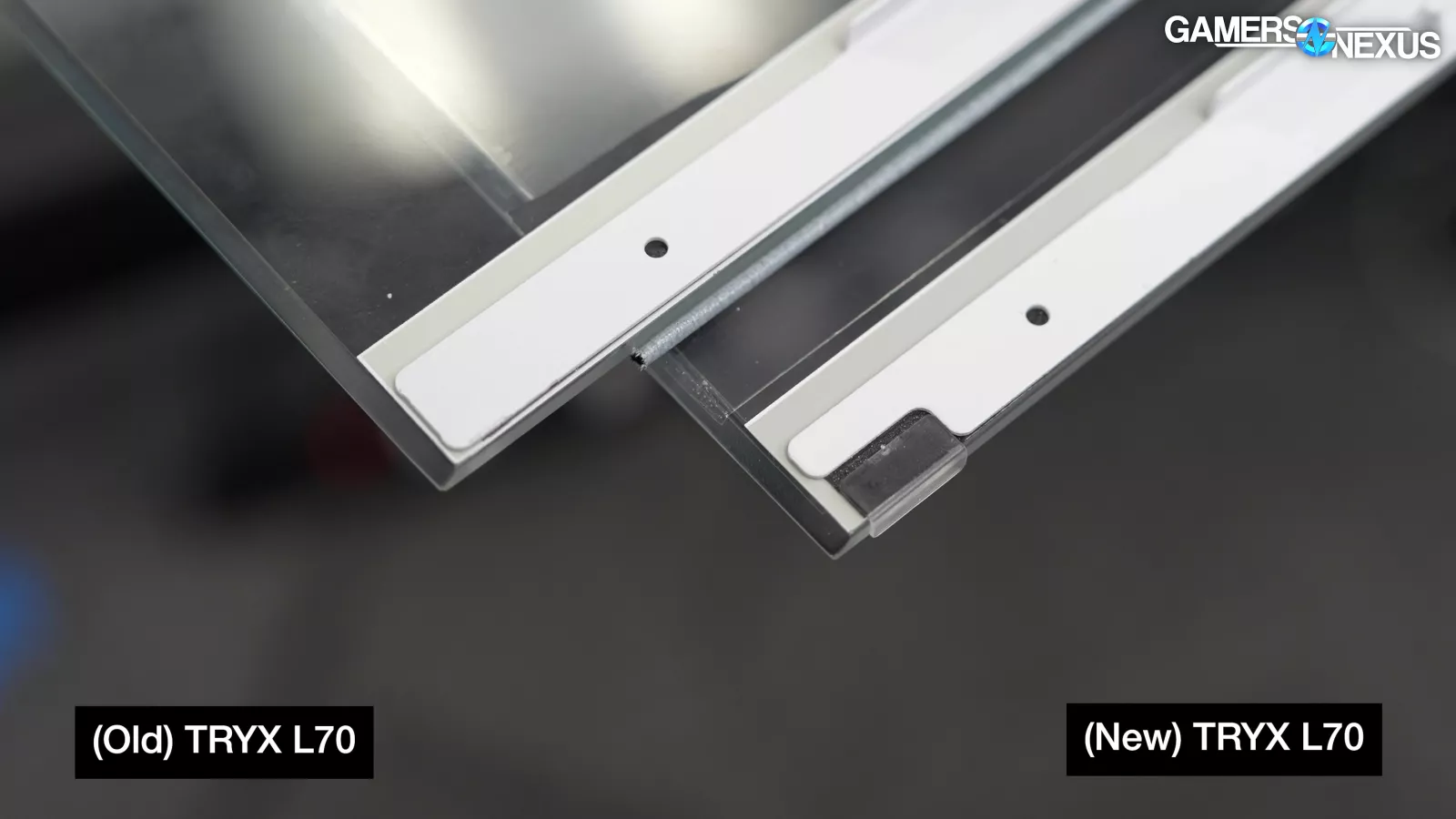
There were a couple of changes made by TRYX that weren't directly related to our review, which is a good sign. The ones reported by TRYX were that small transparent protectors were added to the bottom corners of the glass side panel.
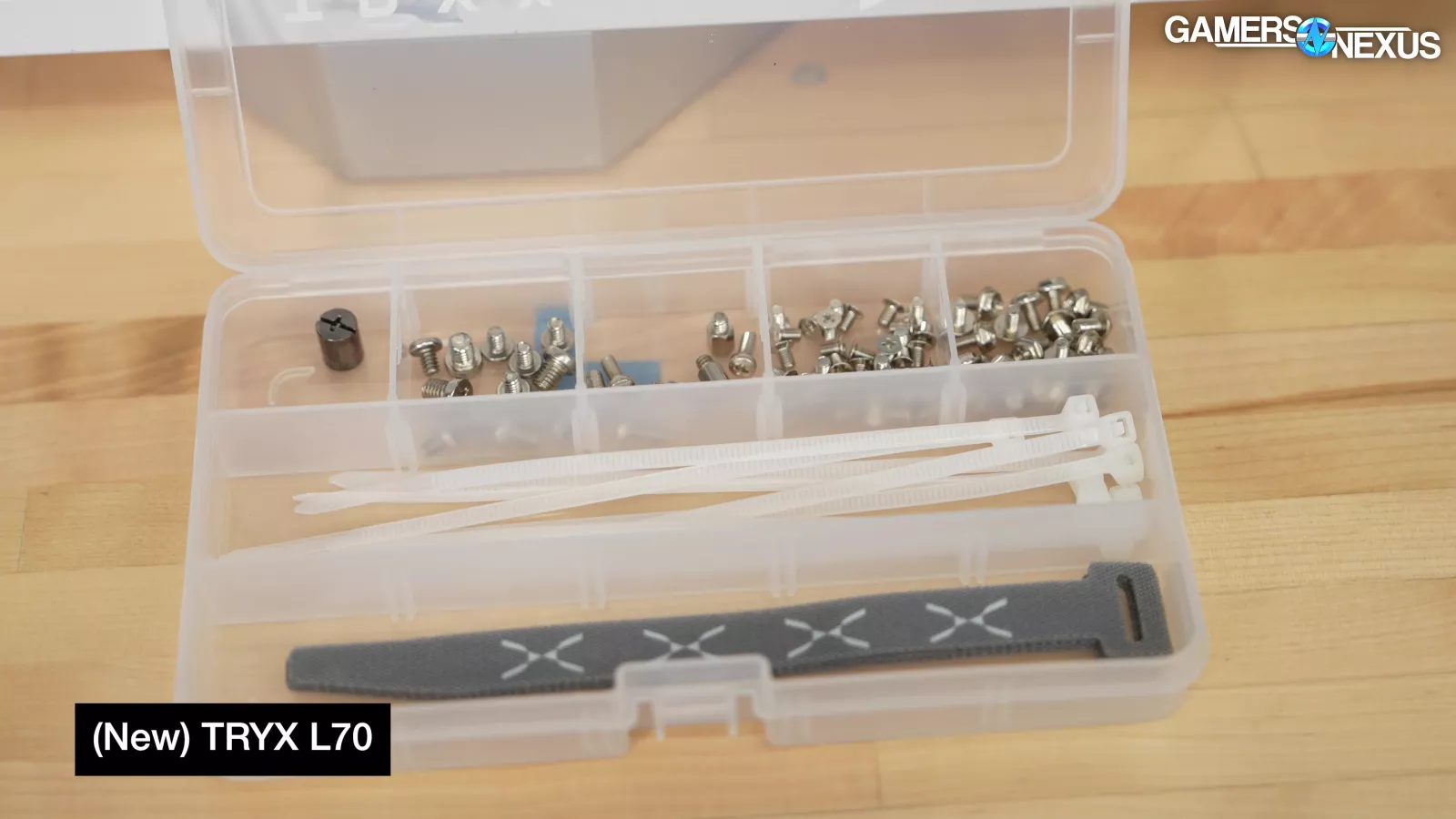
These are a nice touch that we appreciate. They also added eight HDD screws to the accessory kit (none were included previously) and they drilled four additional holes in the main drive bracket to improve HDD mounting compatibility.
Rejected Changes
Finally, there were some changes that TRYX opted not to make. It defended its choices.
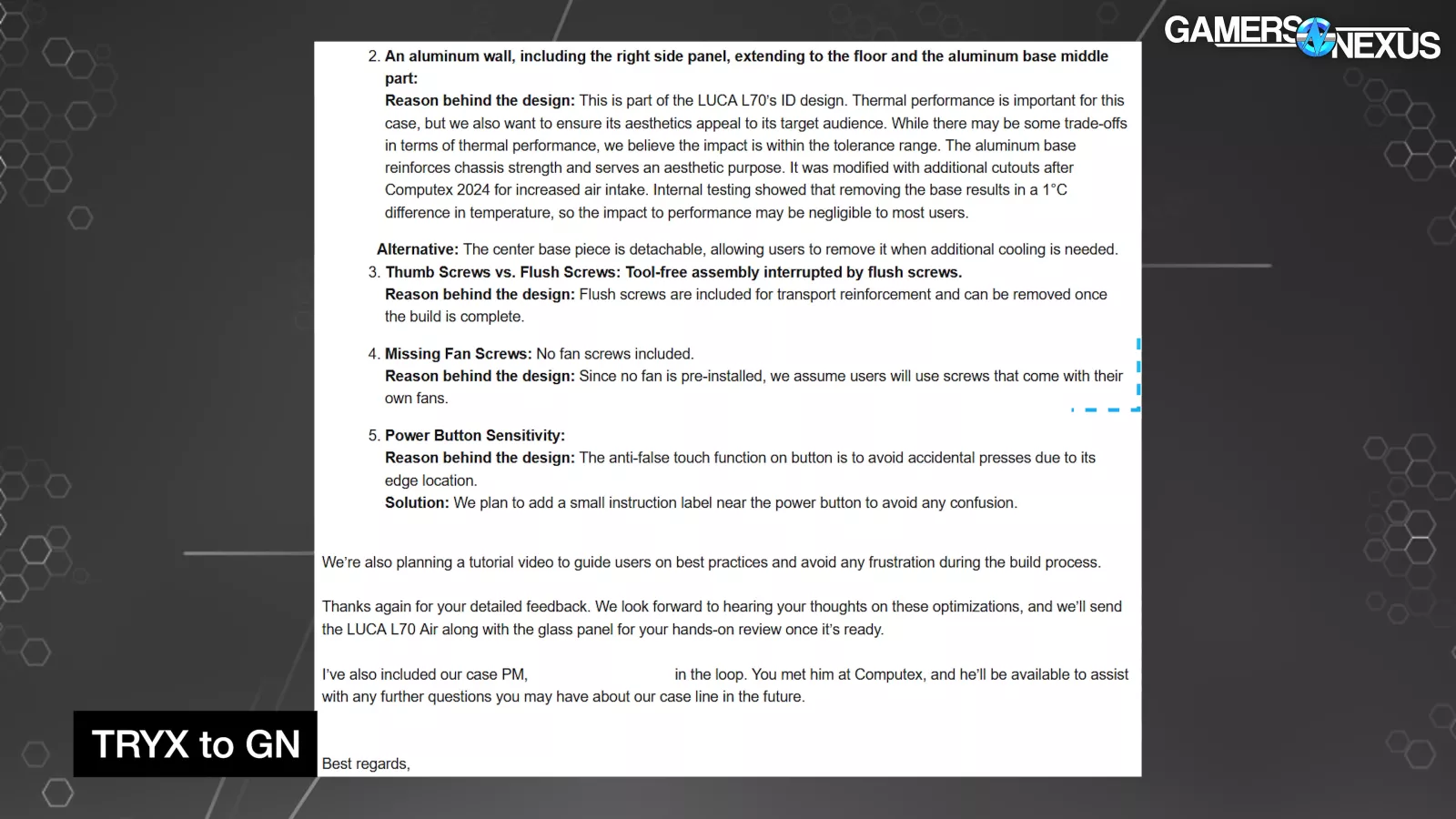
First off, the lack of fan screws: "Since no fan is pre-installed, we assume users will use screws that come with their own fans."
Next, the crowded bottom of the case layering a fan bracket, the steel mesh of the chassis itself with its own built-in fan mounts, a filter, and then the aluminum base that obstruct flow: "This is a modular design case, and we considered scenarios where users might swap the PSU positions to try different configurations. In such cases, the additional fan tray becomes useful. Users don’t need to unscrew fans or radiators—they can simply unscrew the captive screws and relocate the tray onto the top plate. In addition, this fan bracket allows easy installation of fans or radiators outside the chassis and can be offset to avoid interference with motherboard connectors [...] The detachable bracket allows users to remove it for enhanced airflow when necessary."
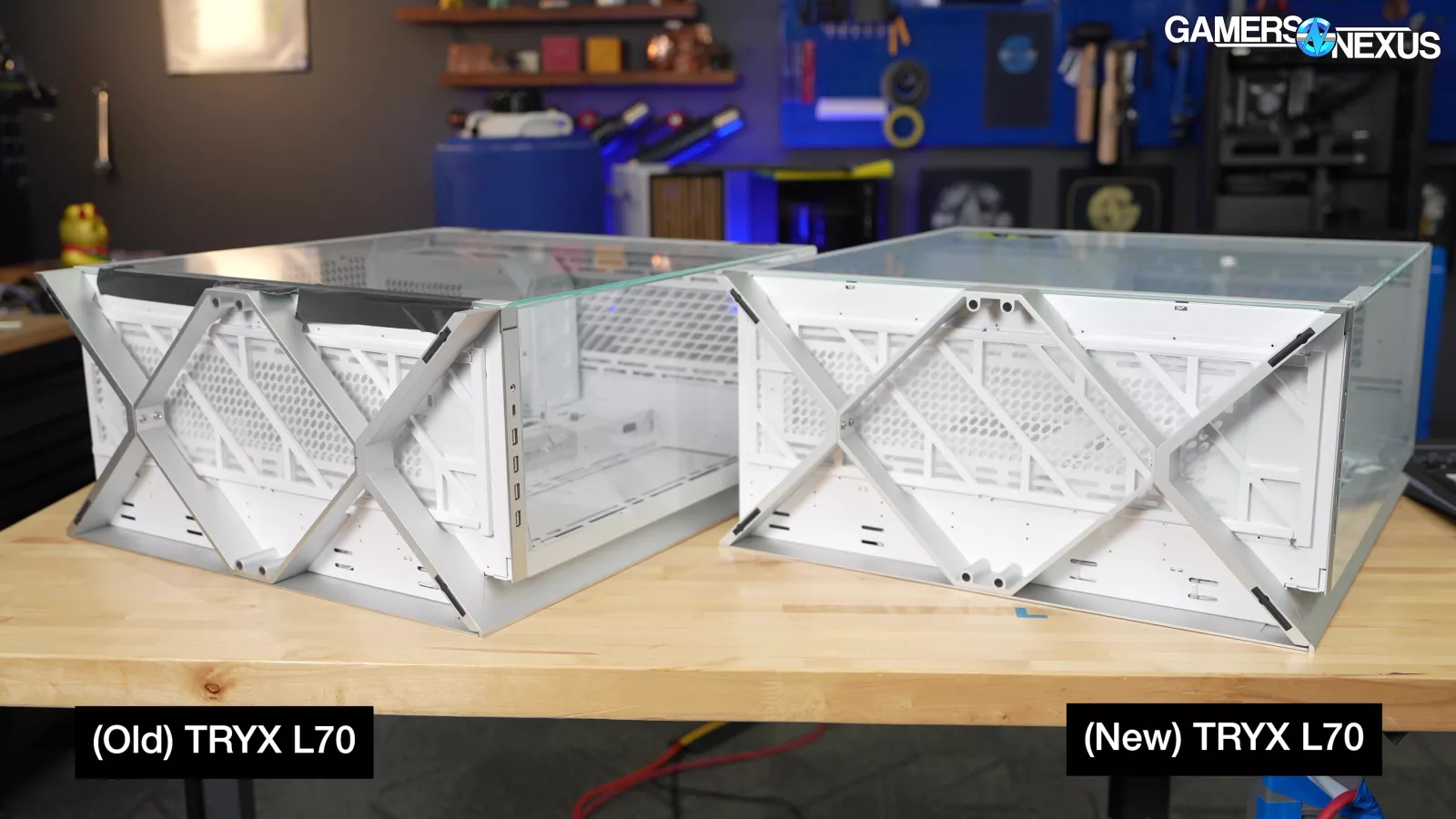
Sure, and we don't disagree with any of that -- but we'd still prefer a less cluttered design with better airflow. You can certainly choose to obstruct airflow however you want, and plenty of cases do that.
Regarding the aluminum side panel and base: "This is part of the LUCA L70’s ID design. Thermal performance is important for this case, but we also want to ensure its aesthetics appeal to its target audience. While there may be some trade-offs in terms of thermal performance, we believe the impact is within the tolerance range. The aluminum base reinforces chassis strength and serves an aesthetic purpose. It was modified with additional cutouts after Computex 2024 for increased air intake. Internal testing showed that removing the base results in a 1°C difference in temperature, so the impact to performance may be negligible to most users."
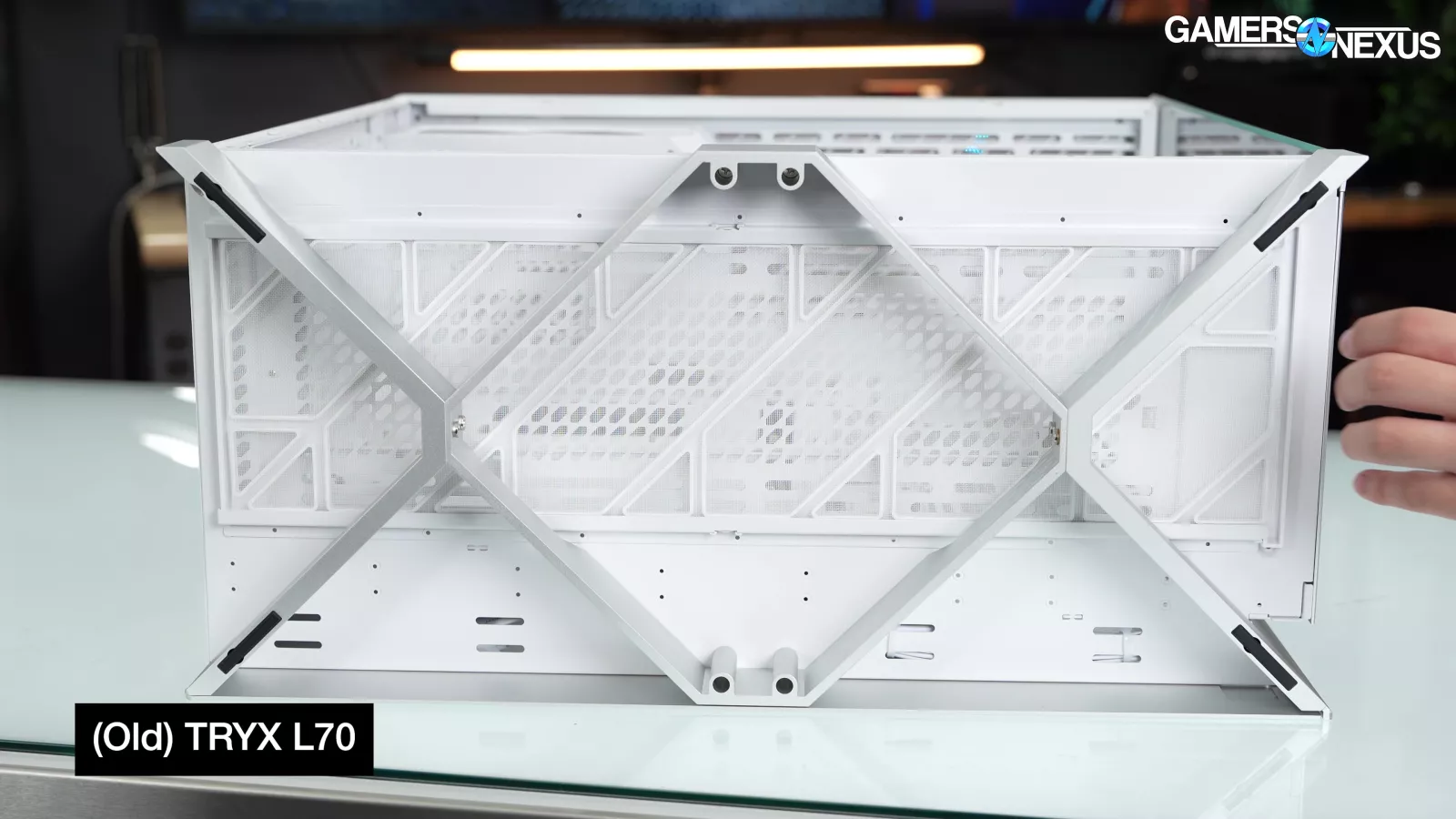
We also saw approximately the same 1°C difference, but our interpretation was that the bottom vent is restricted even without the aluminum base. Otherwise, this statement basically aligns with what we said in our review. This version of the L70 is sold based on how it looks more than how it performs, and we'll hold the mesh-fronted version of the case to a higher thermal standard.

TRYX also stated that “The center base piece is detachable, allowing users to remove it when additional cooling is needed.” This is technically true but not worth considering.
The cable cover/SSD mount towards the front of the case doesn't fit drives well in any configuration. This was something else we had complained about. TRYX made no changes here, but stated that "in most scenarios, we recommend using the bracket behind the motherboard tray to mount SSDs, while the bracket to the left primarily serves as a cable cover."
With our original sample, the bracket that fastened the PSU to the case was an extremely tight fit, the PSU itself was a tight fit, and 190mm PSUs (the max compatibility claimed) wouldn't have enough room to comfortably fit cables and would block the cable cutout on the top of the shroud. No changes were made here.
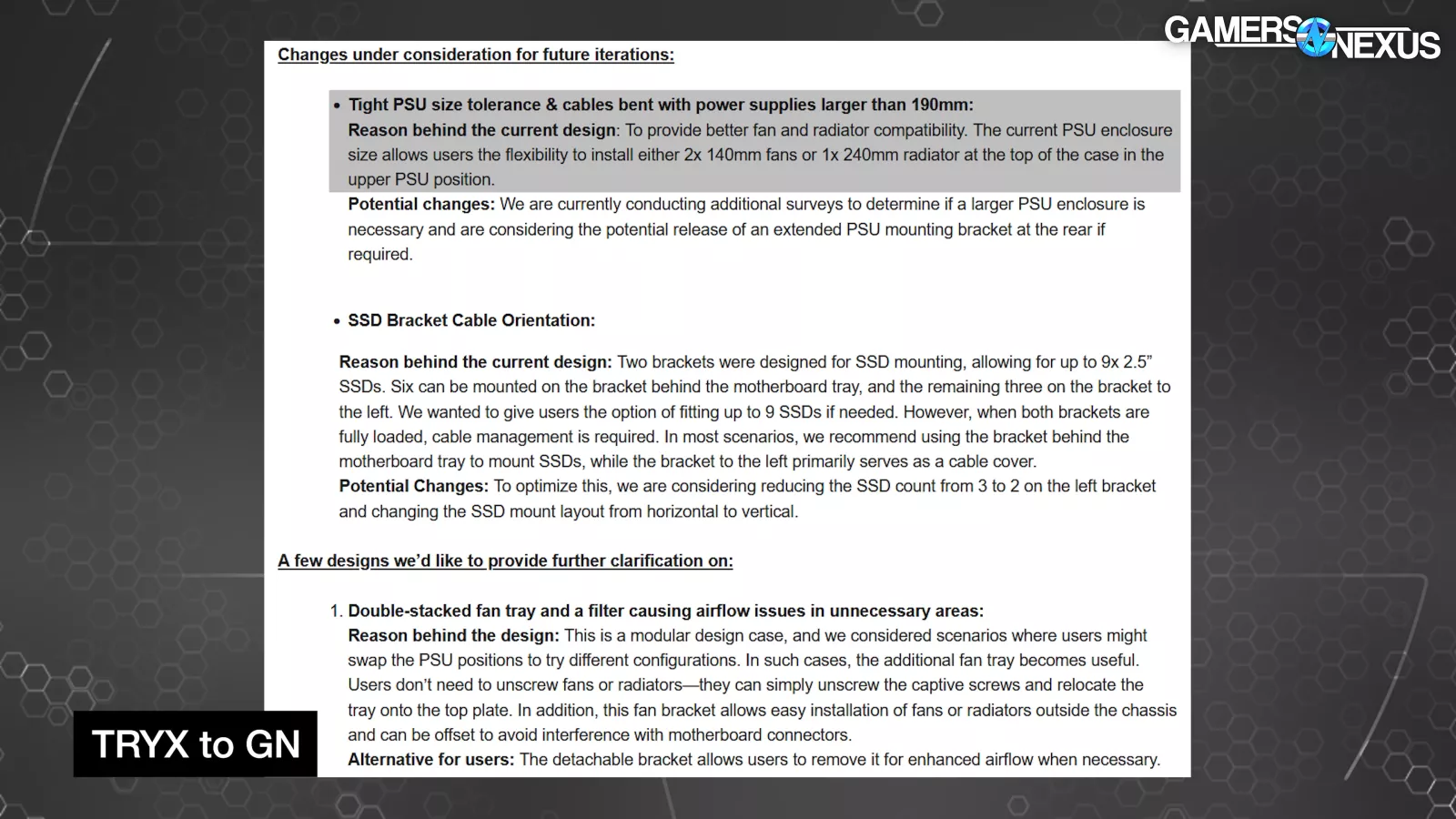
TRYX noted that the enclosure size was chosen to increase fan and radiator compatibility.
Conclusion

We appreciate that TRYX directly addressed nearly every criticism that we made and attempted to fix several of them.
The simple addition of the studs to the glass panels adds significant structural stability, and smaller quality of life changes like the power button, the rearrangement of SSD mounting holes, reshaping the motherboard tray extension, and lengthening the USB Type-C cable are all upgrades.
That said, these are patches to an existing design and they don't fundamentally alter the case, which still doesn't compete strongly at its price in terms of ease-of-use or thermals. $250 is more expensive than the HAVN HS420 (which we like), and it's on par with the similarly-styled ASUS ROG Strix Helios (which we hated, but is built to a higher standard and comes with fans) and the extremely expensive Fractal Meshify 3 Pro Ambience RGB.
We think there are a lot of way better cases at or under $250, but if you really like how the LUCA L70 looks, then this is a big improvement over what we saw last year. The company is at least listening.
